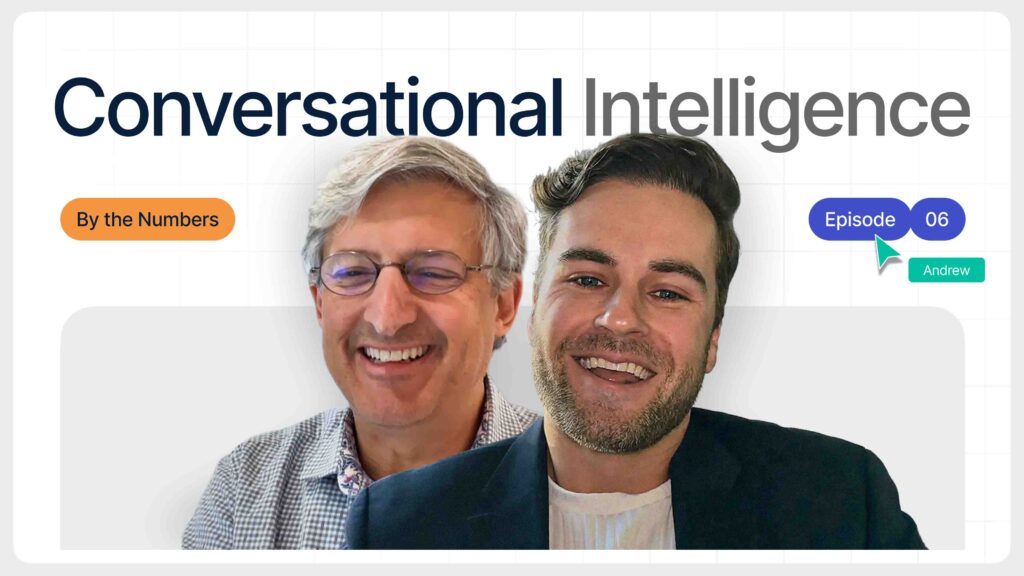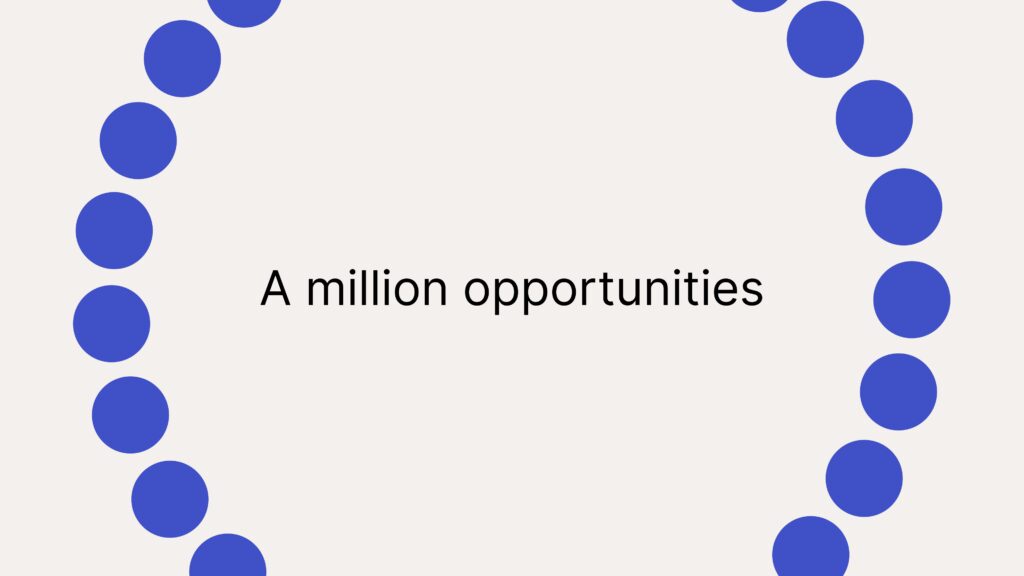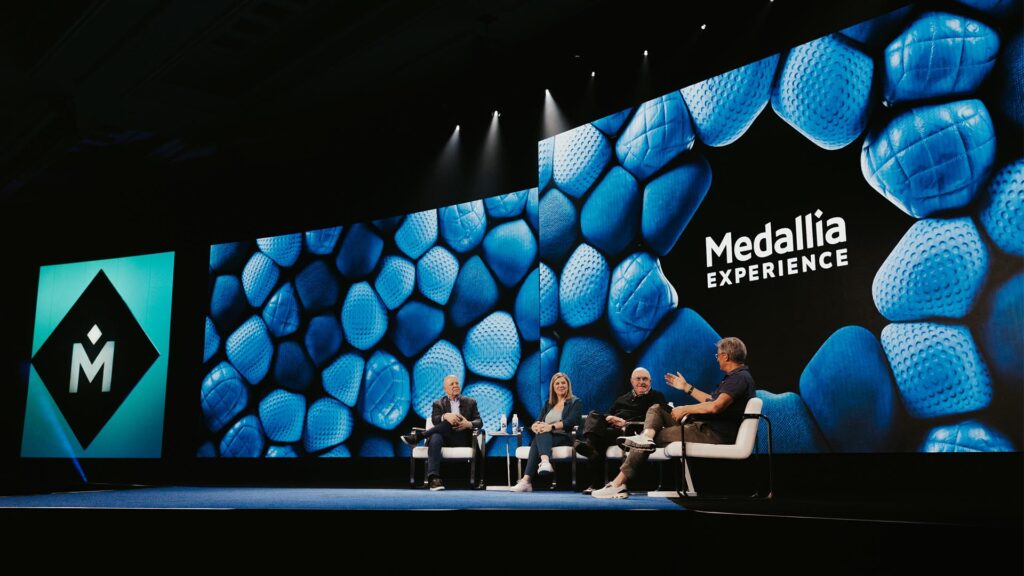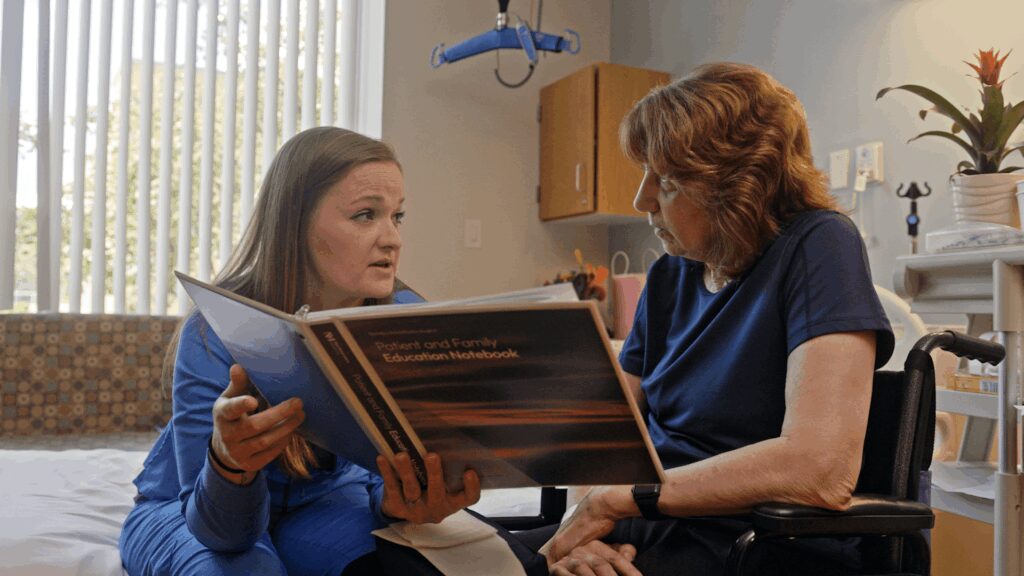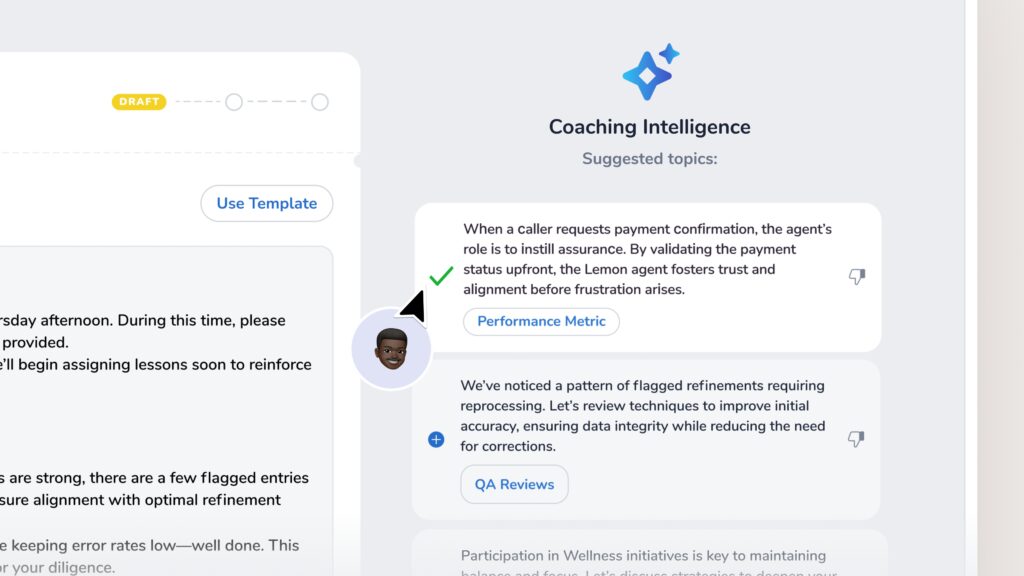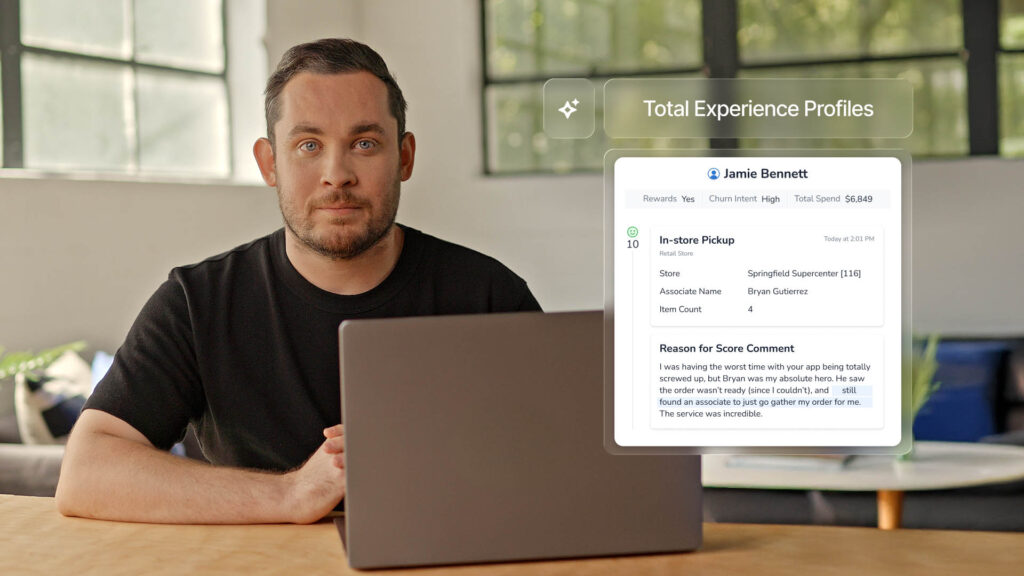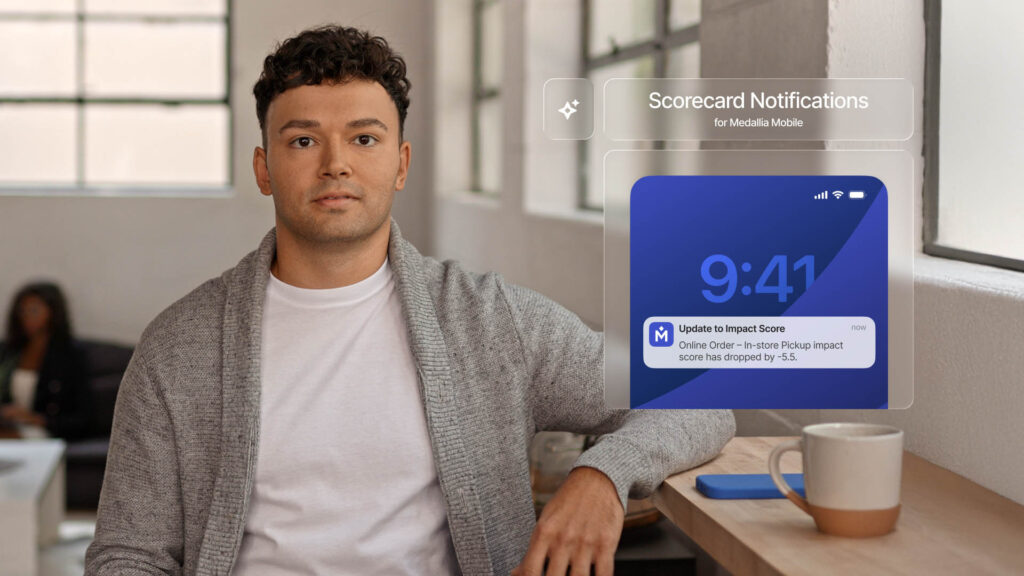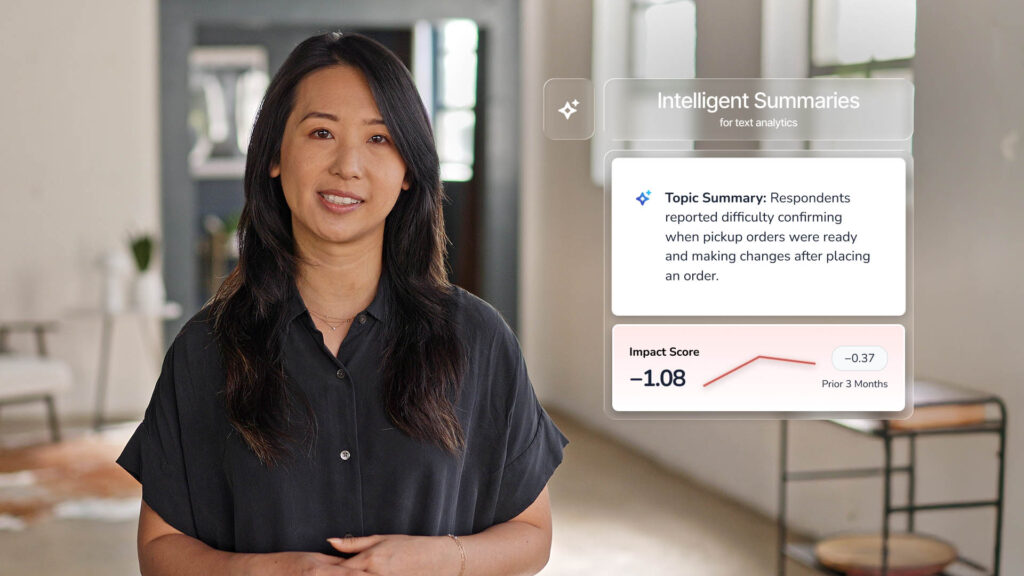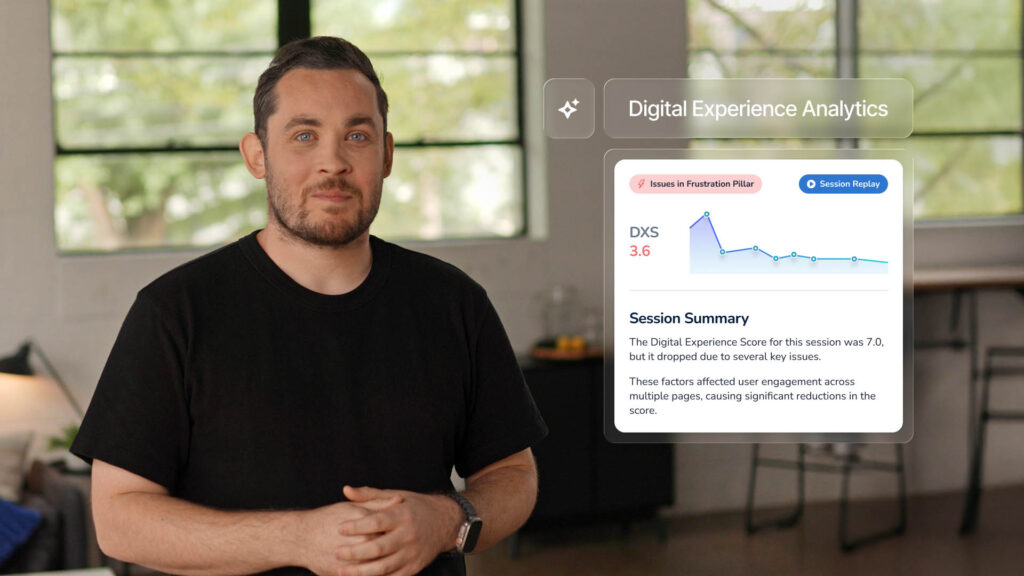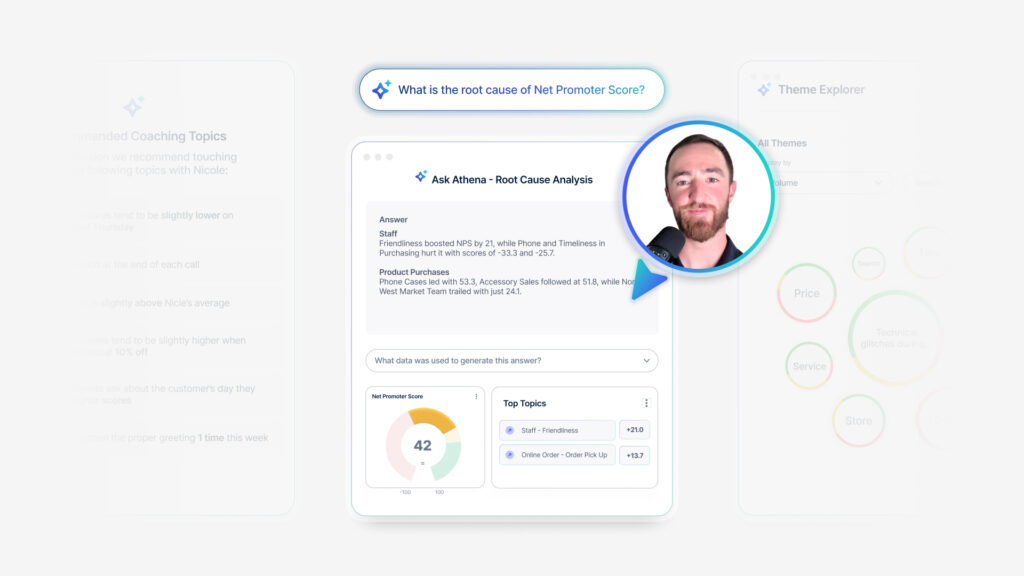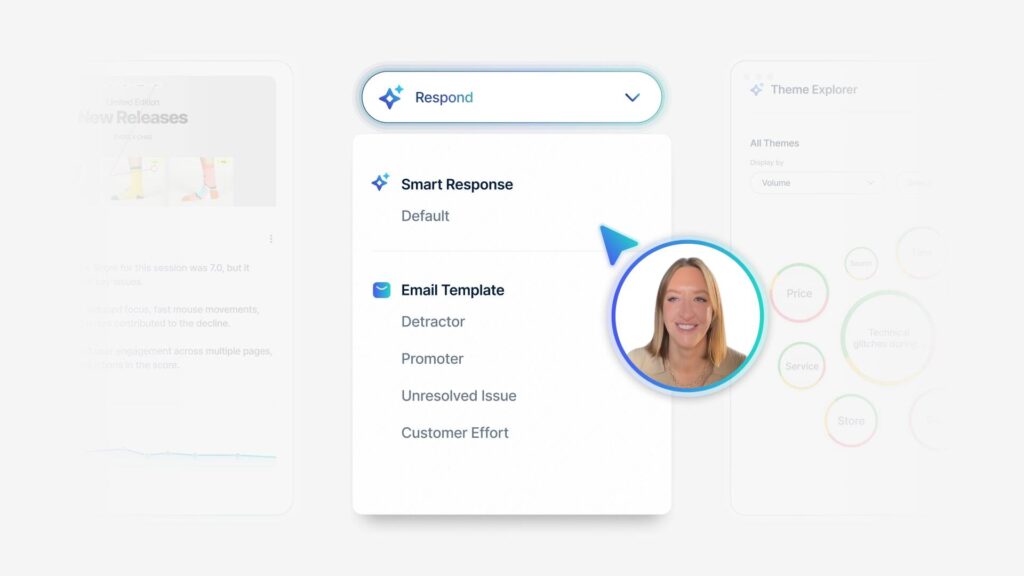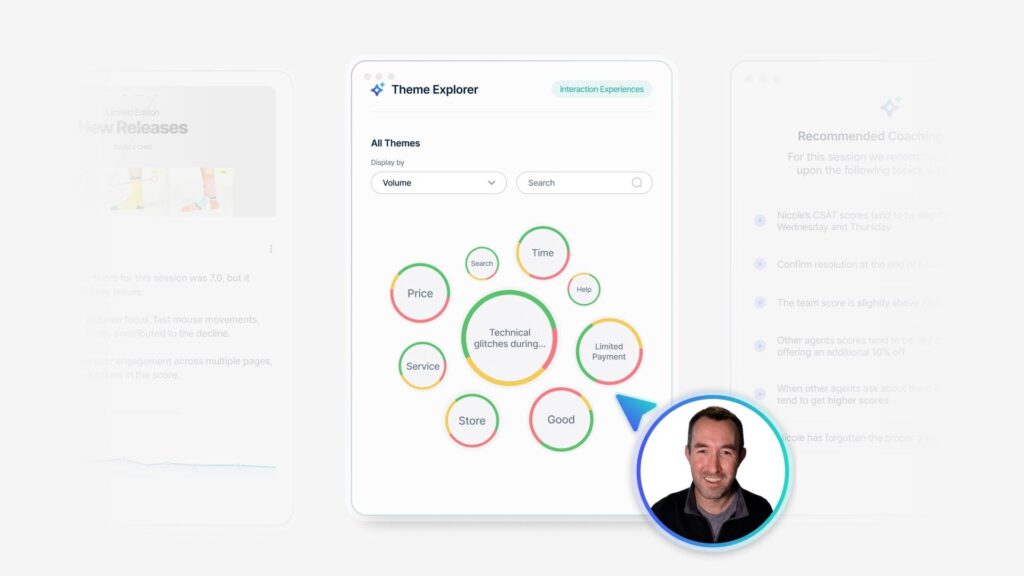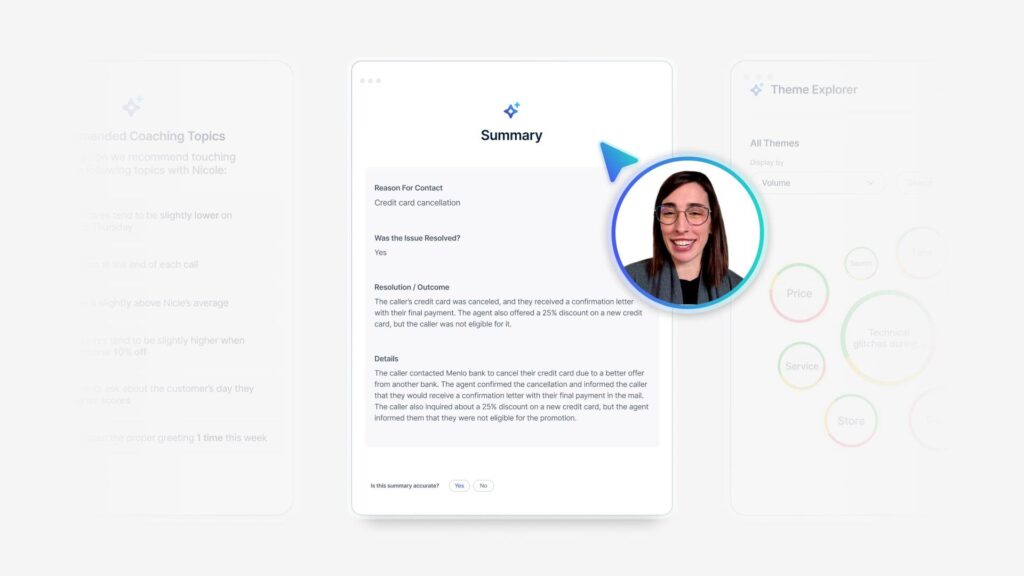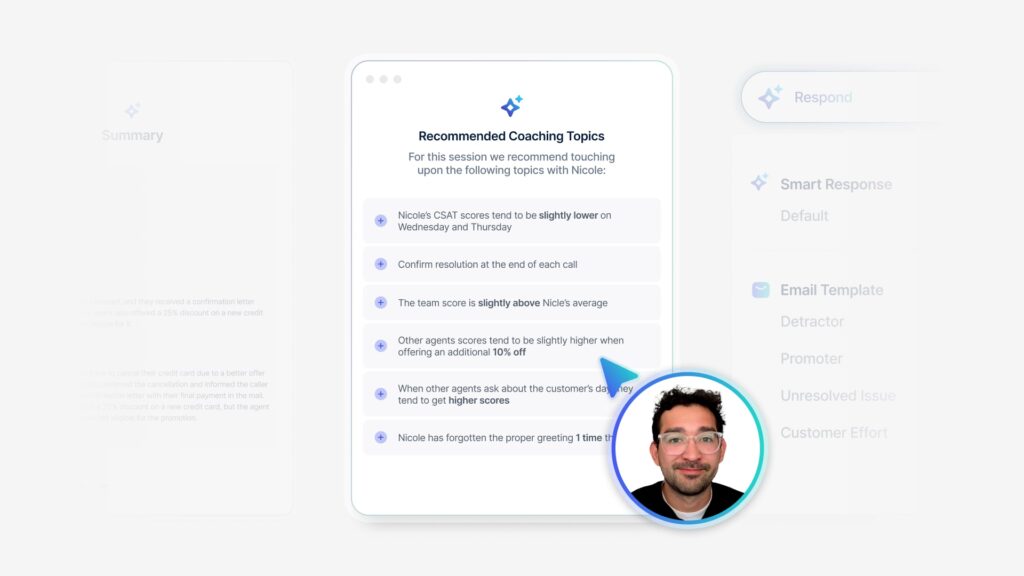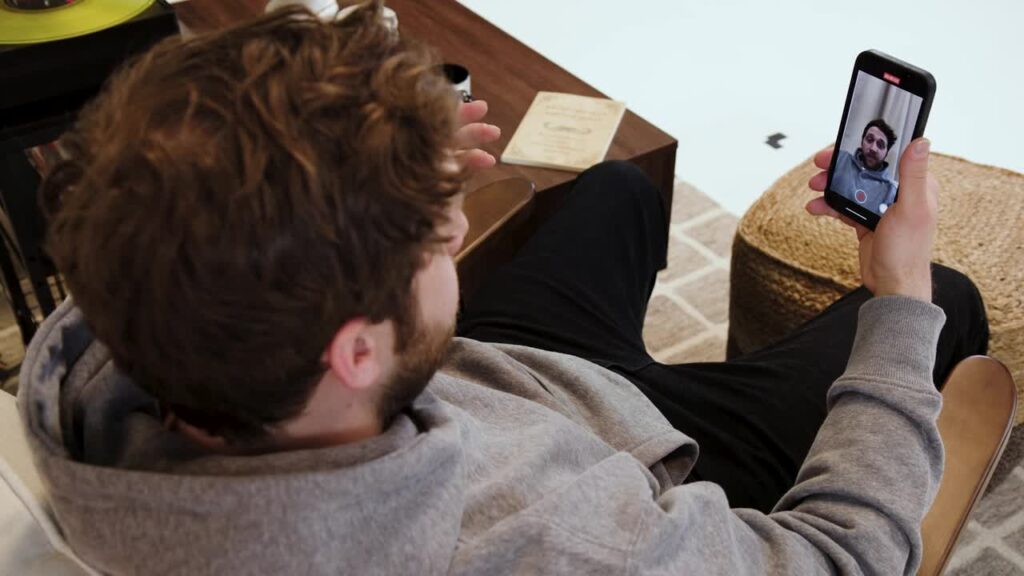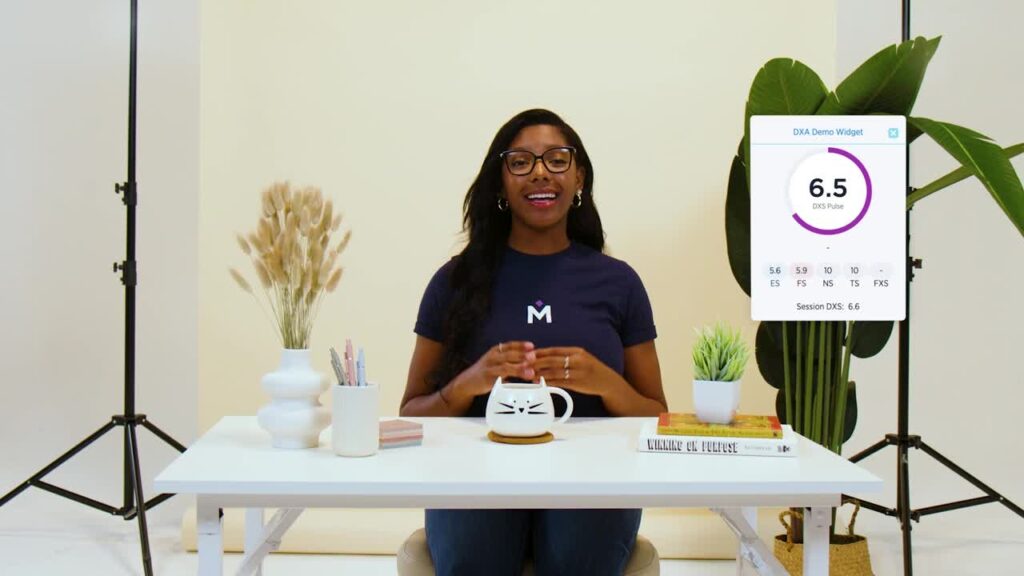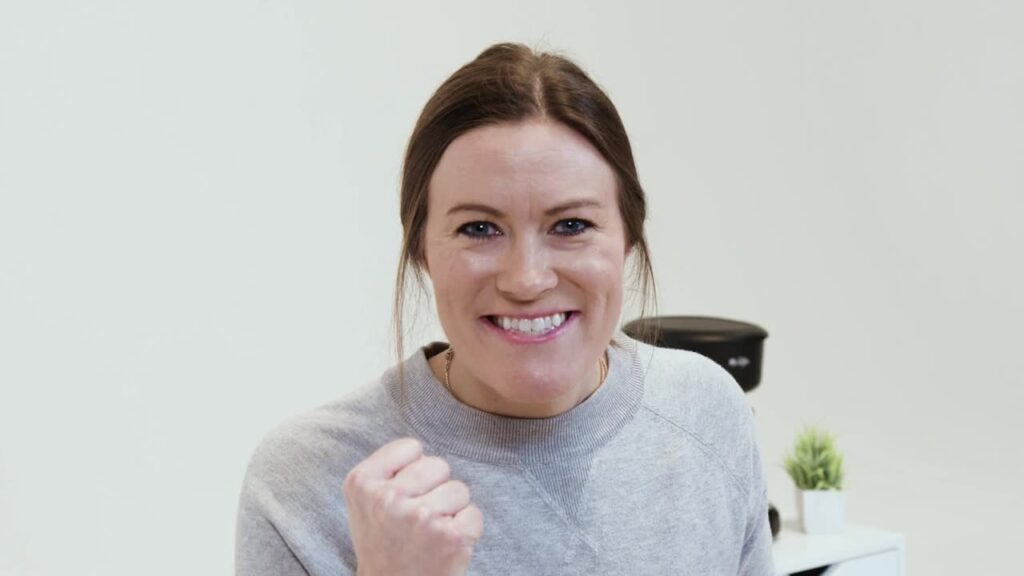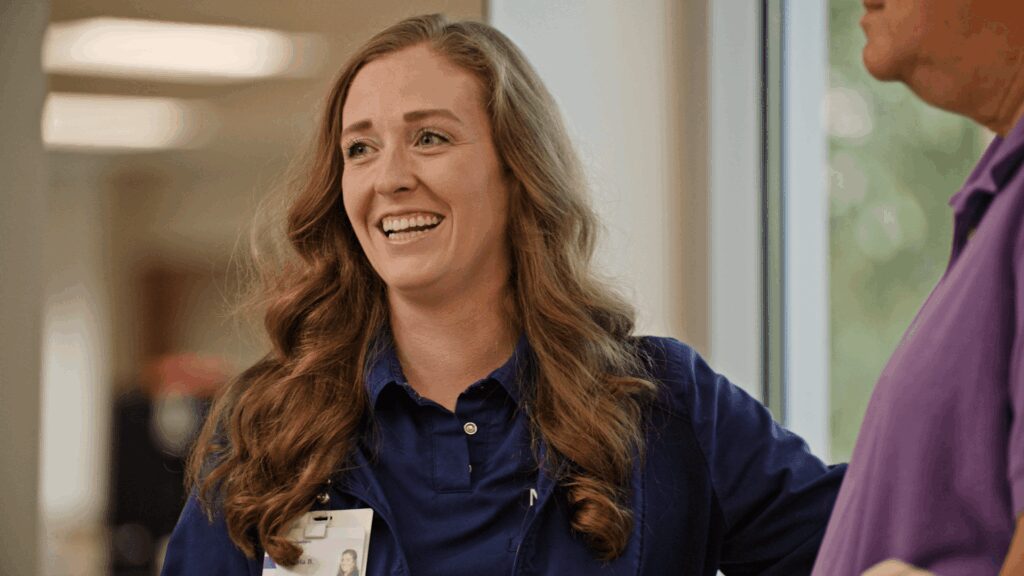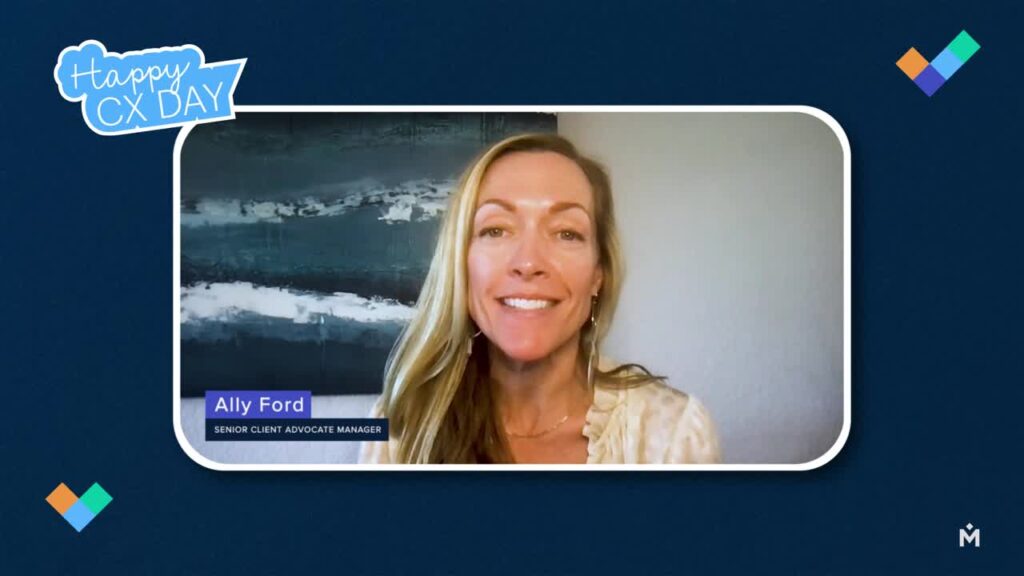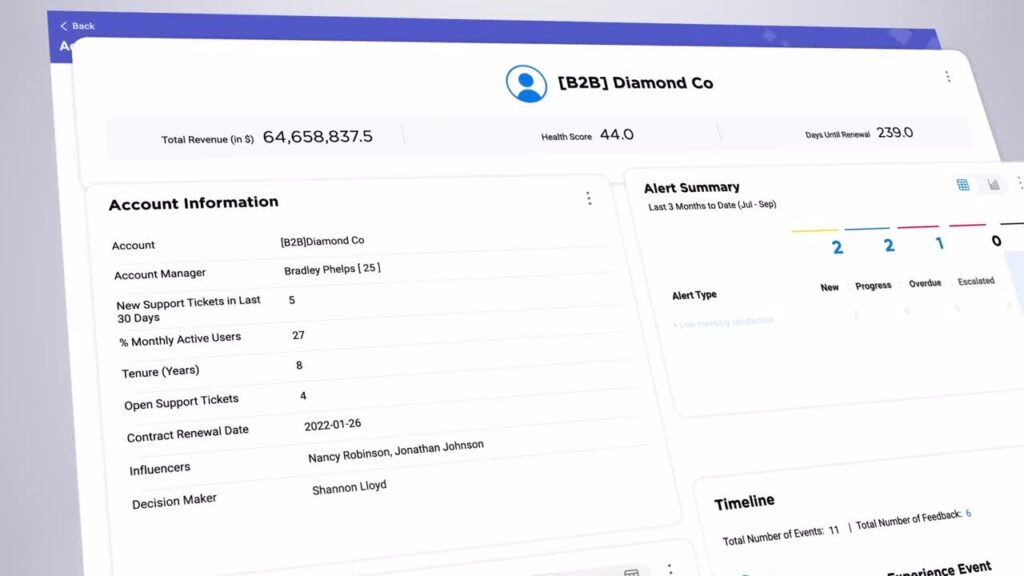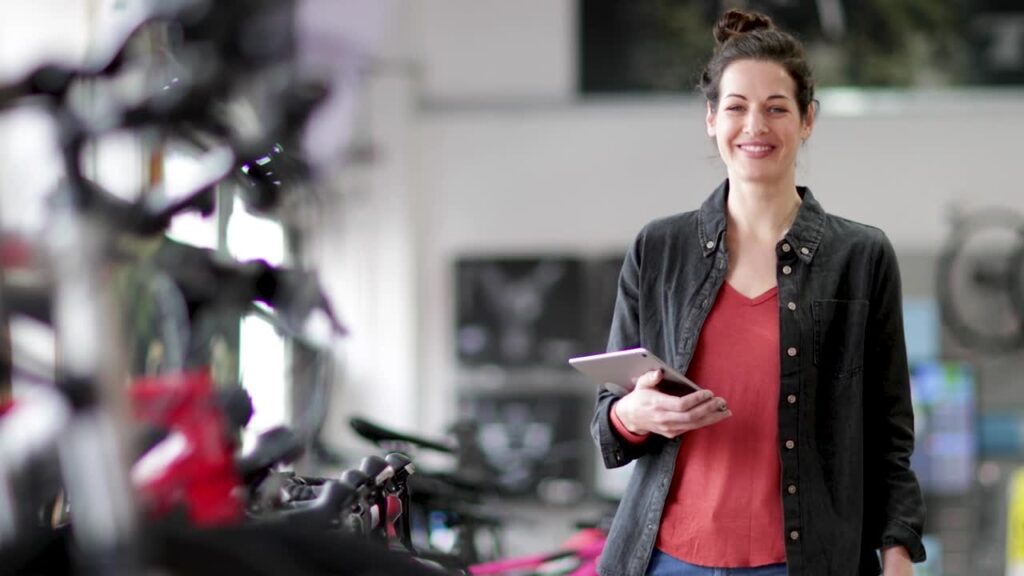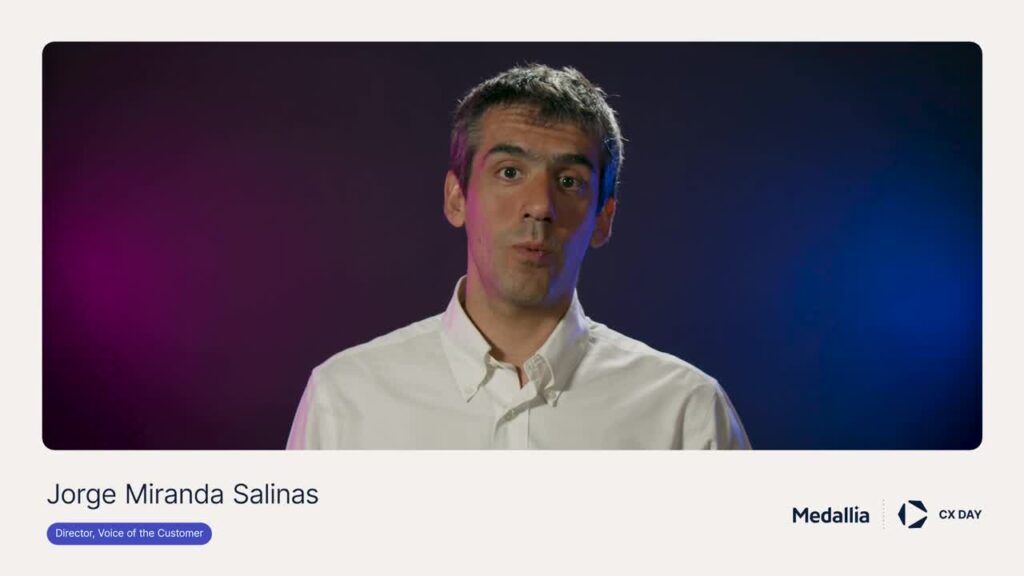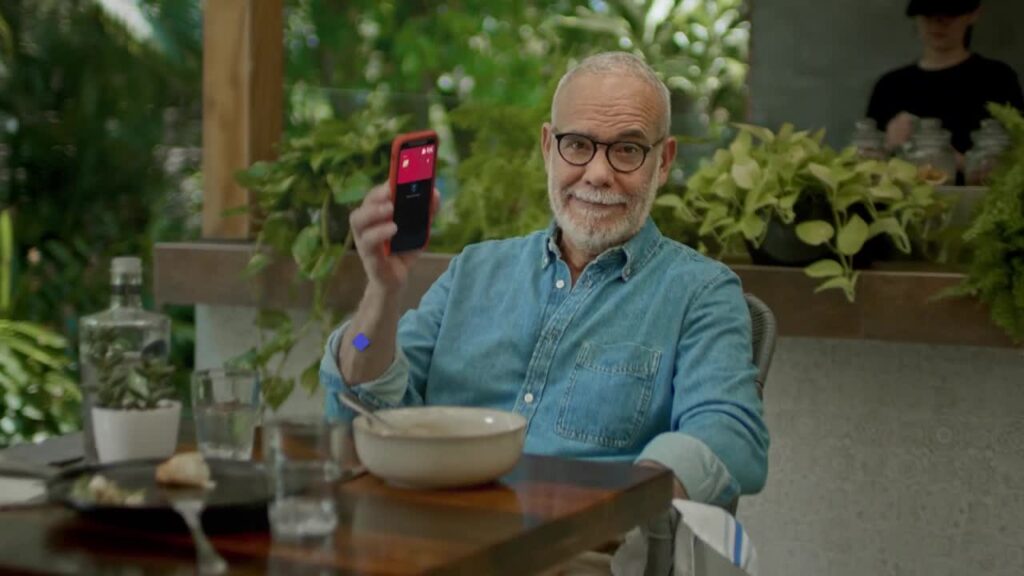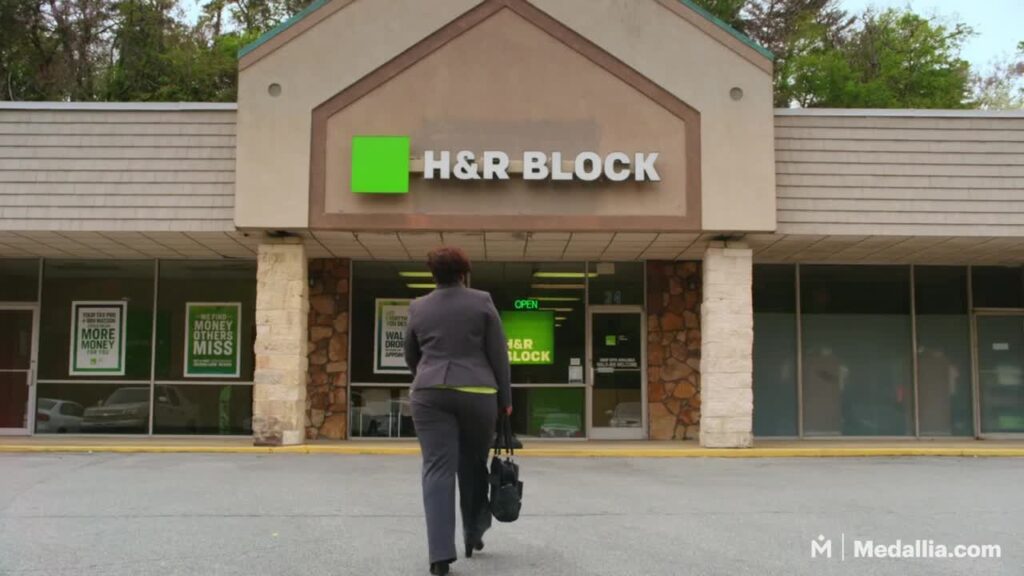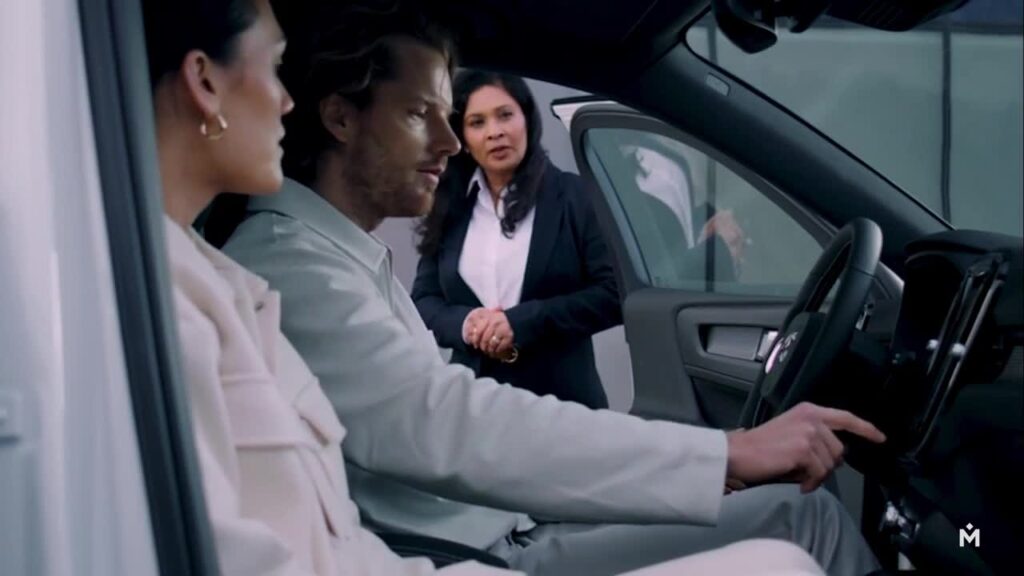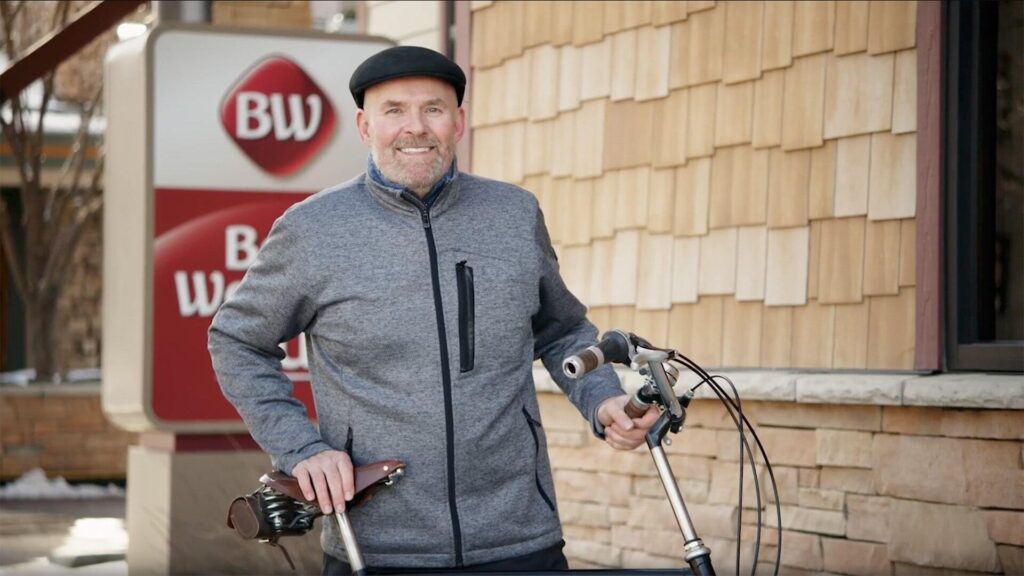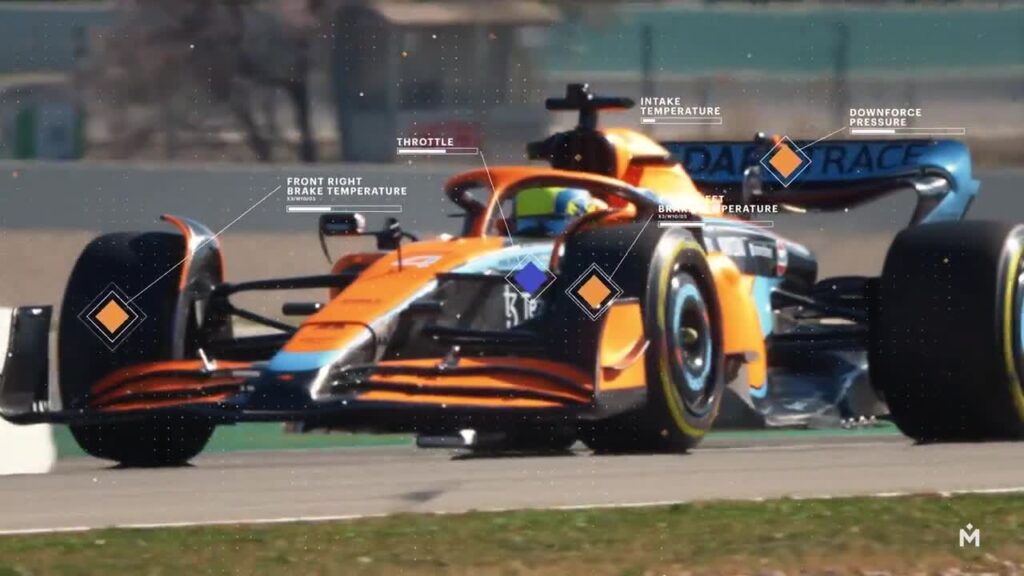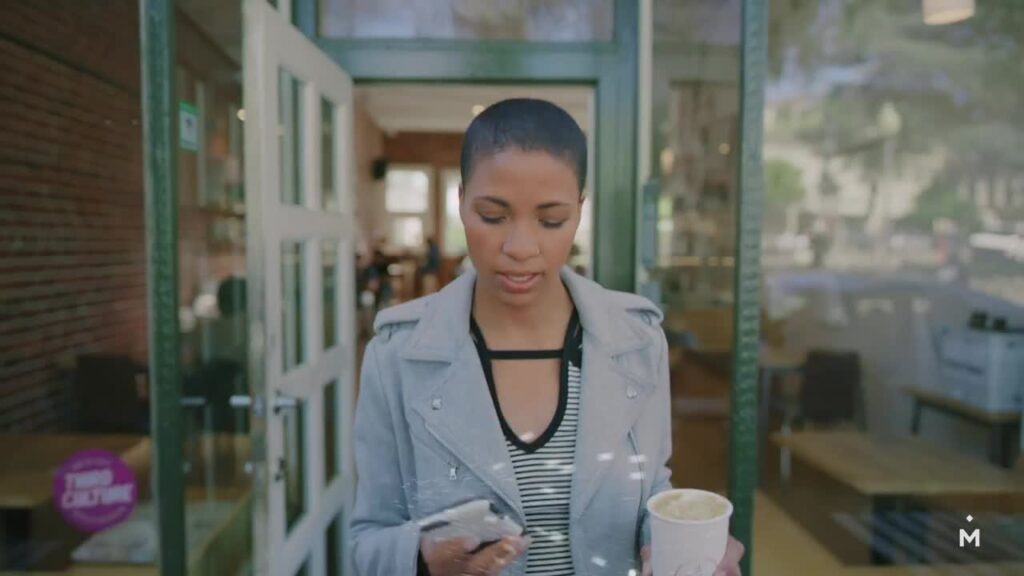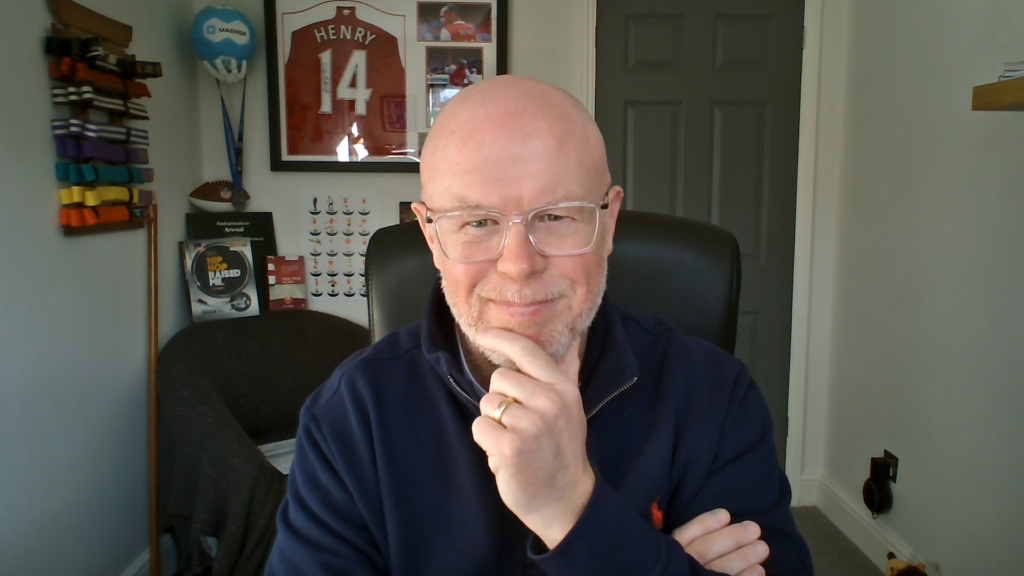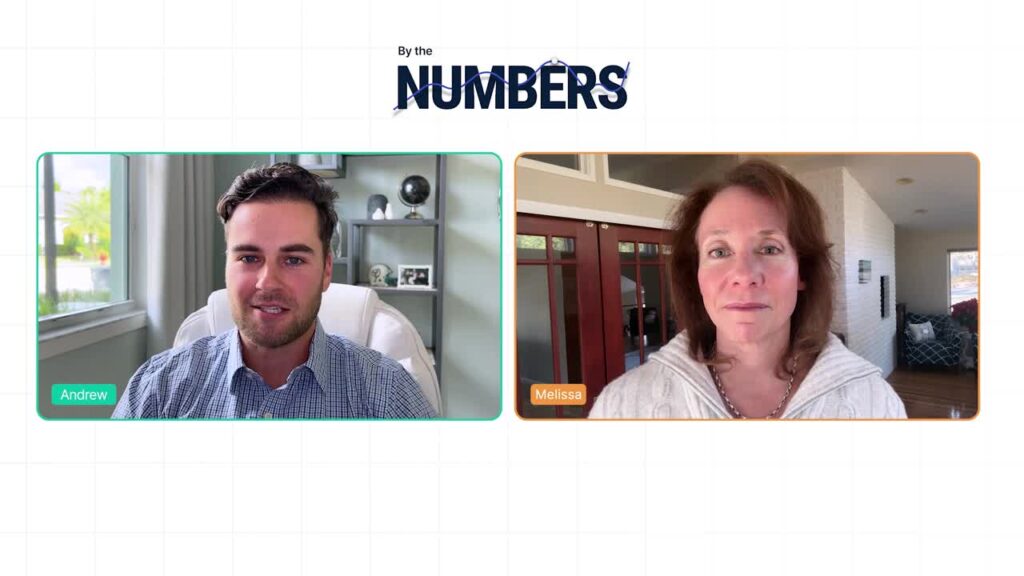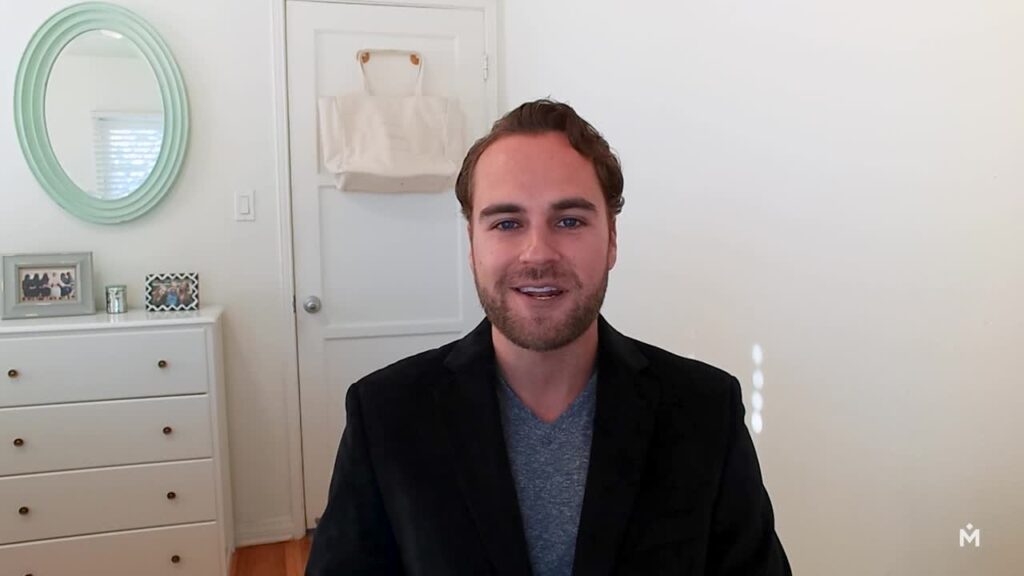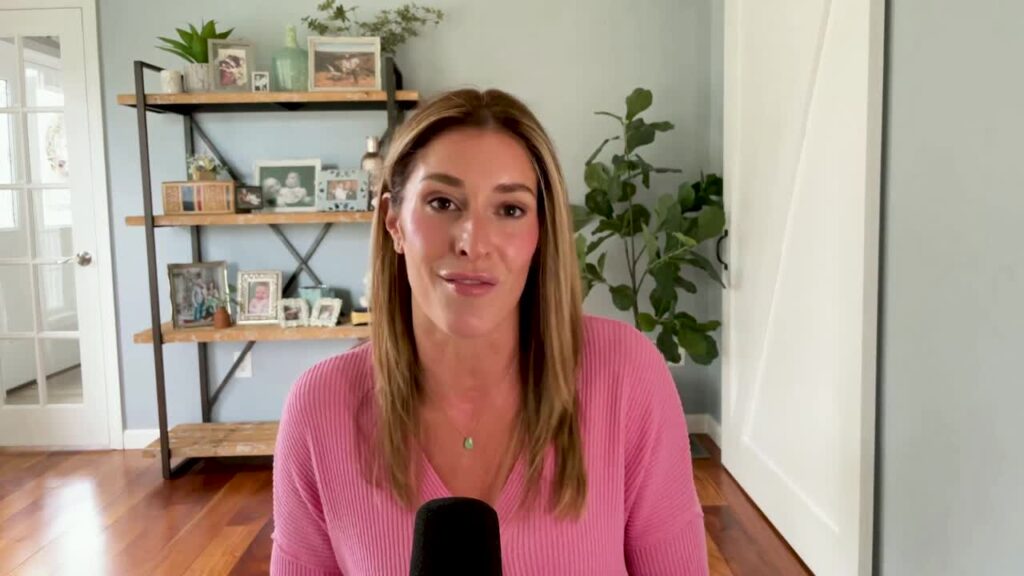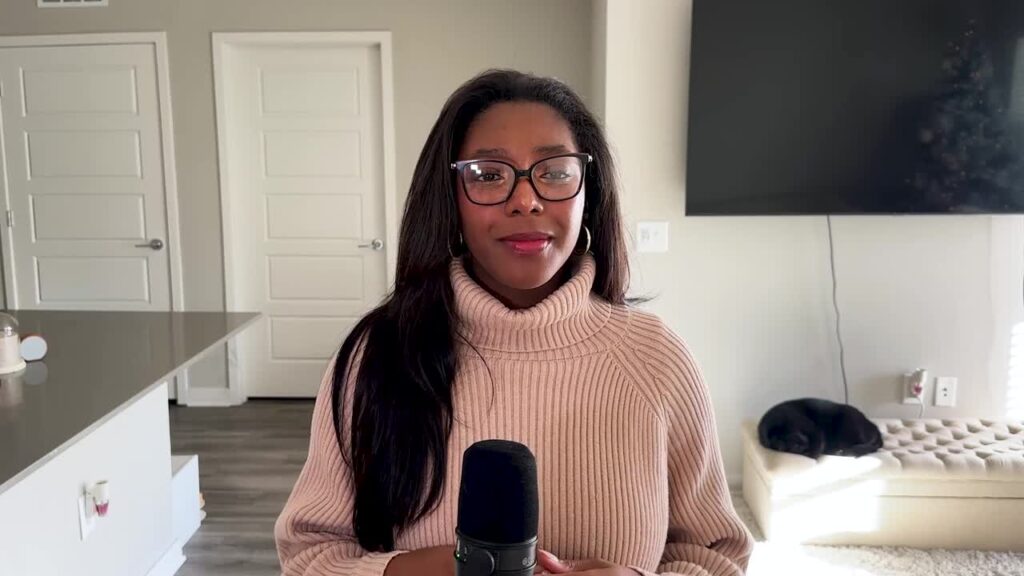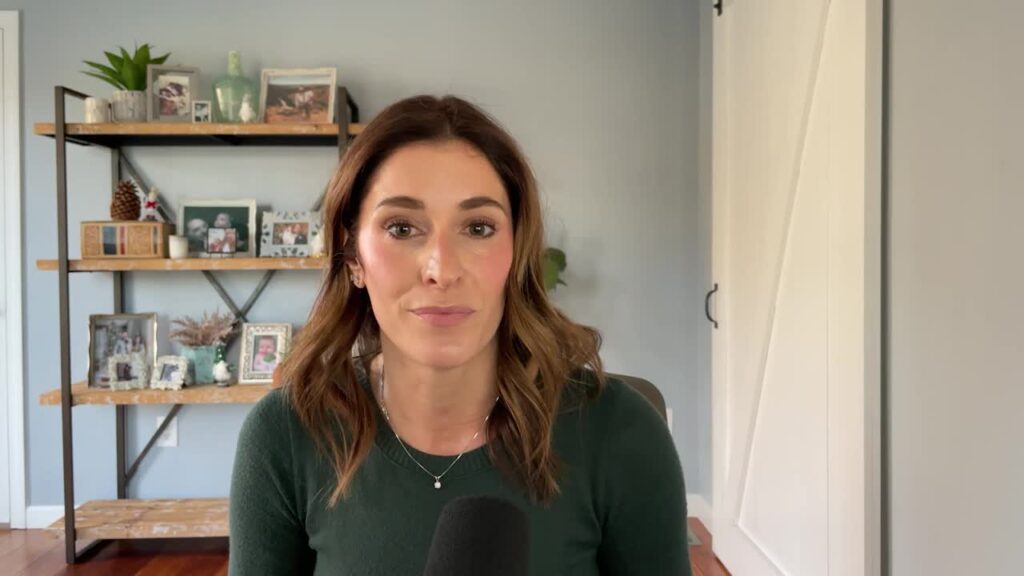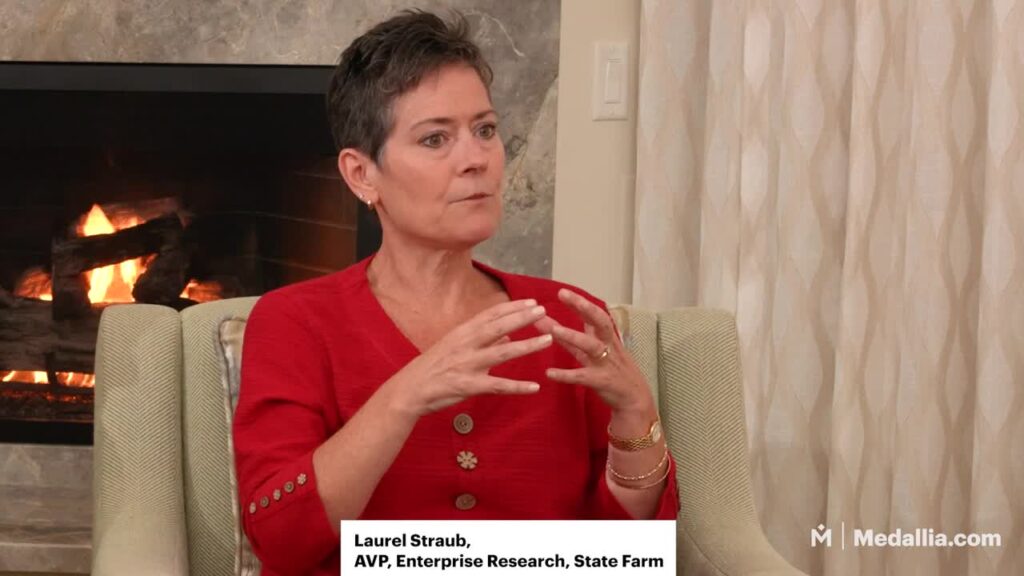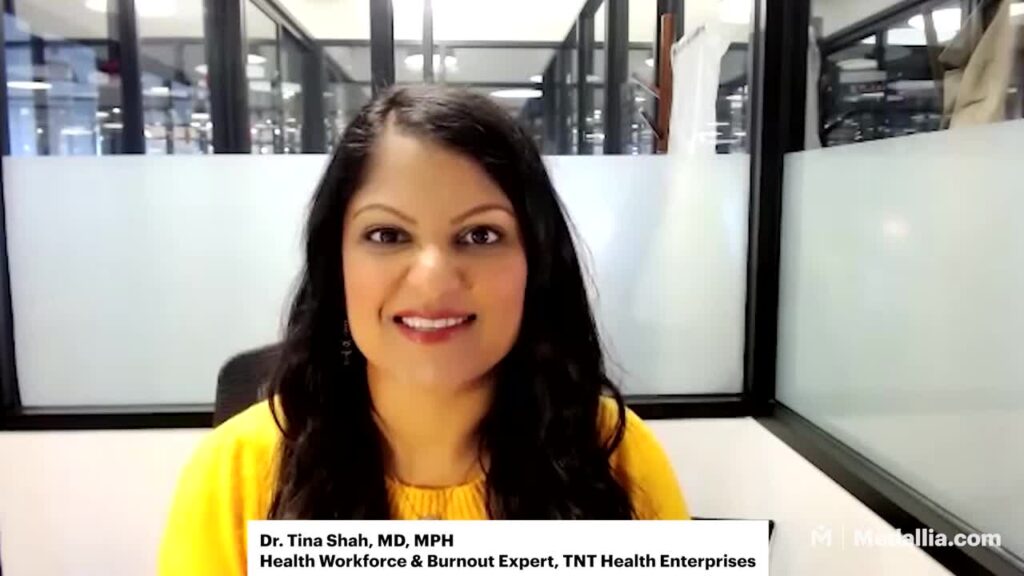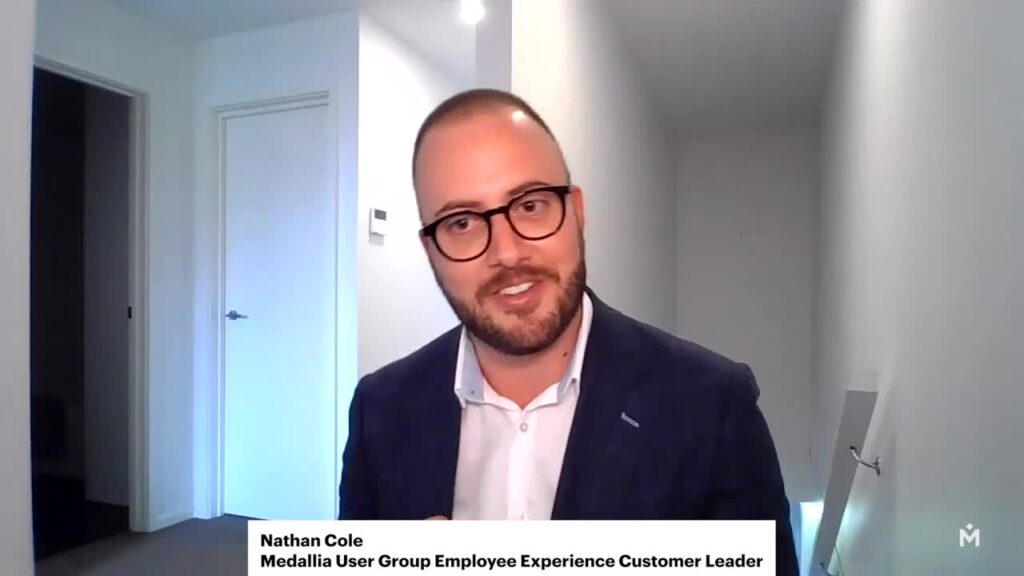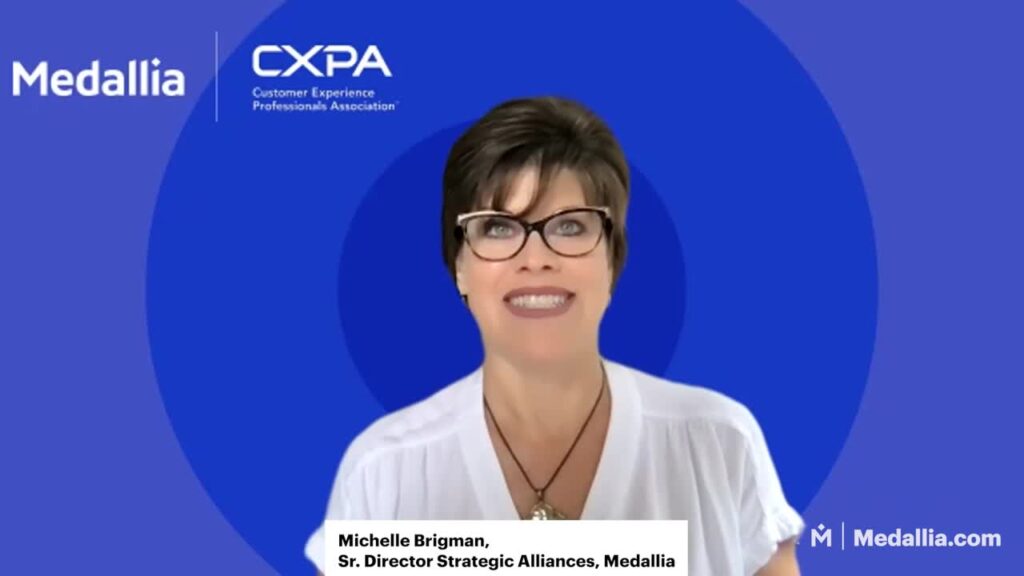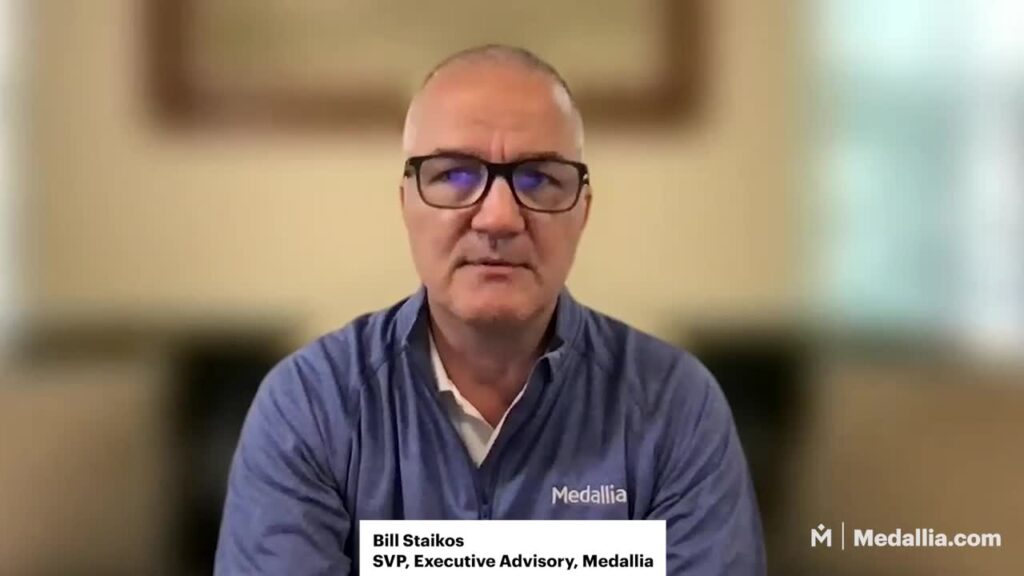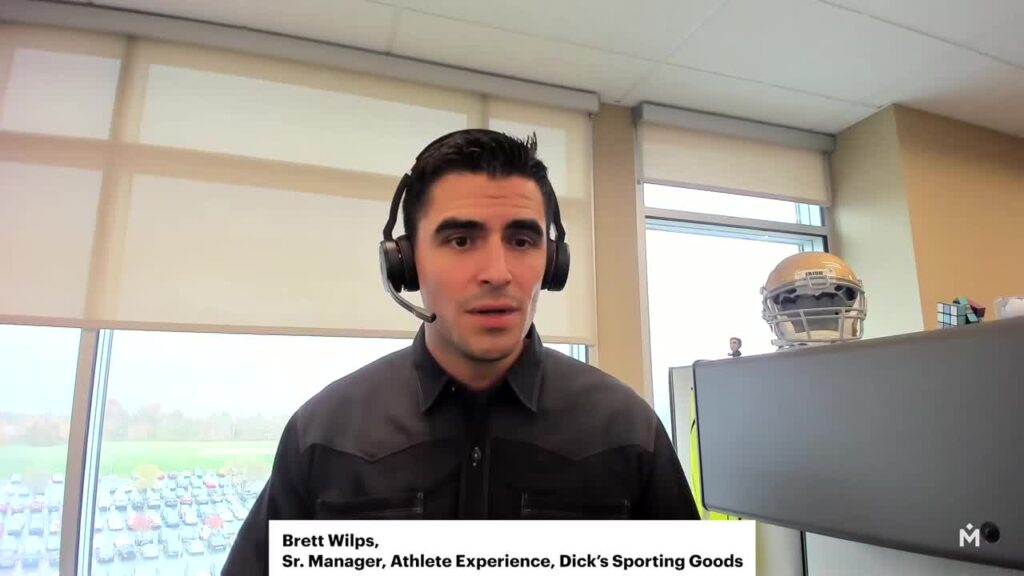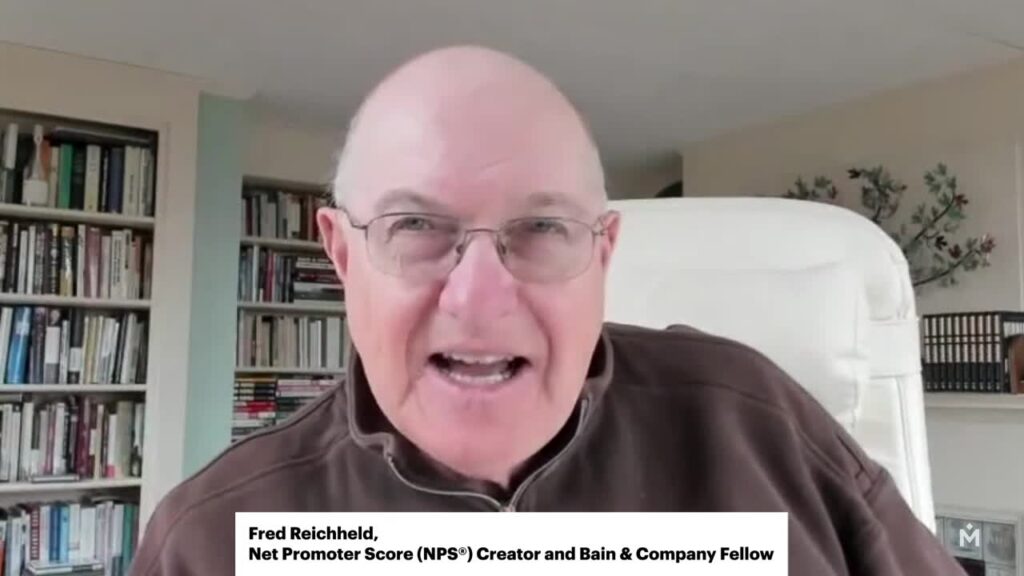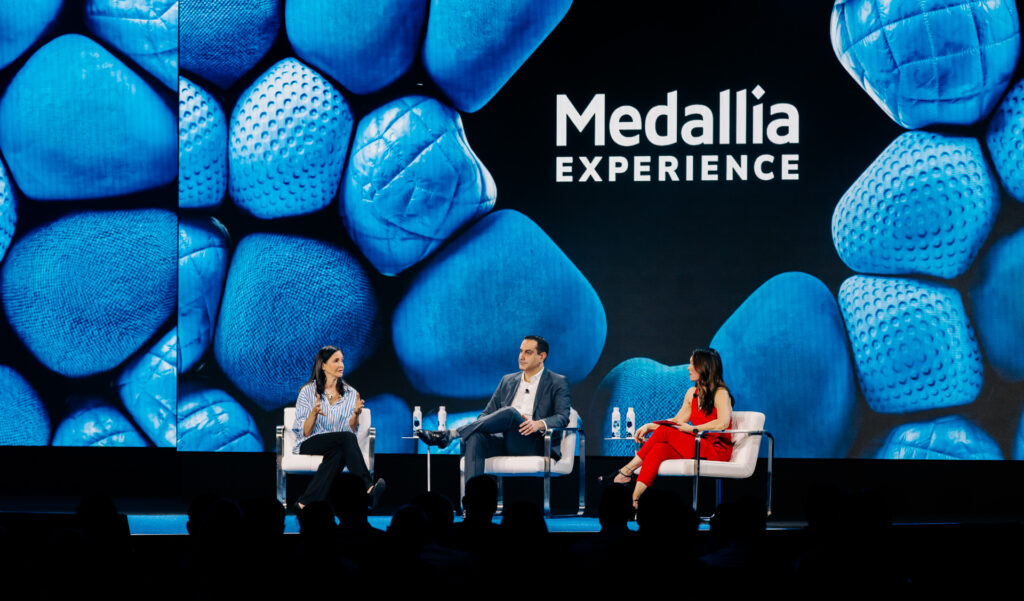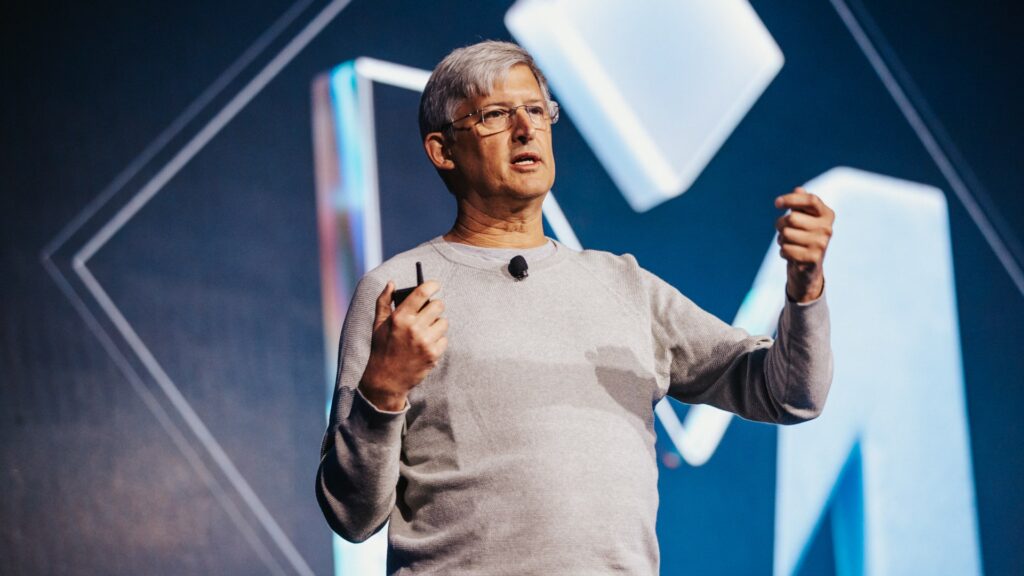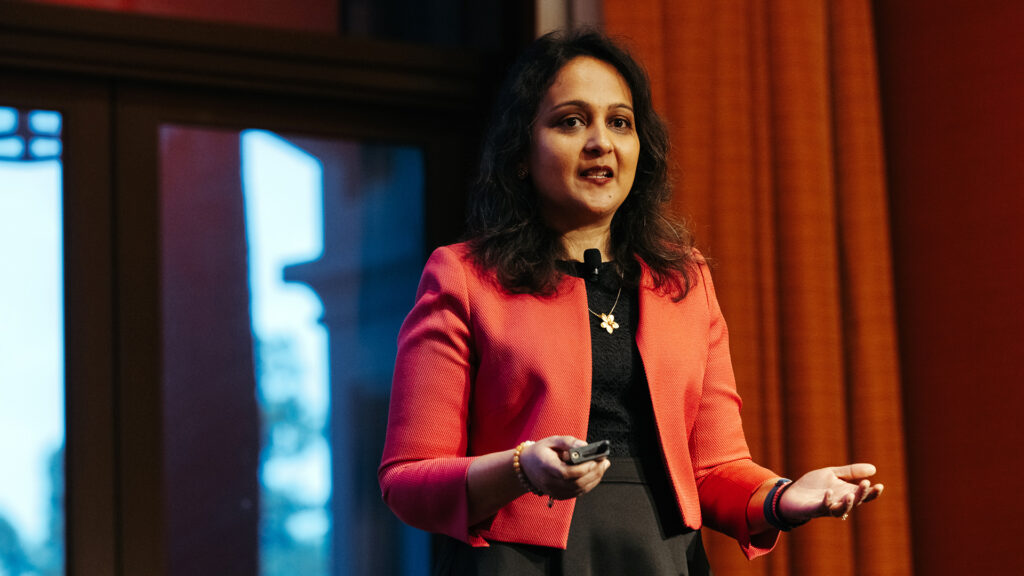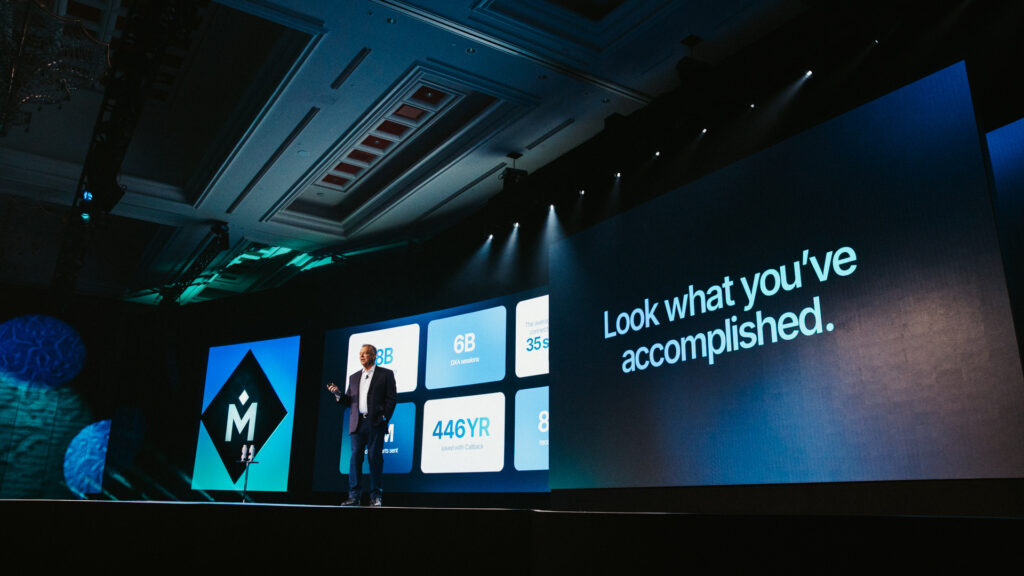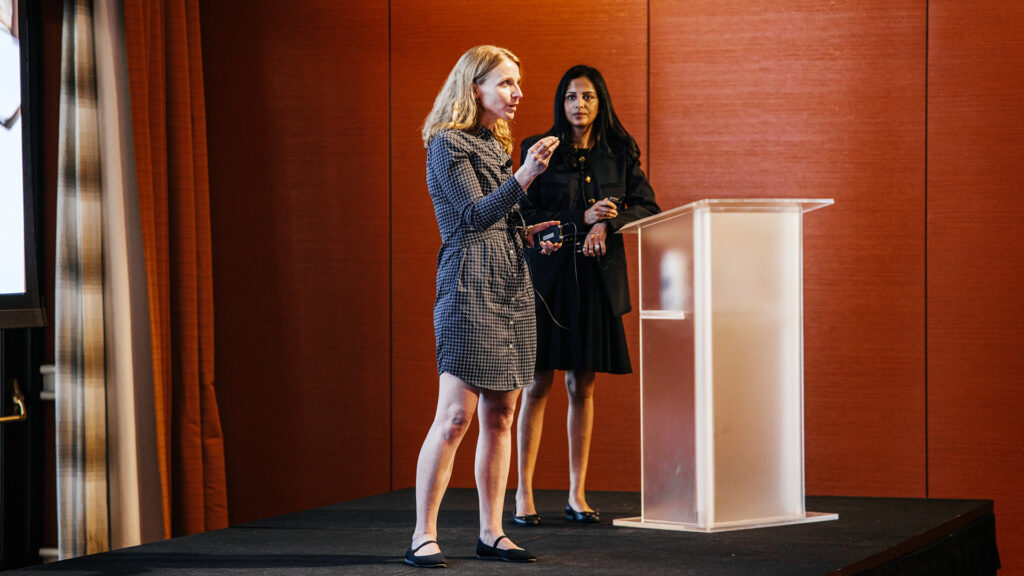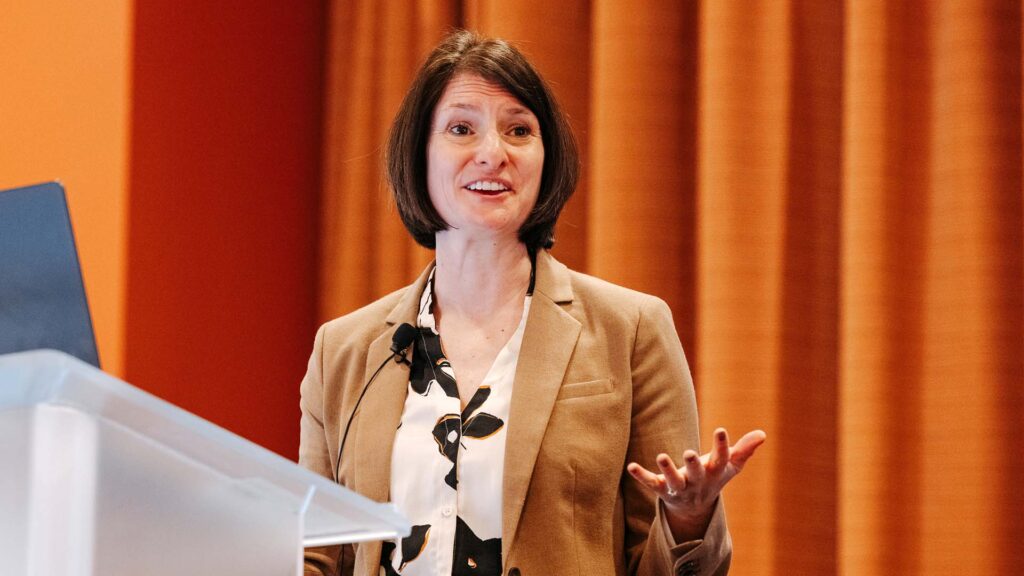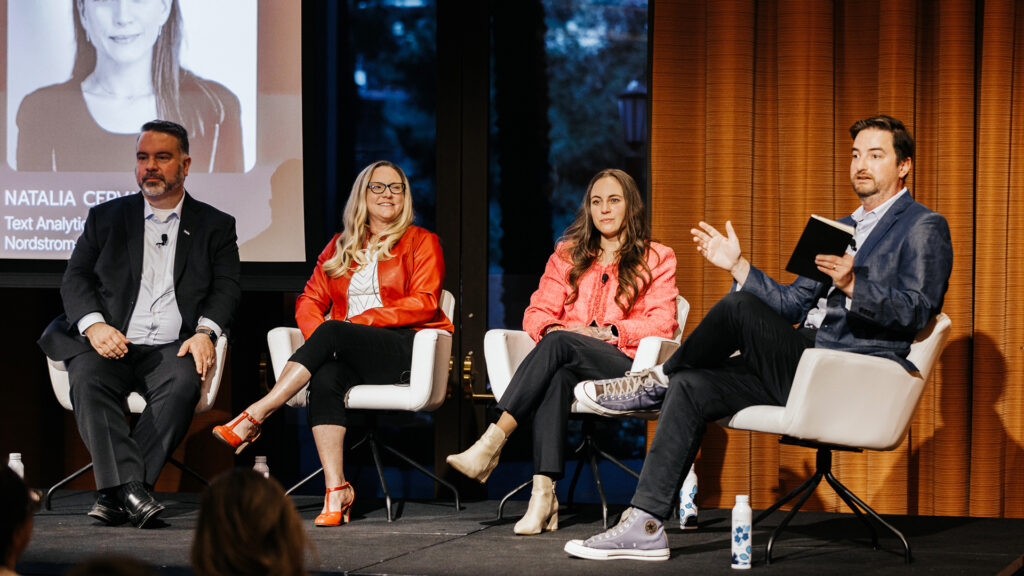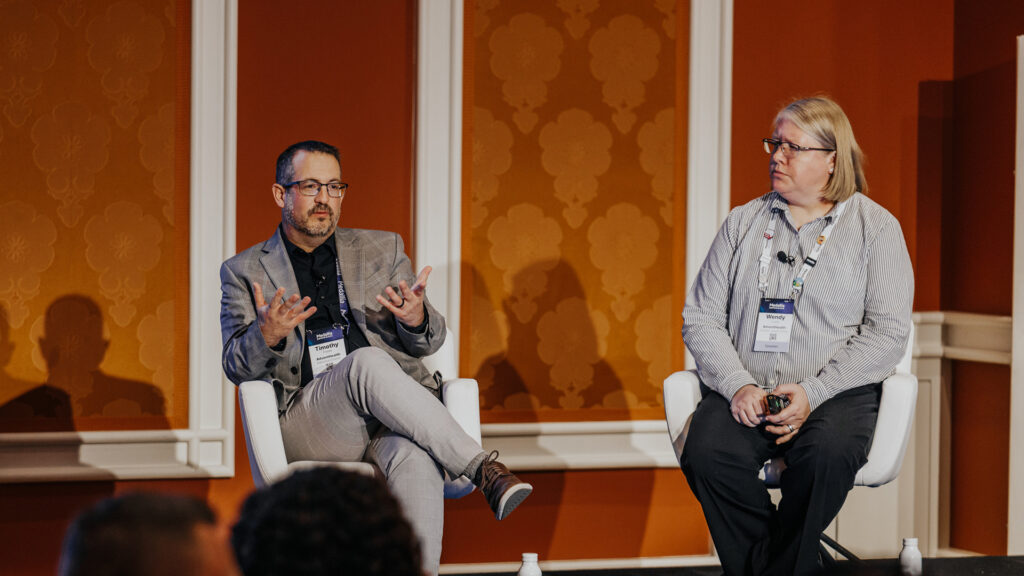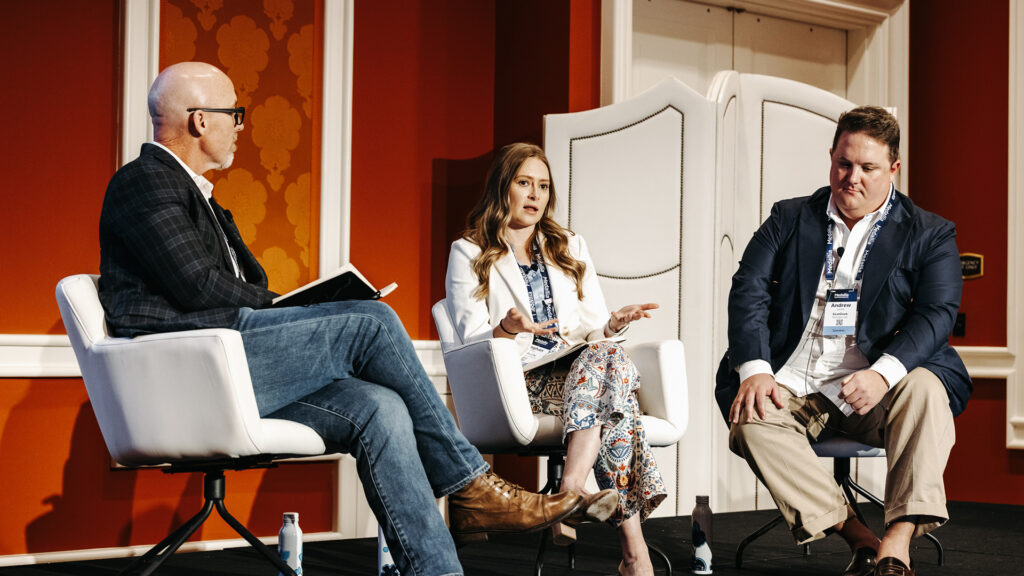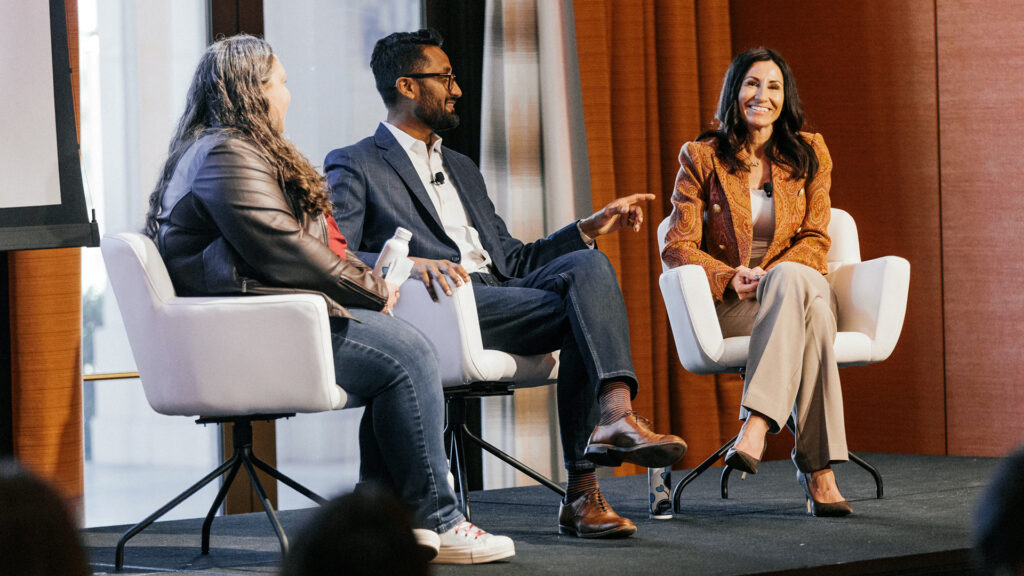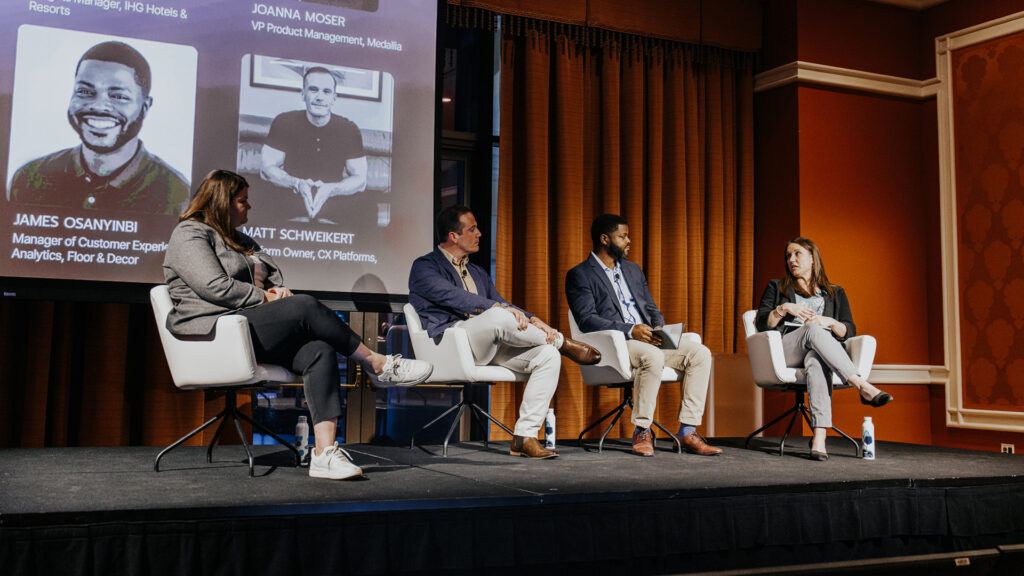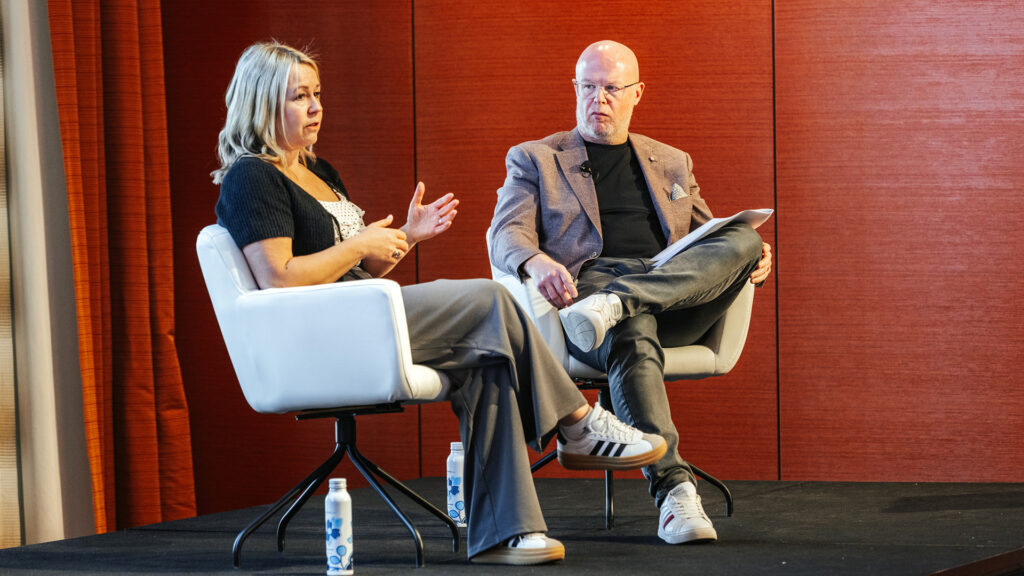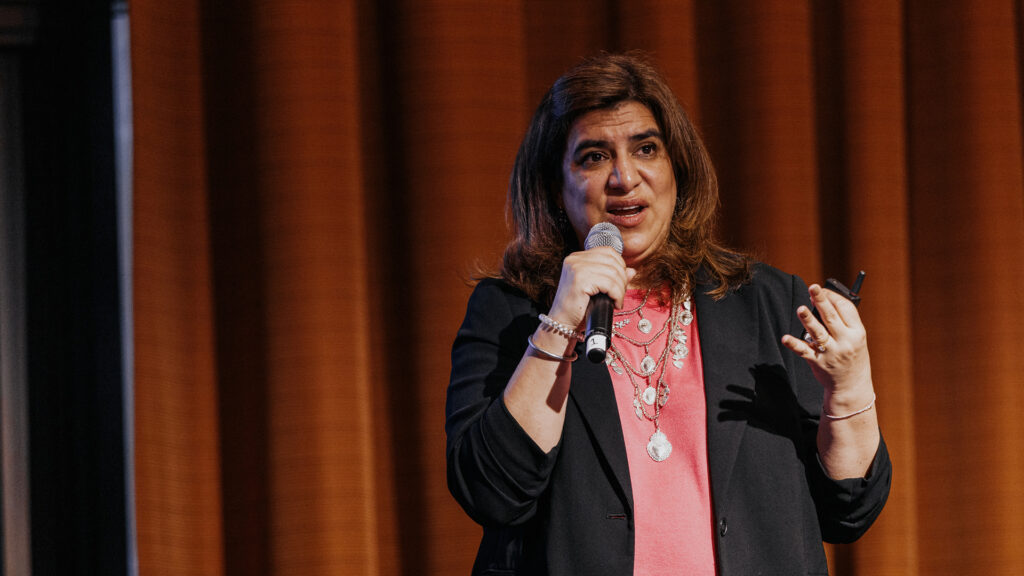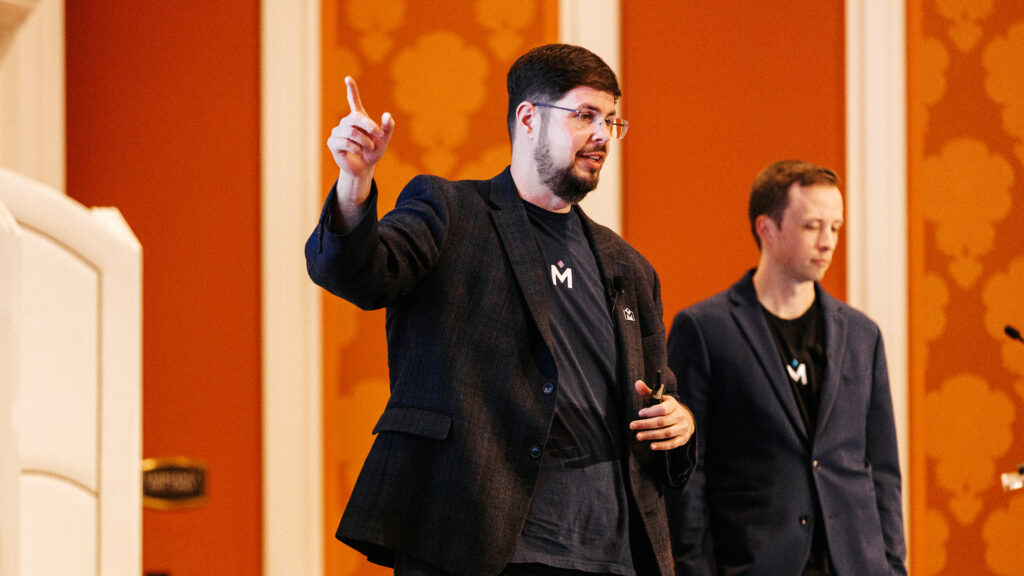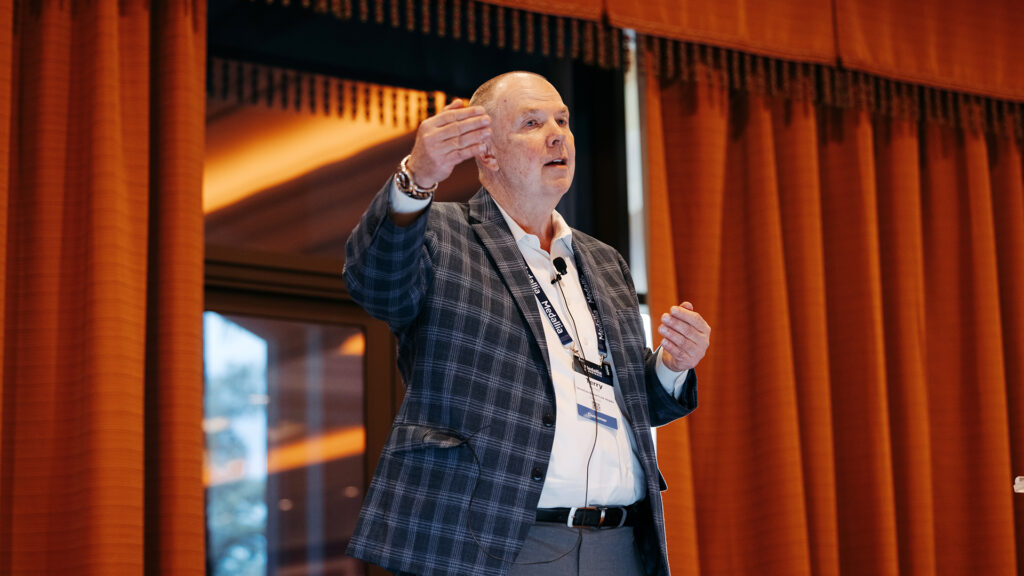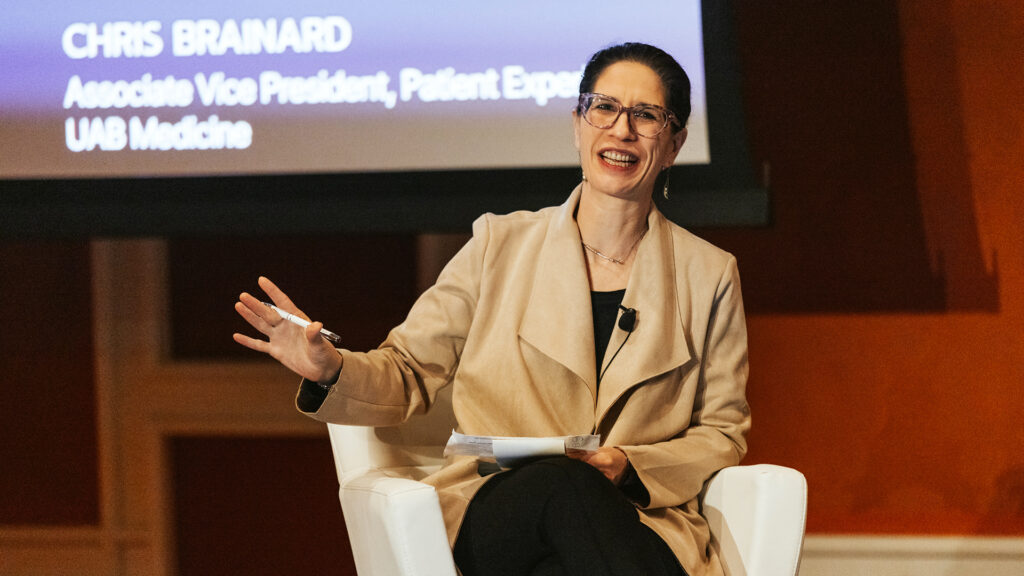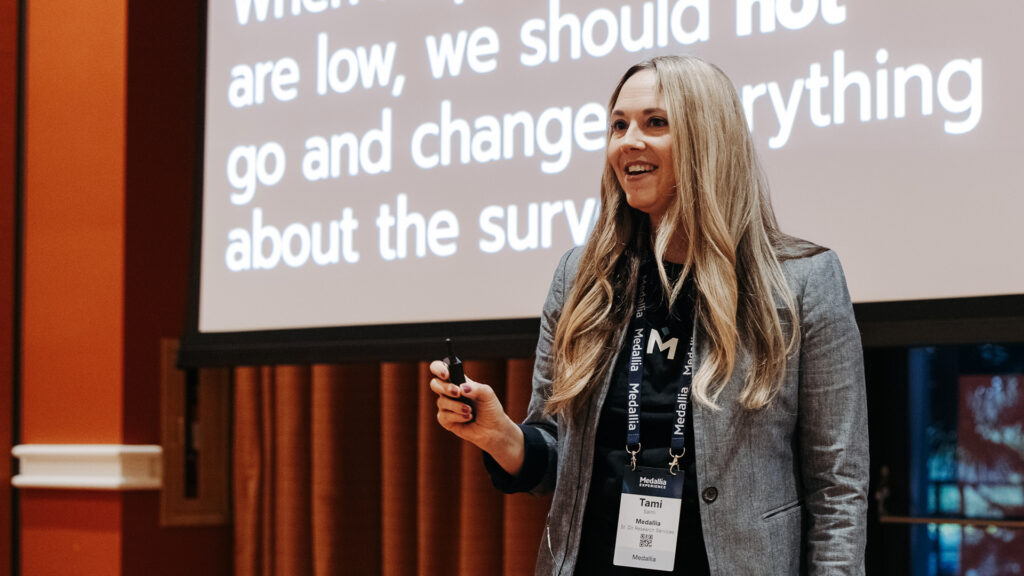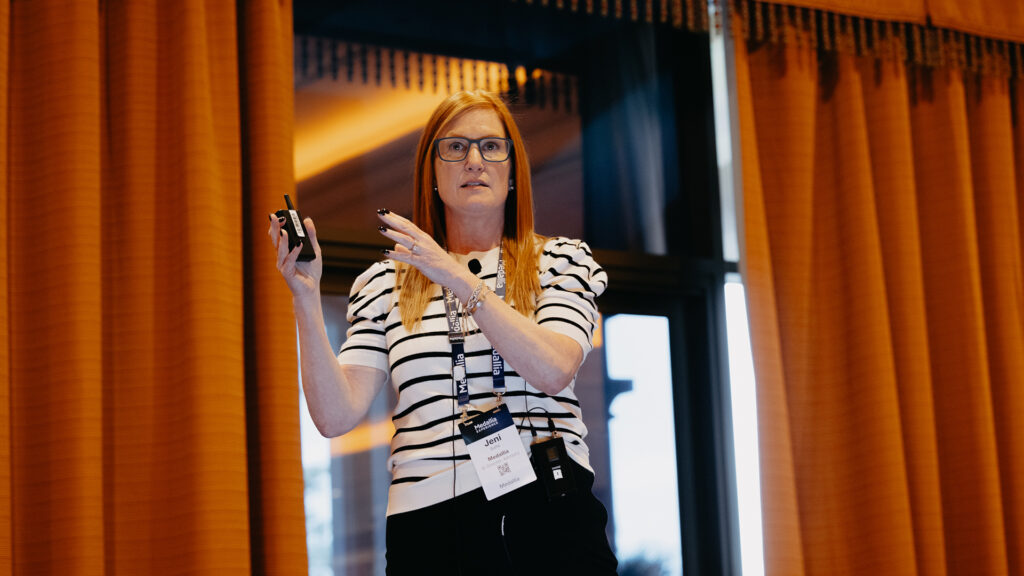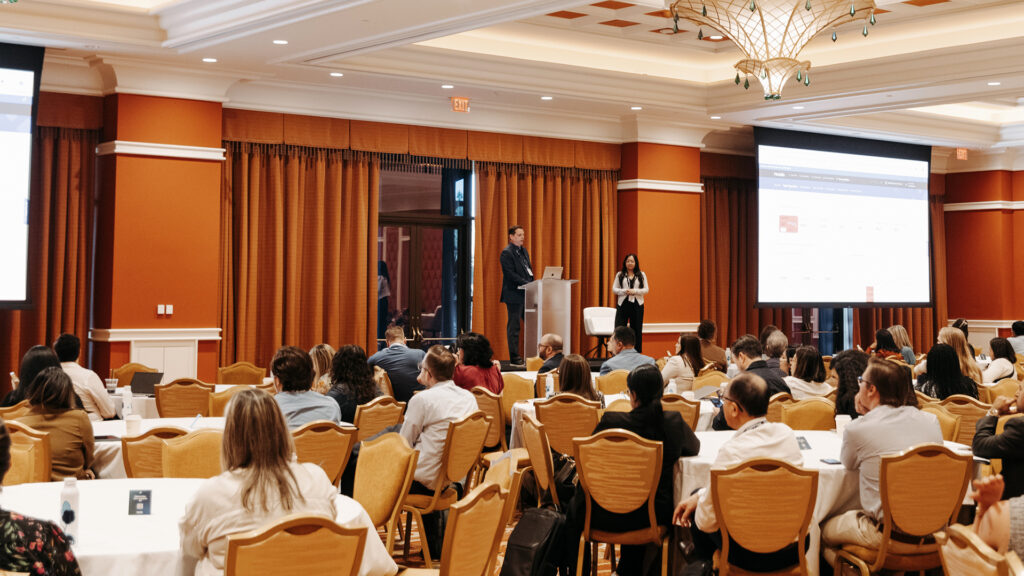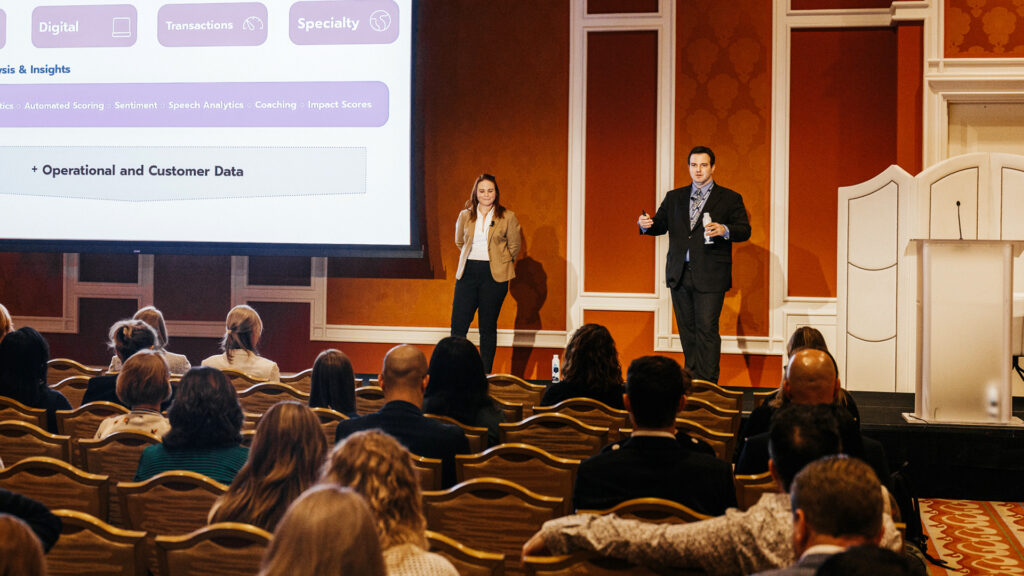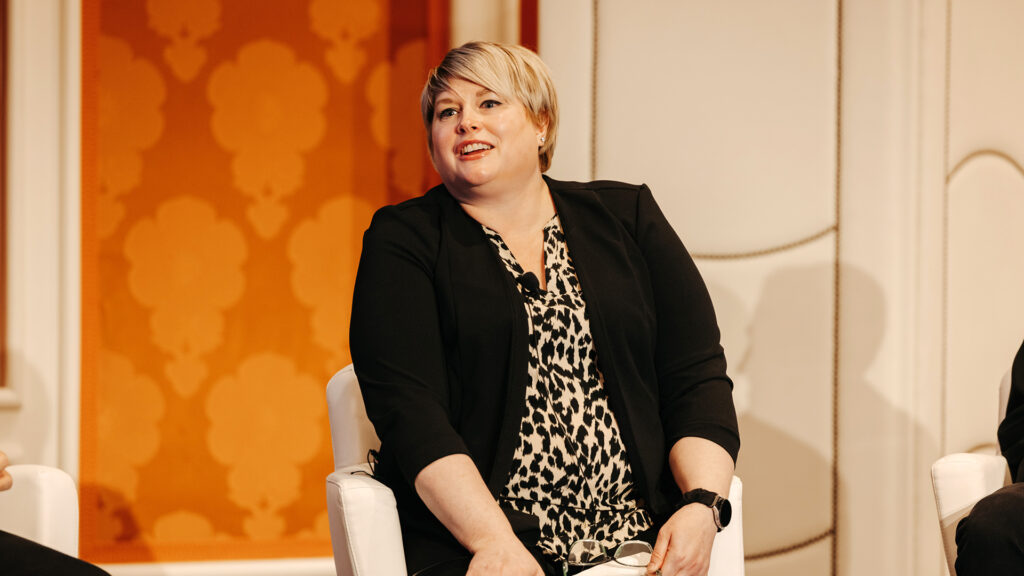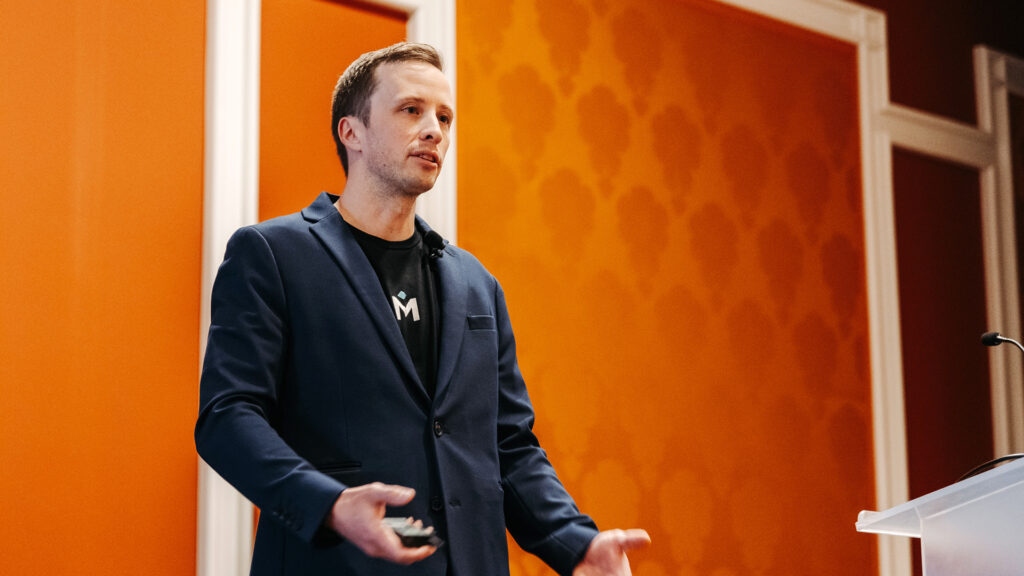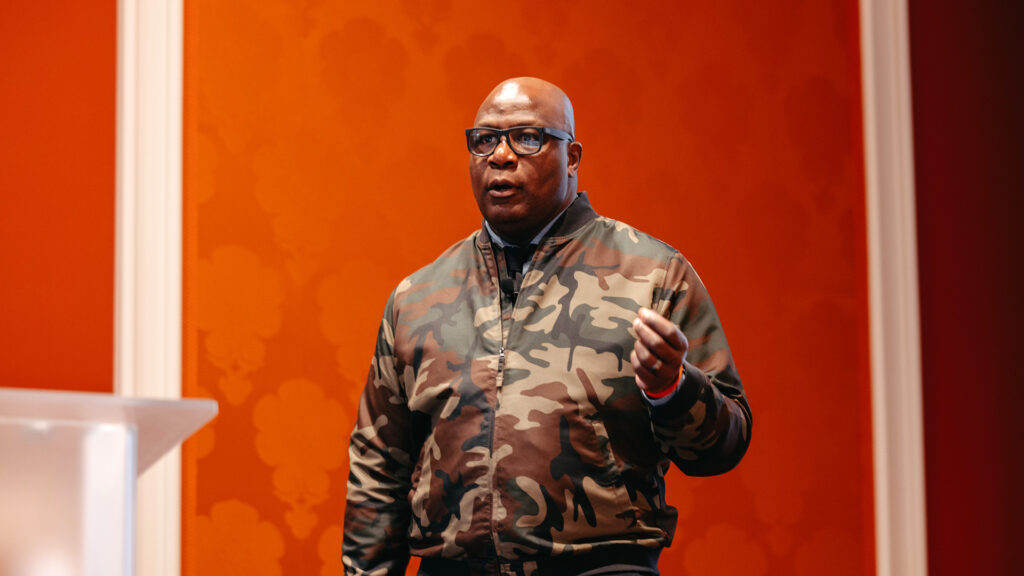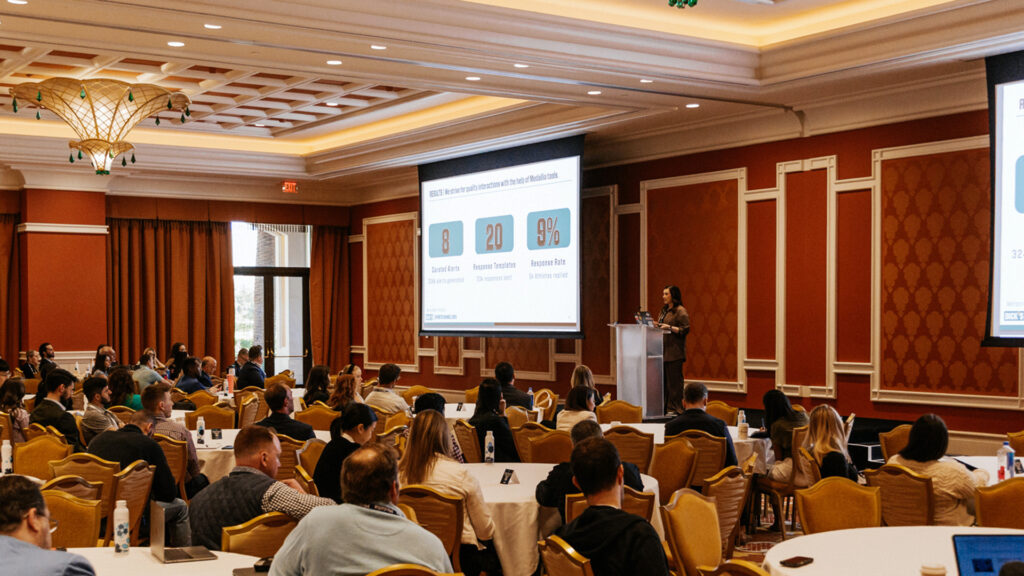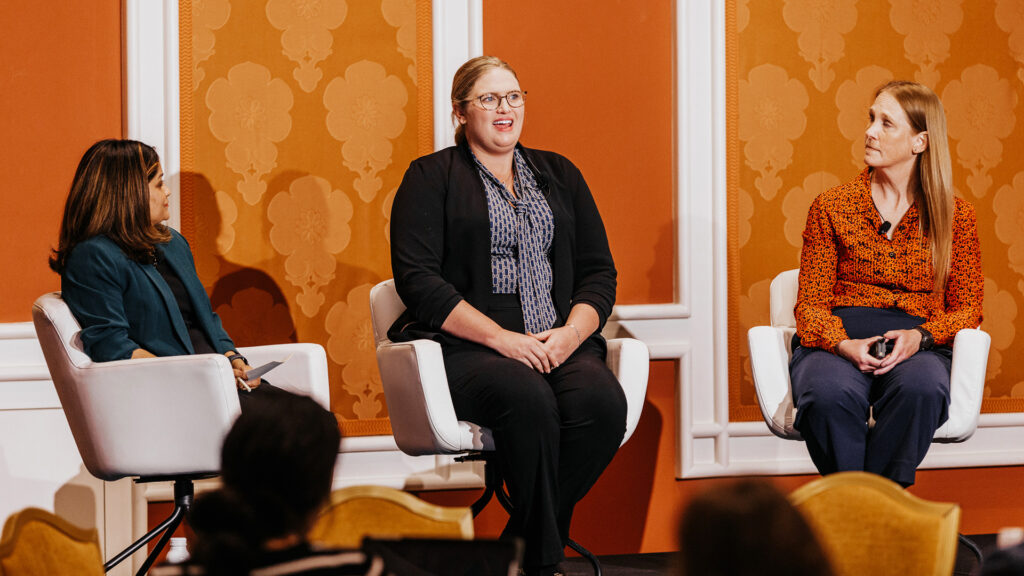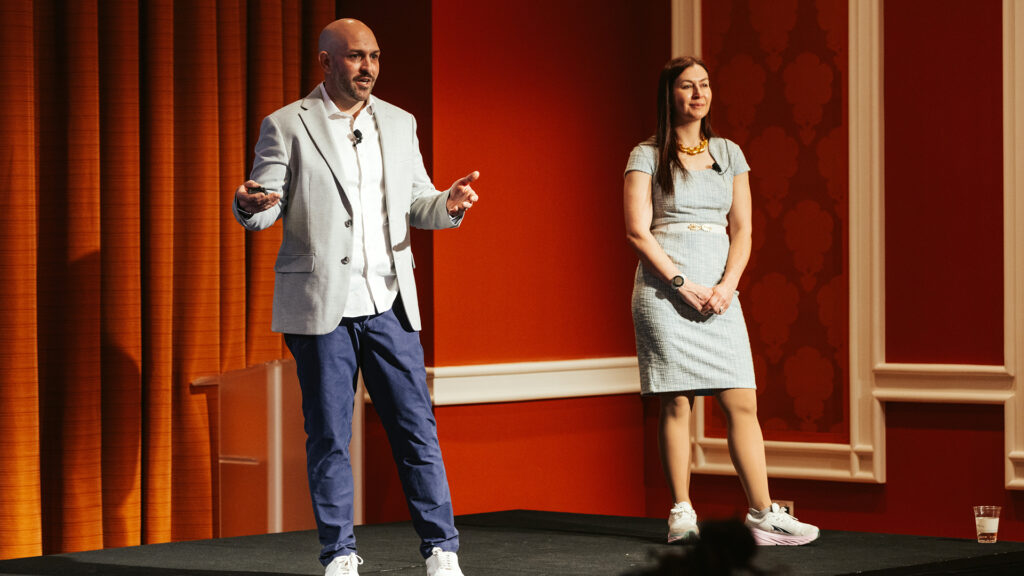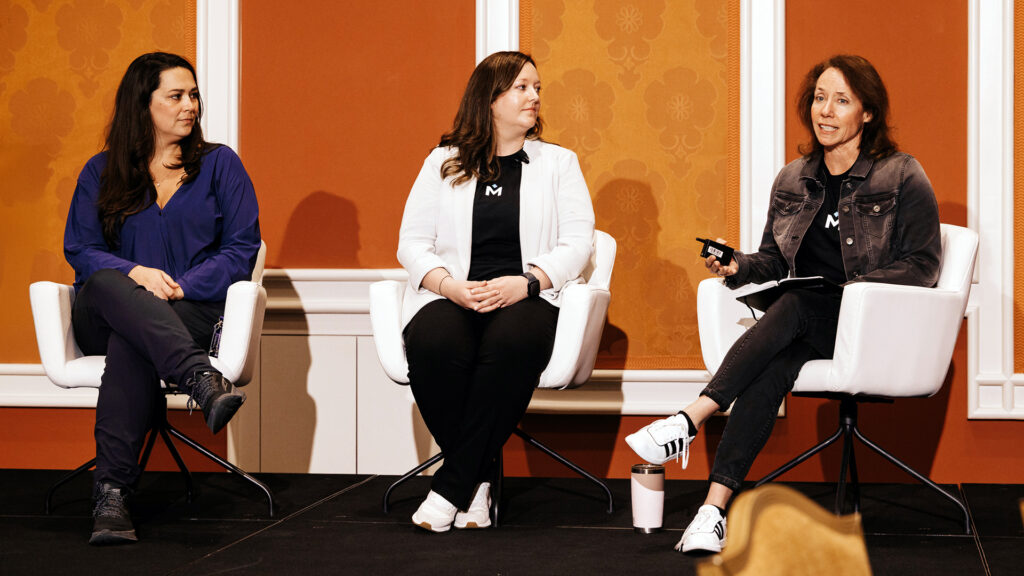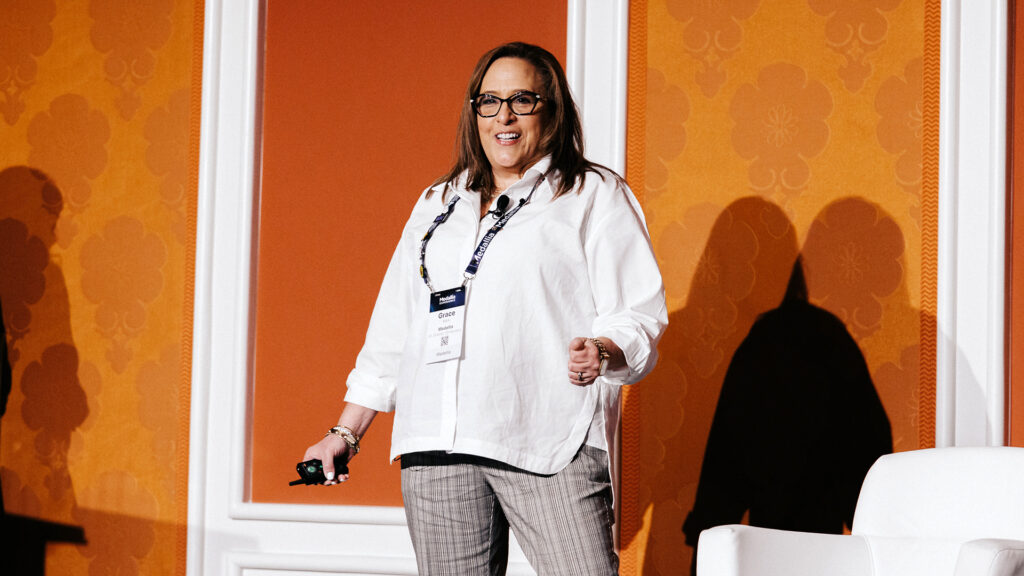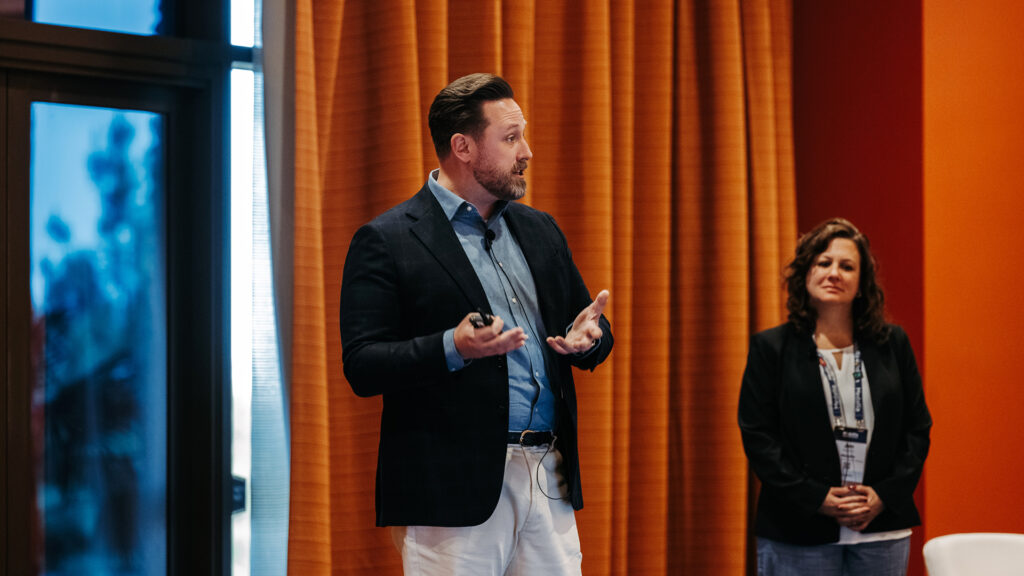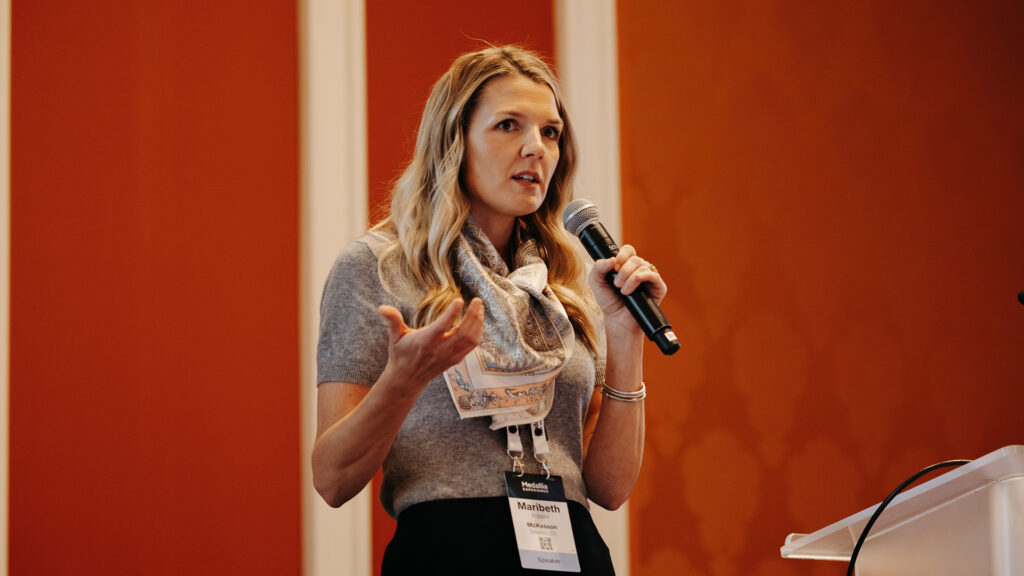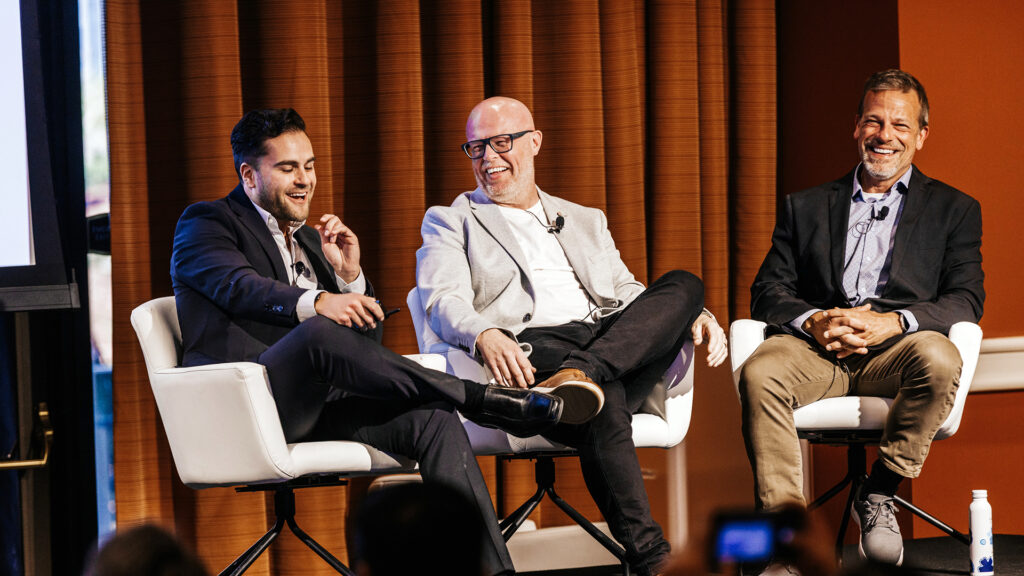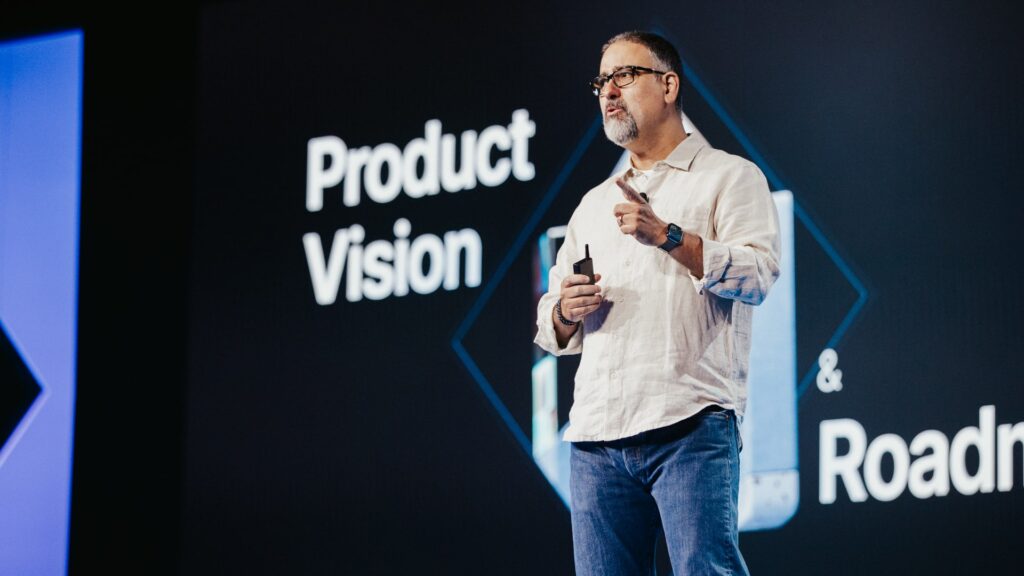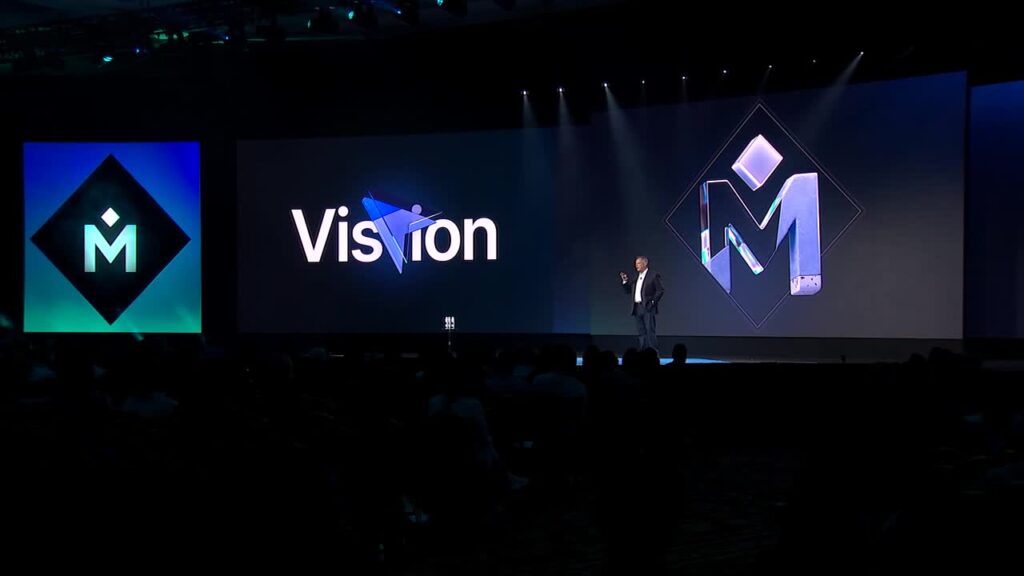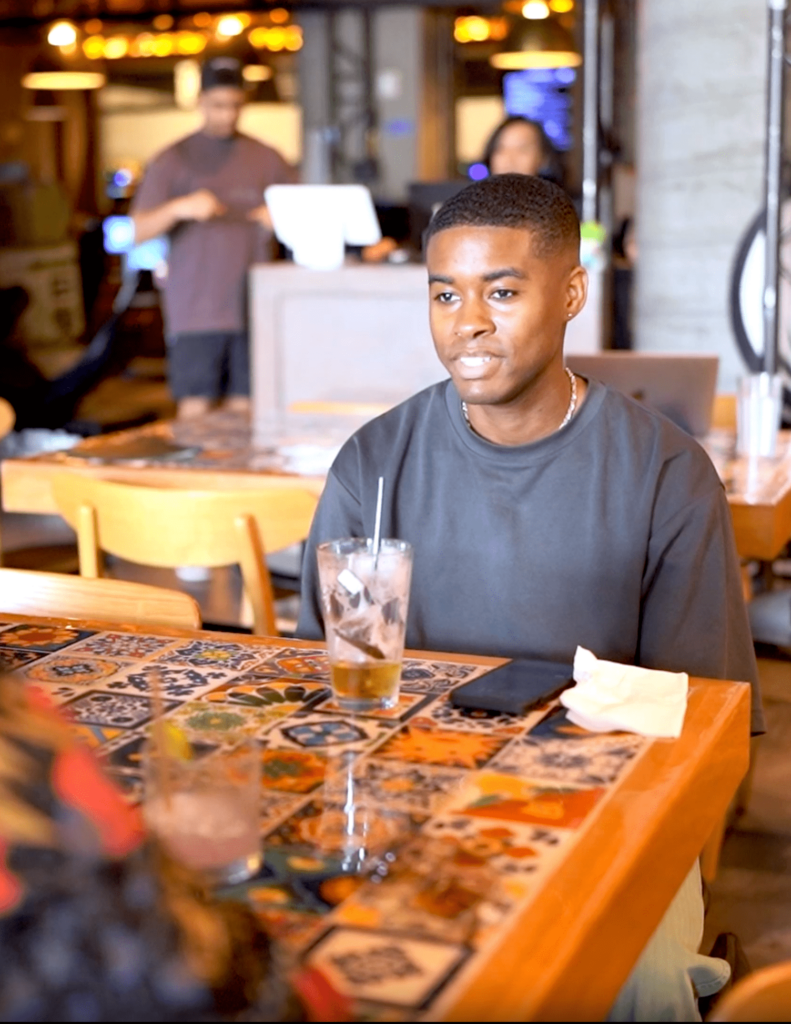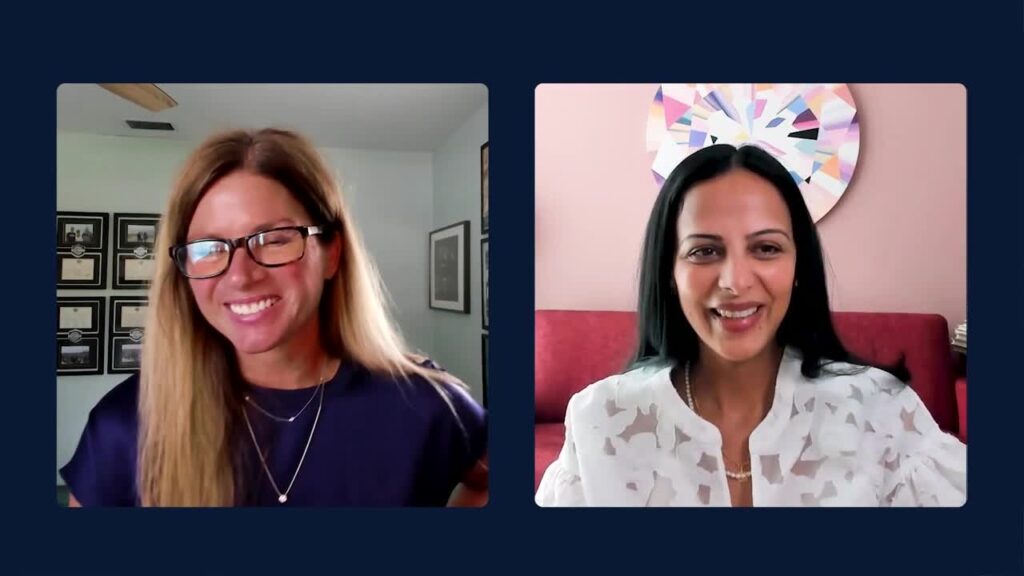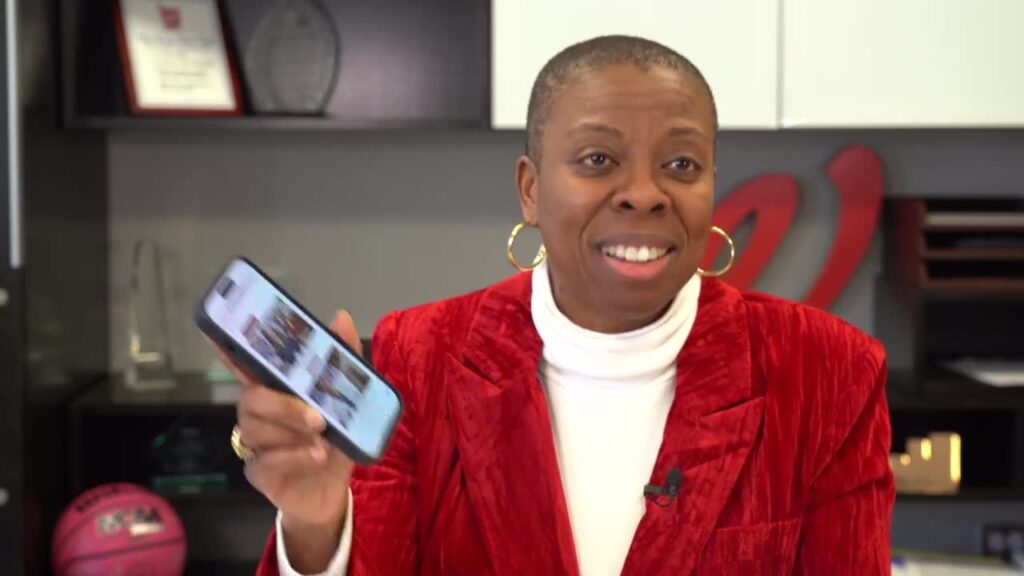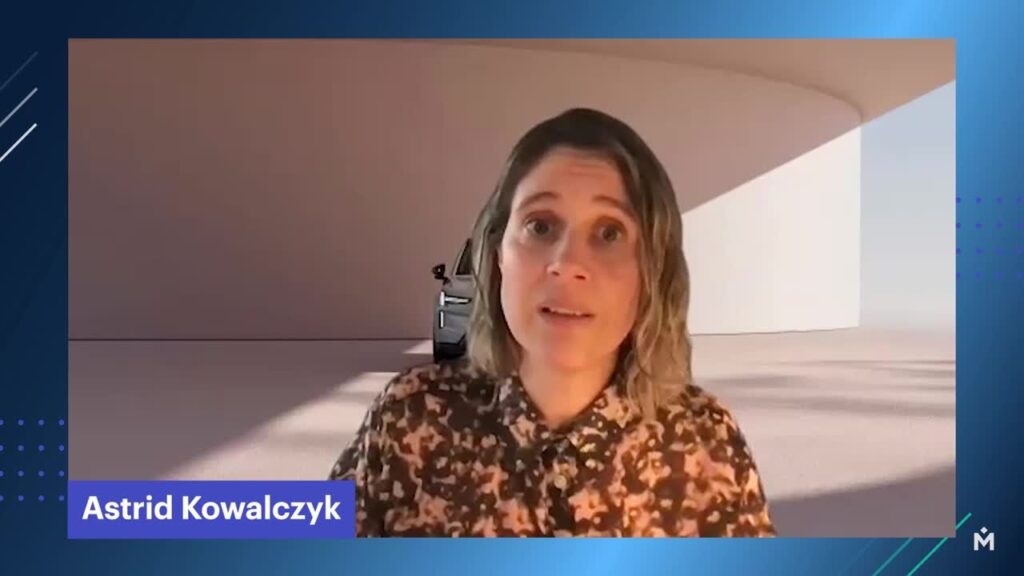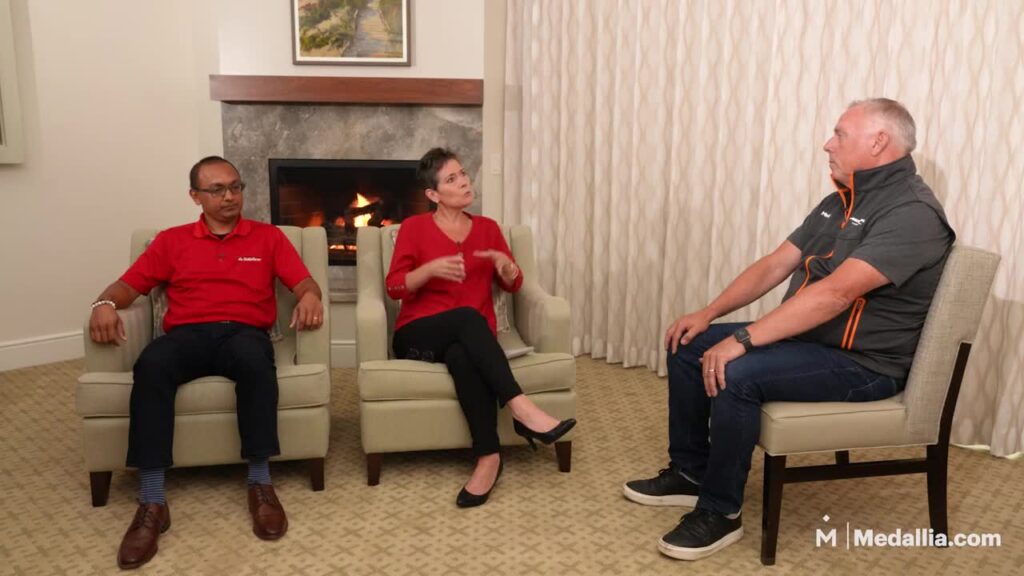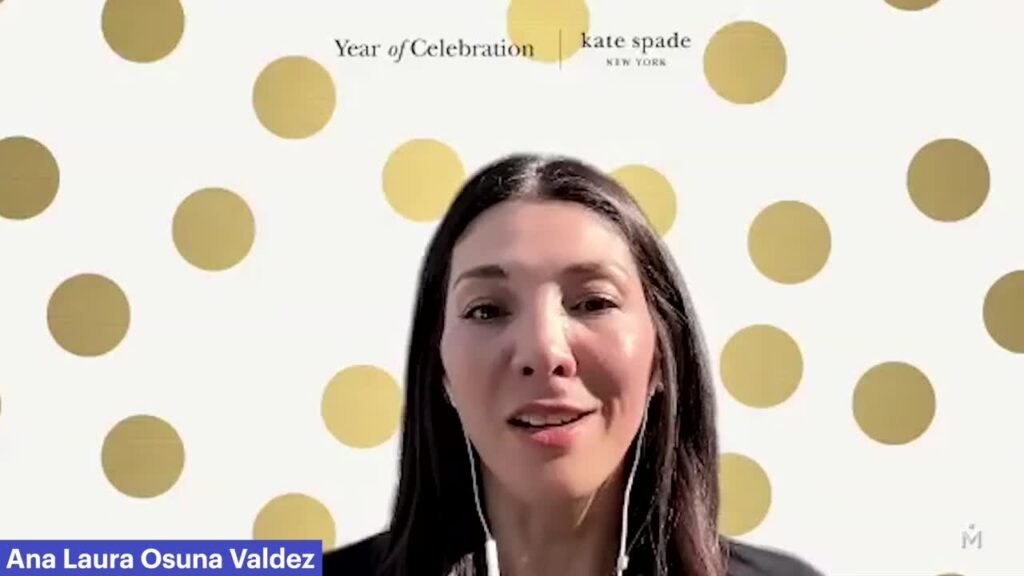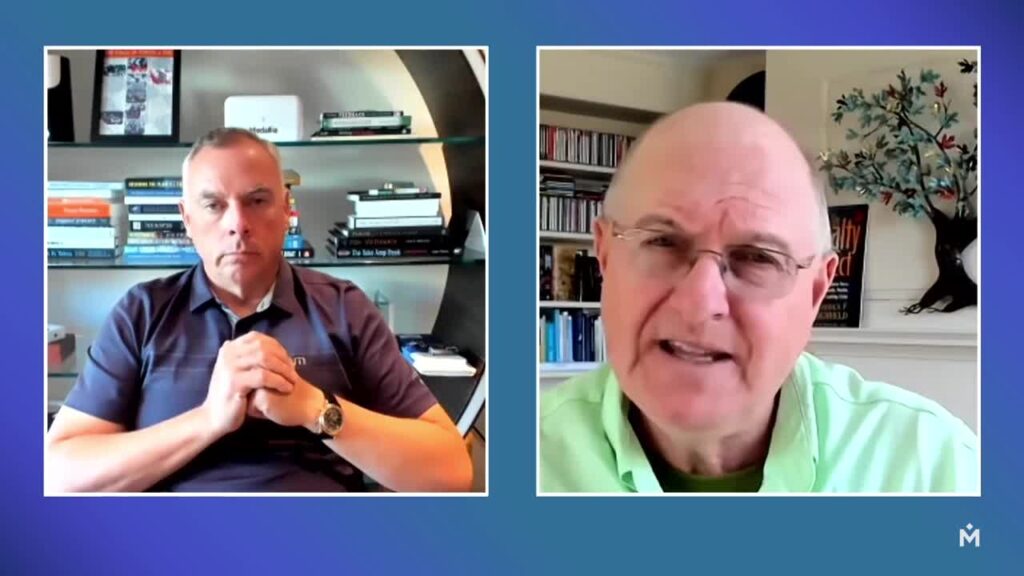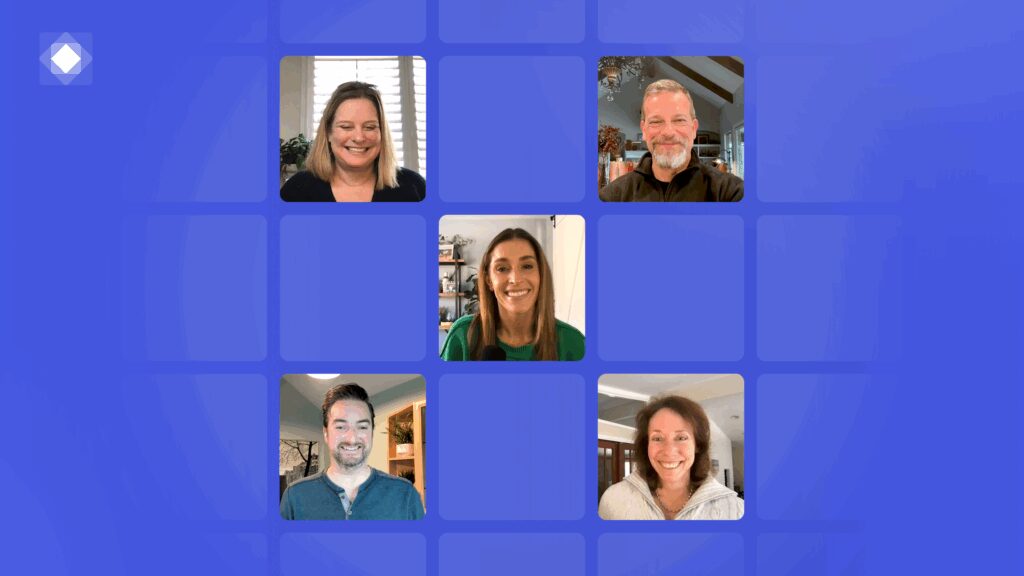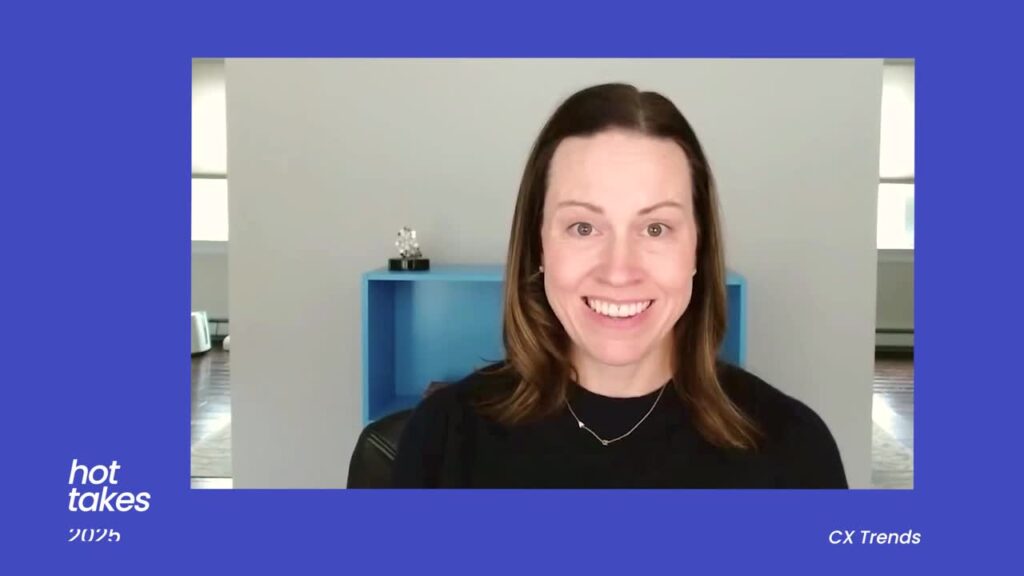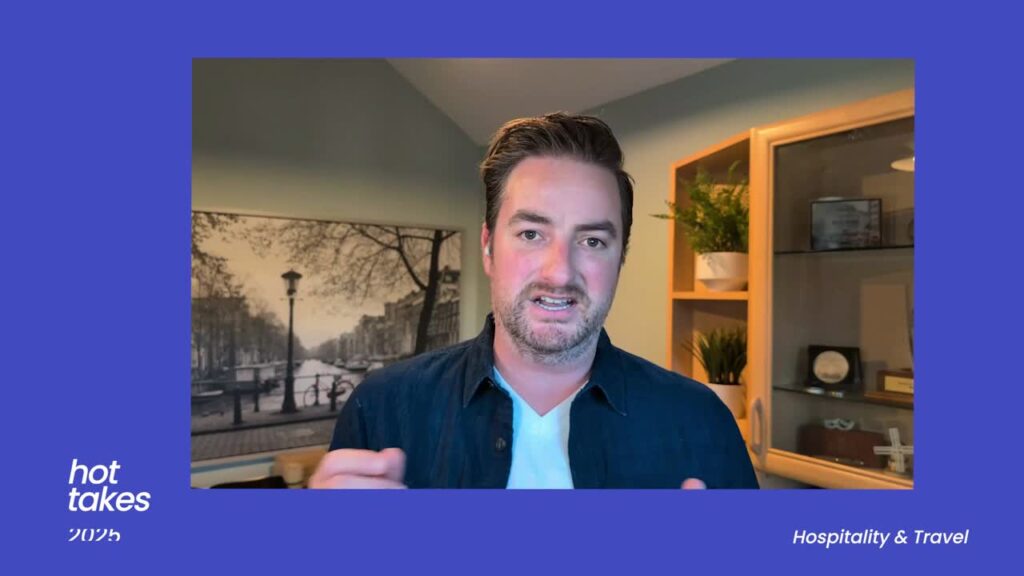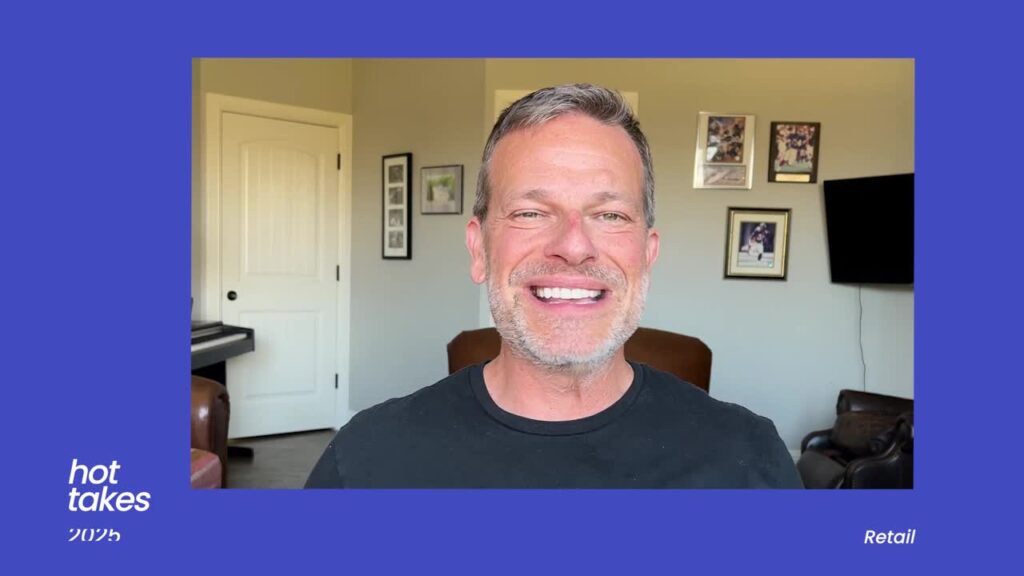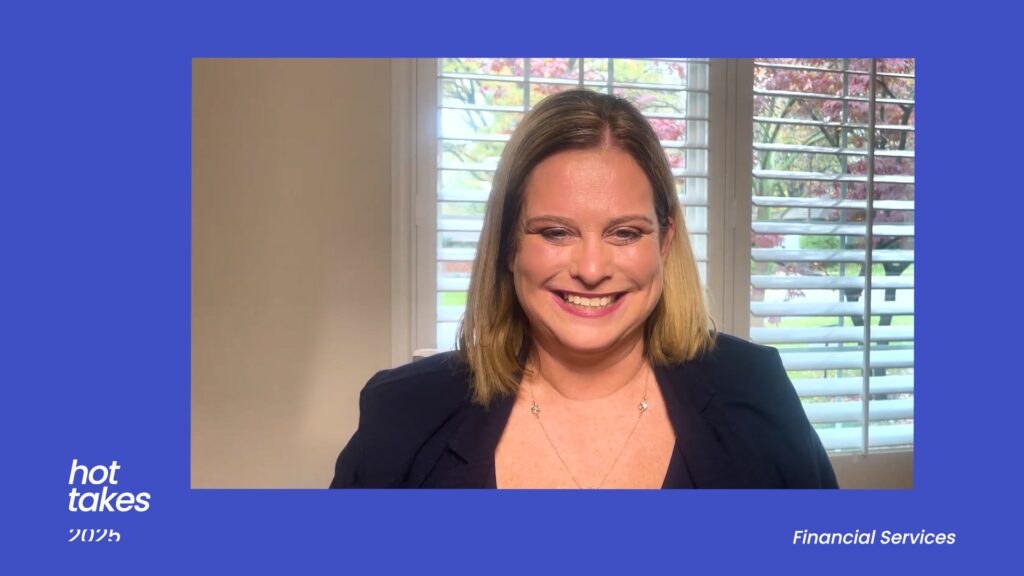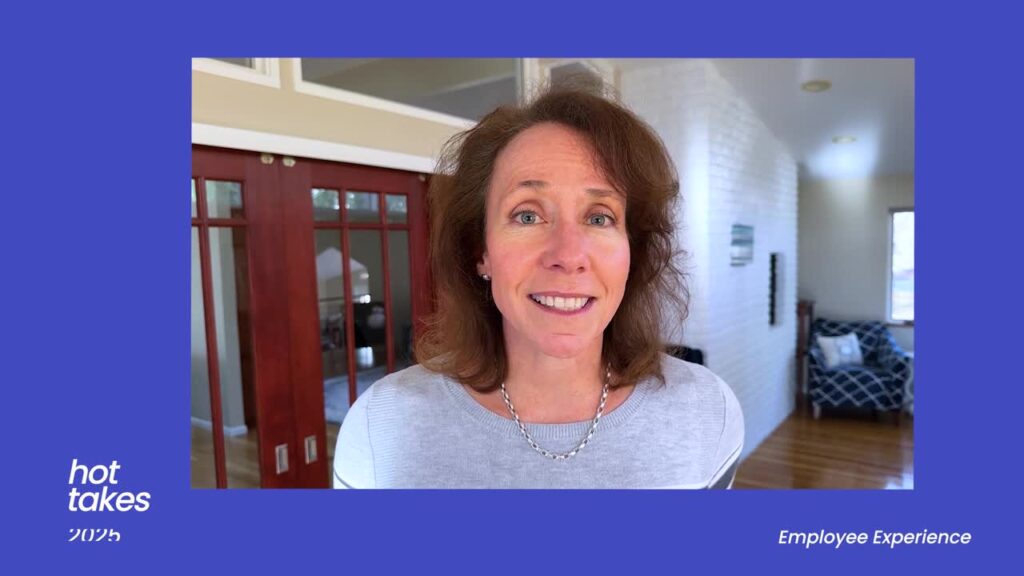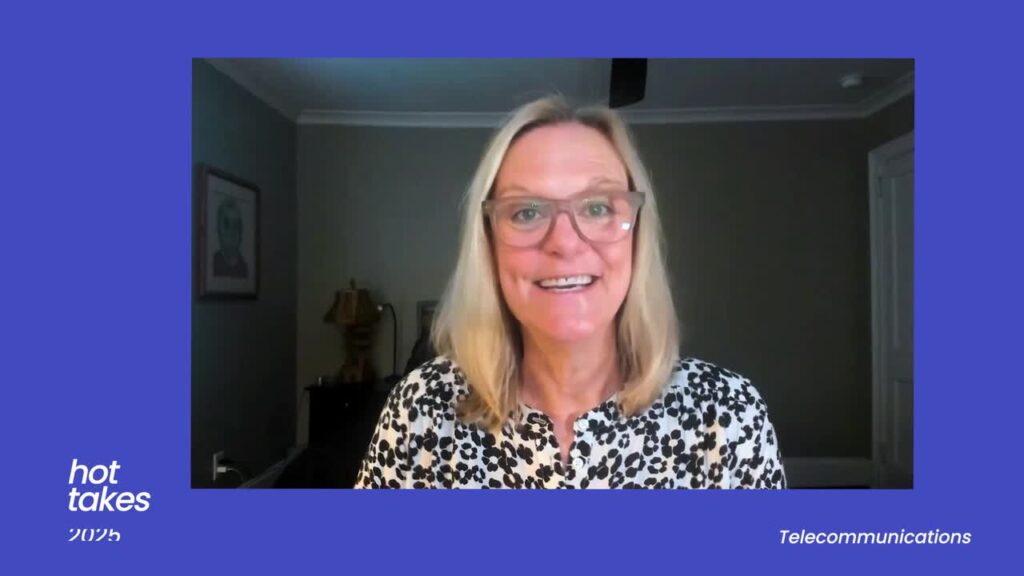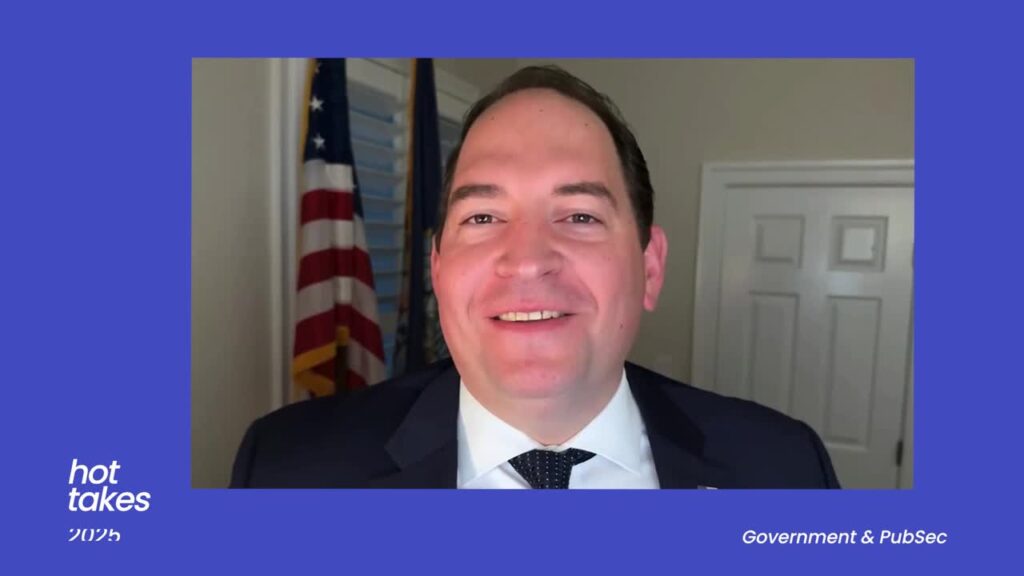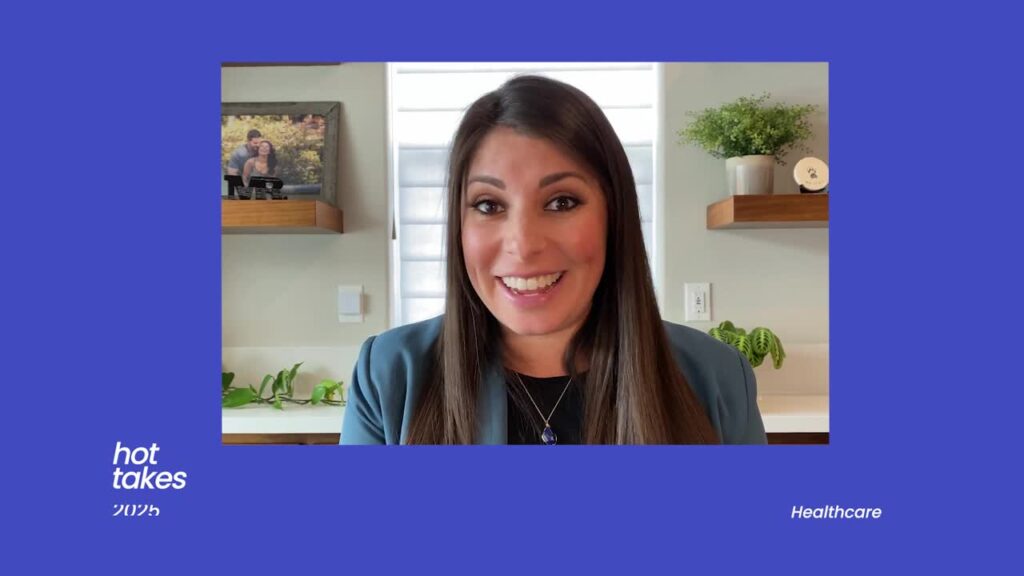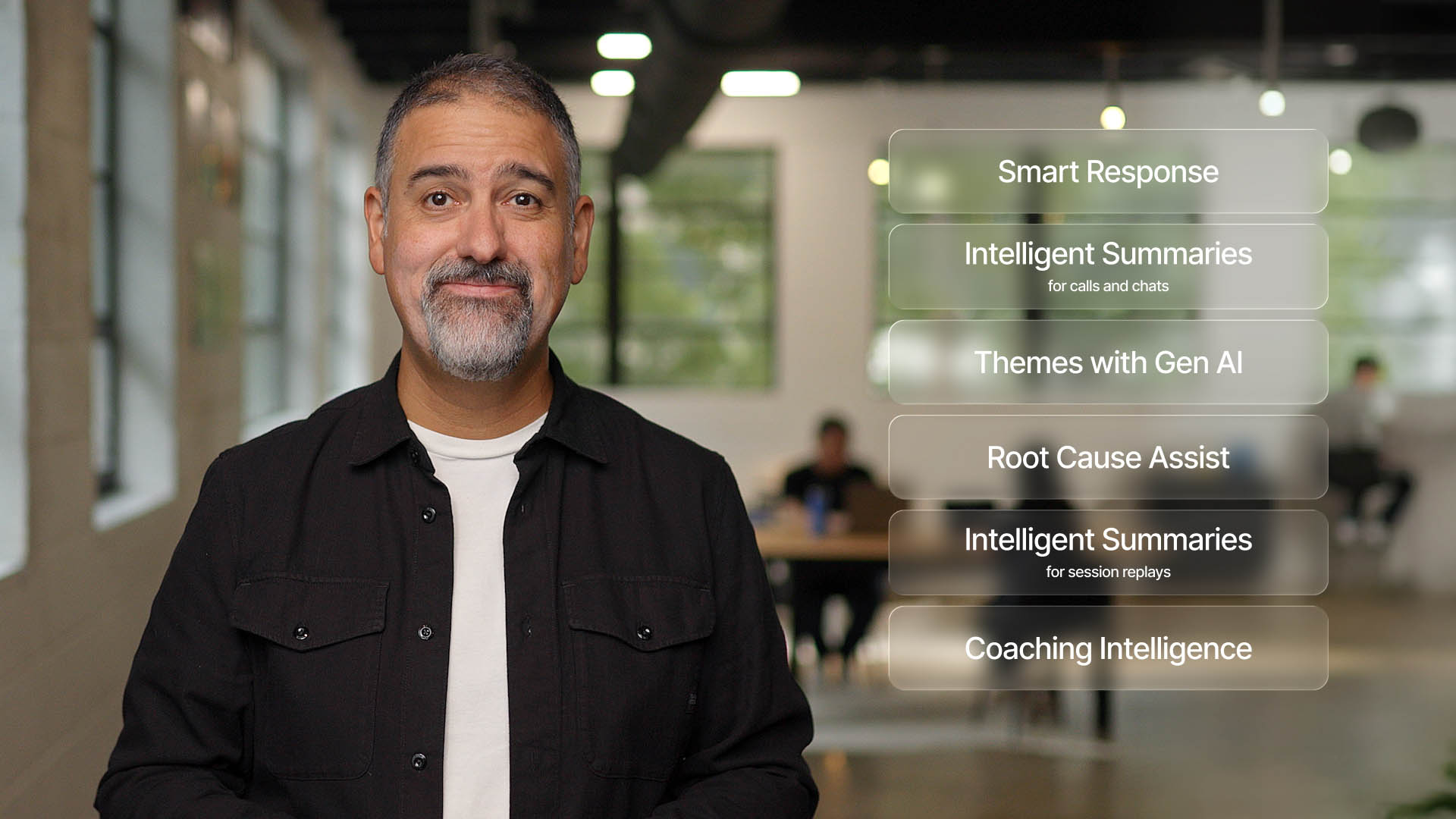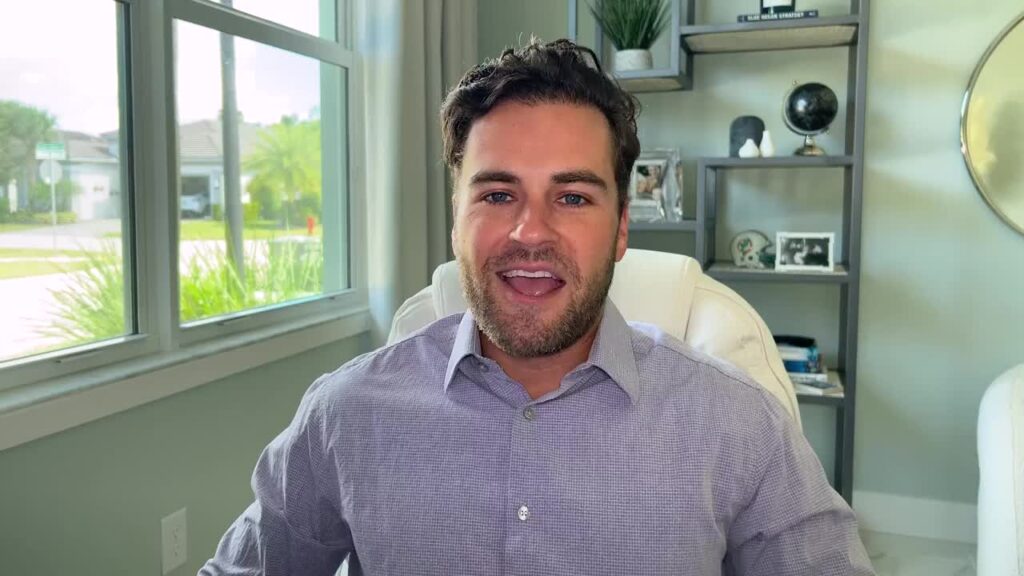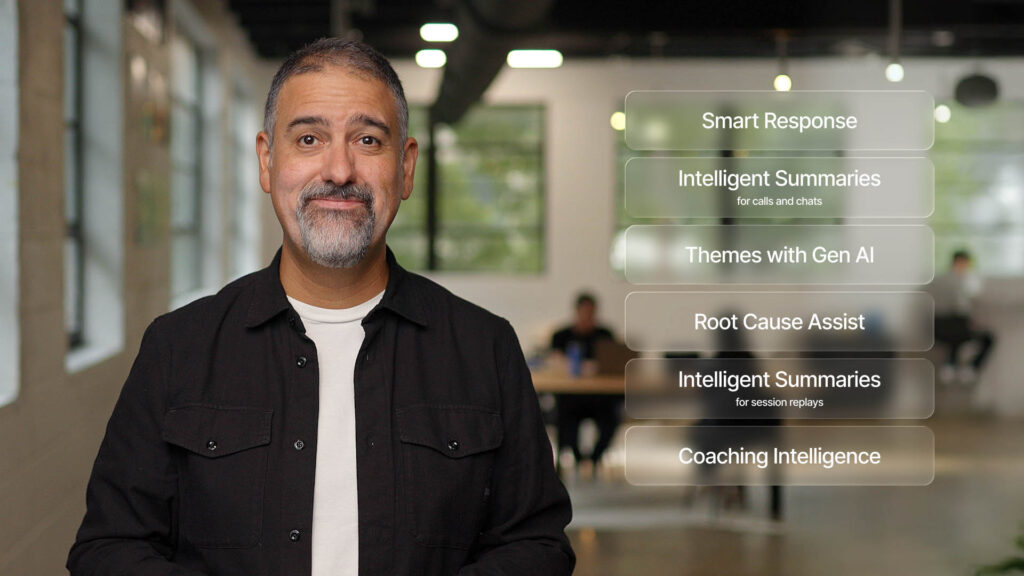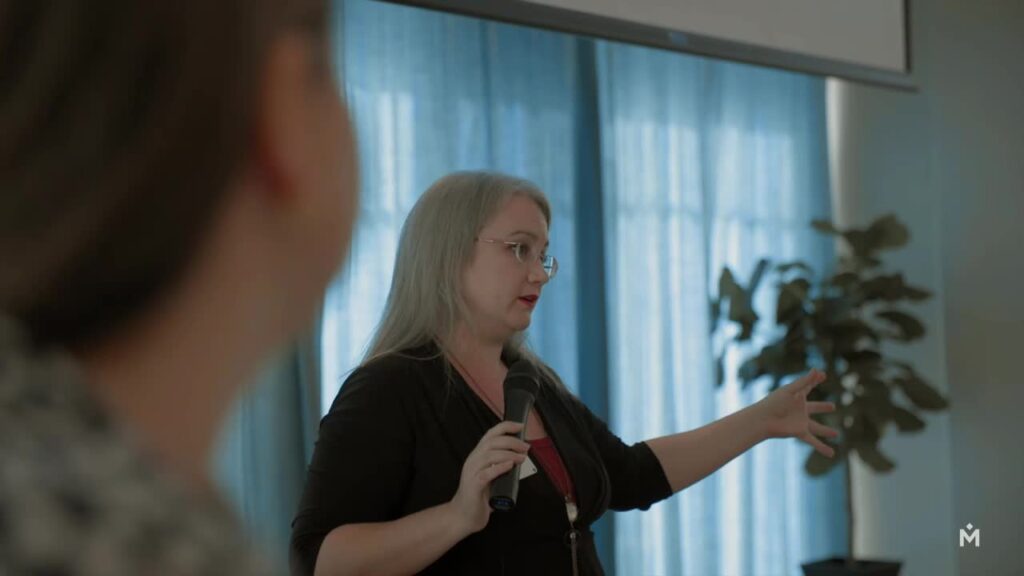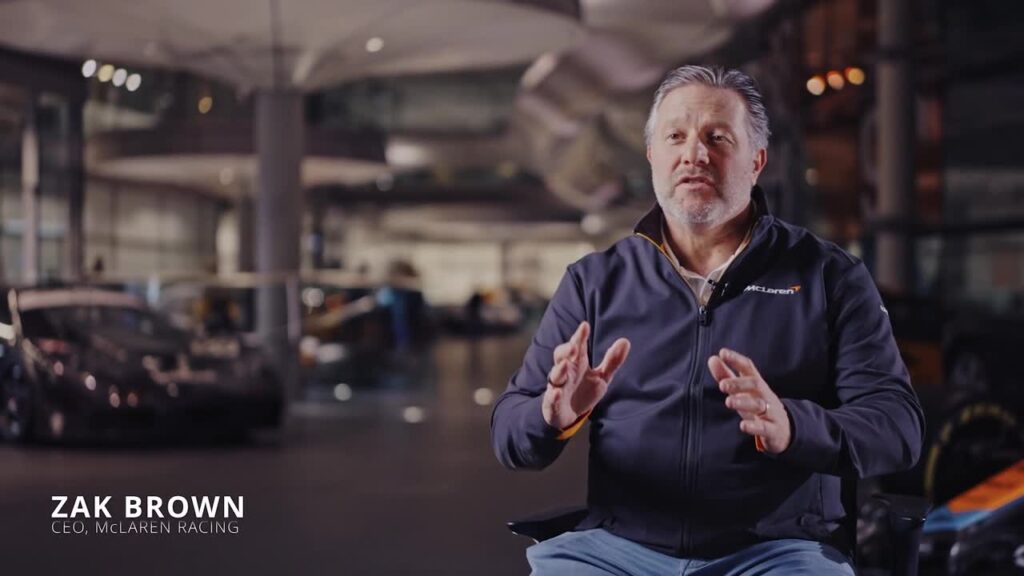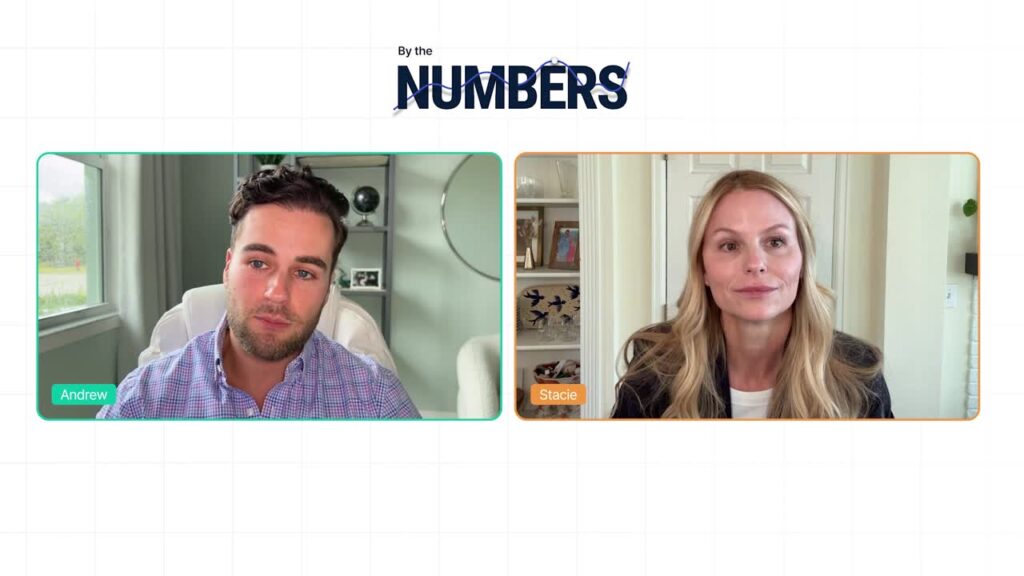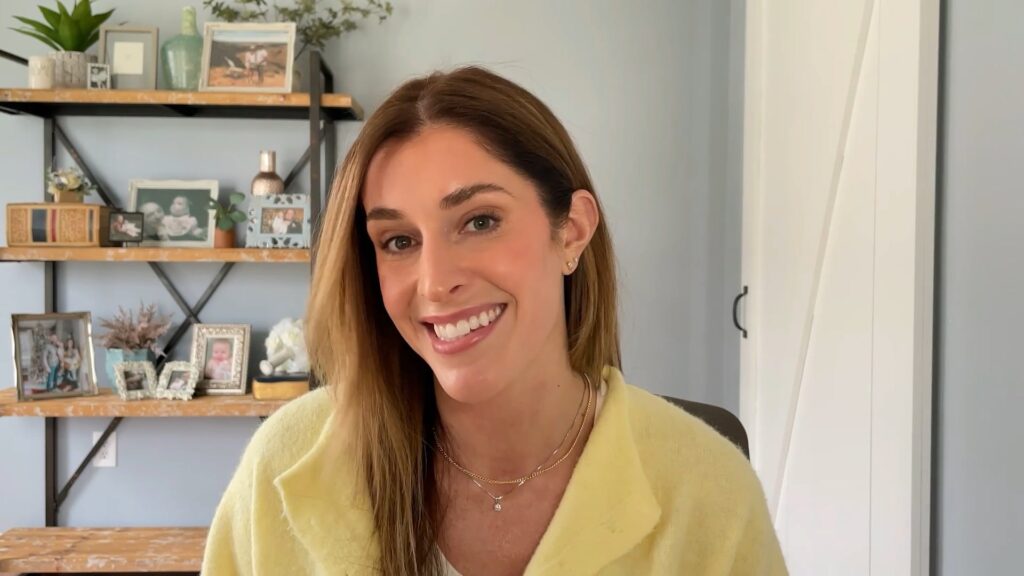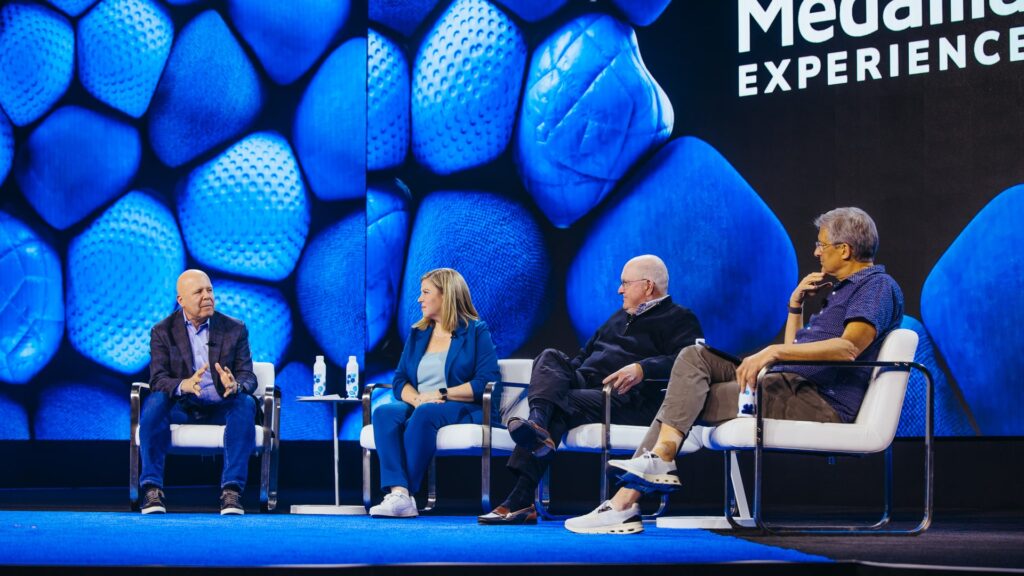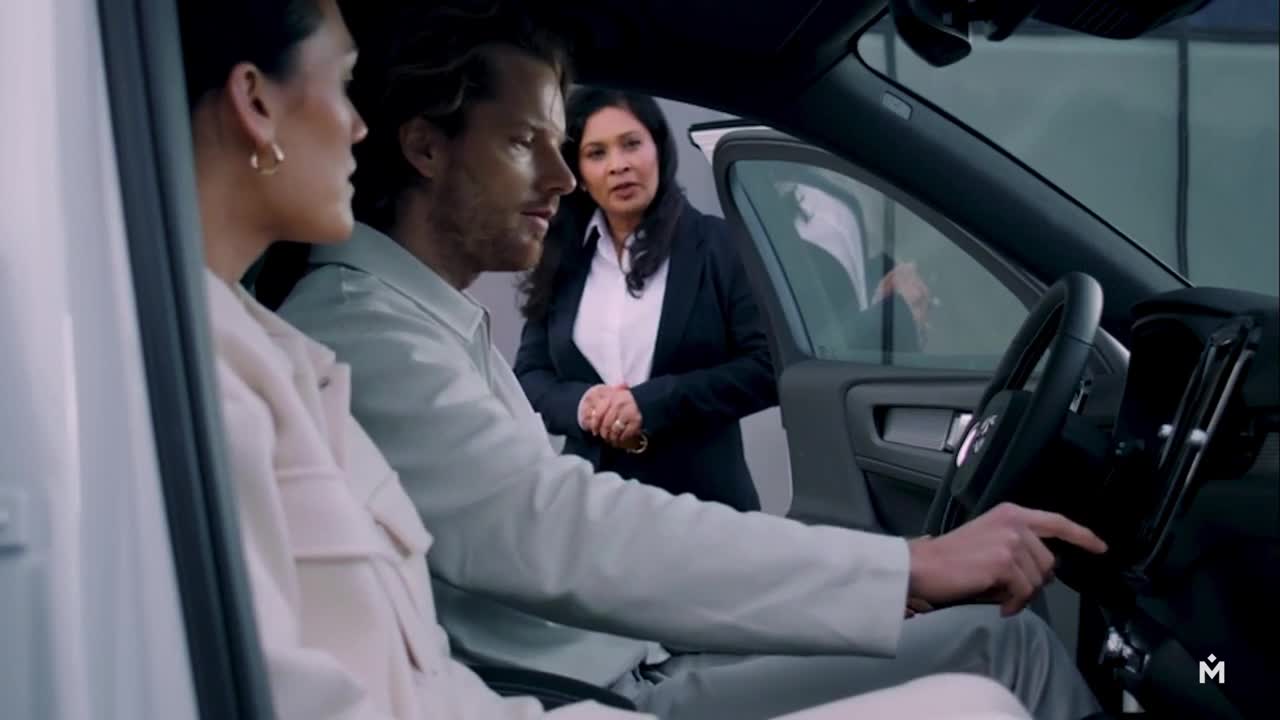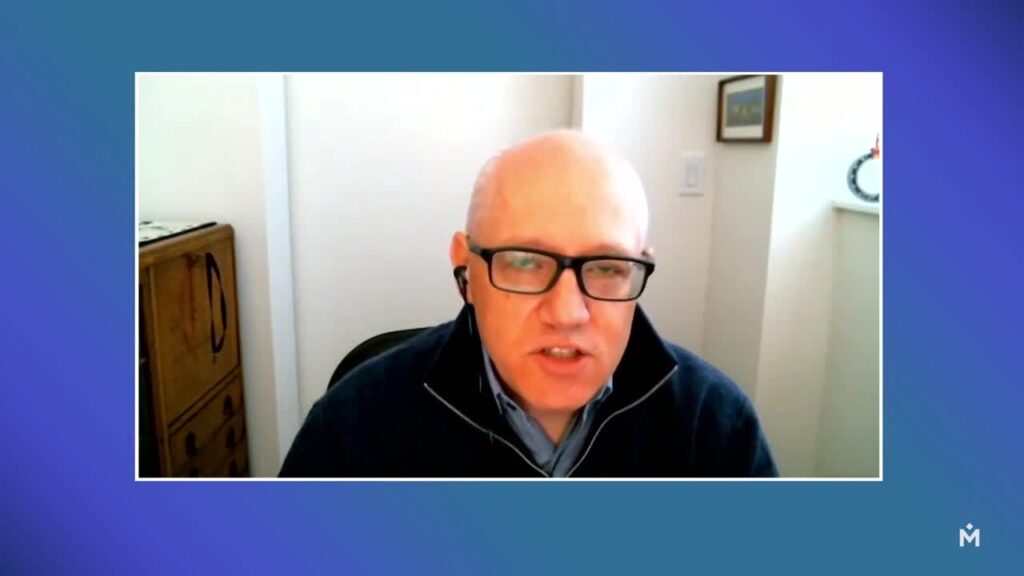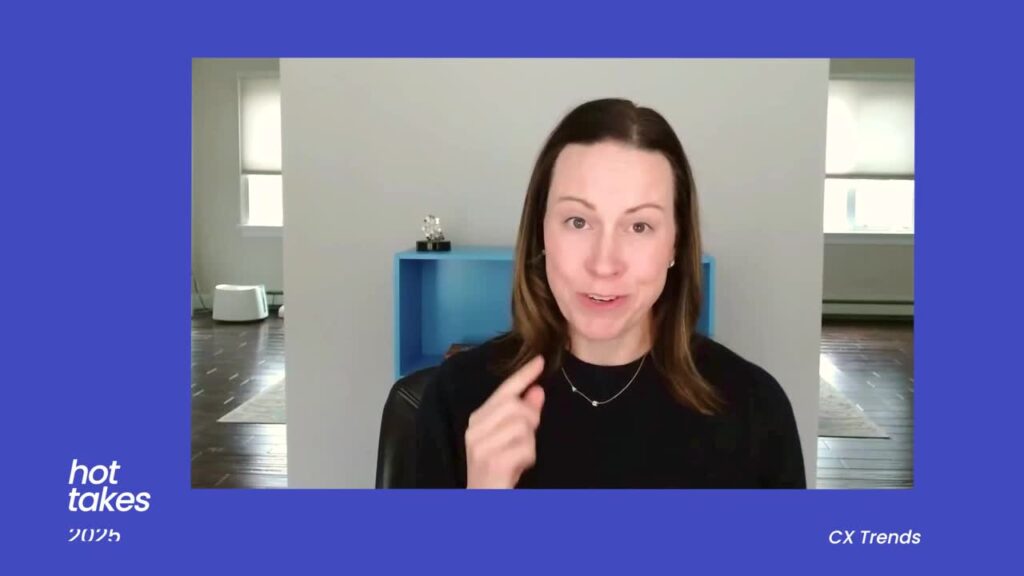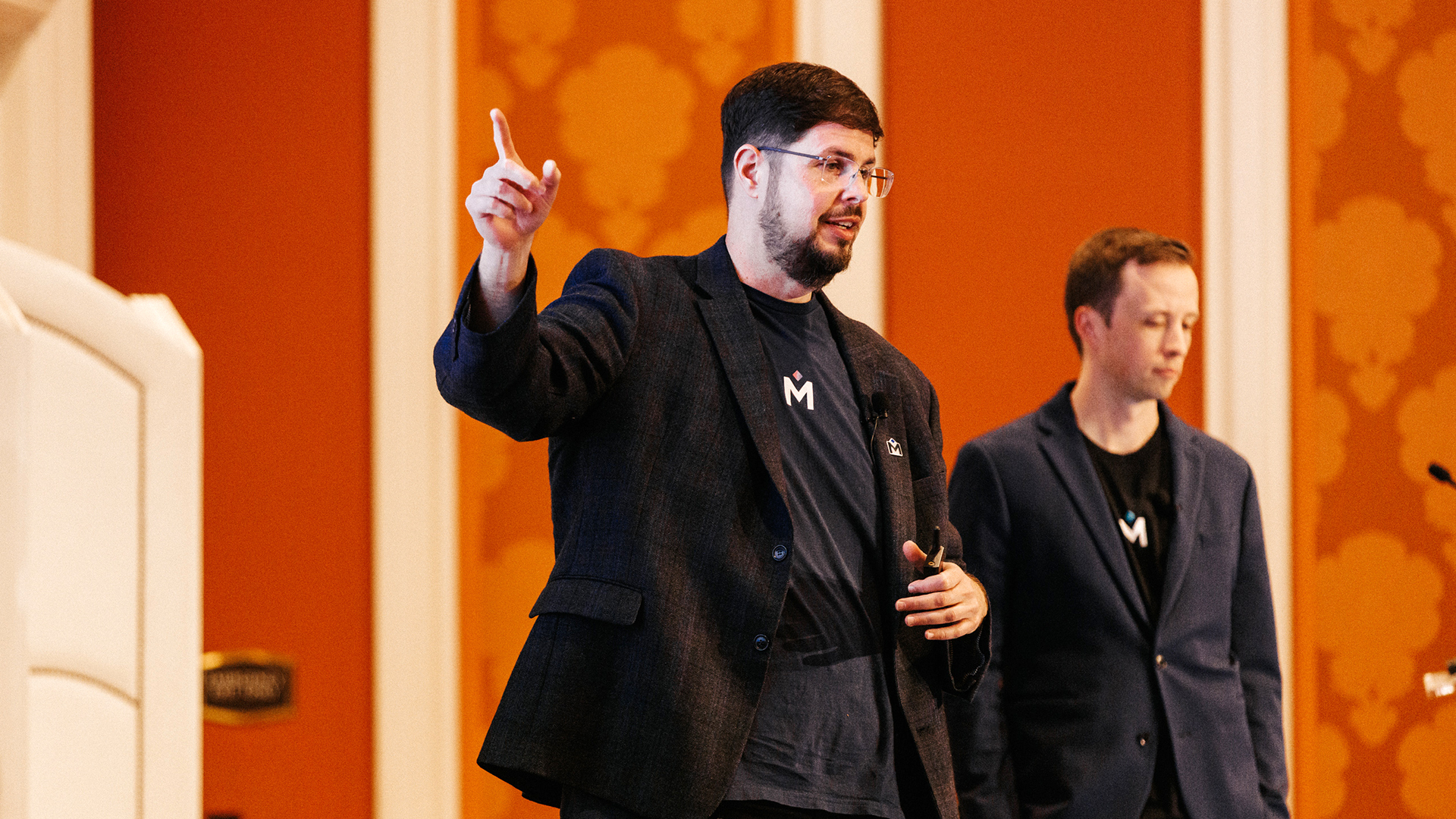Spencer Thomas: [00:00:00] Thank you everybody for attending the last breakout session of experience 25. My name is Spencer Thomas. I’m a digital experience advisor with Medallia presenting, orchestrating seamless cross channel experiences with my co-presenter, Keith Kmett.
Keith Kmett: I am a customer experience advisor as well. Happy to be up on stage with Spencer.
Spencer Thomas: Yeah, so we’re gonna jump into it. This one will be fairly interactive. We’ve got a lot of good stories to tell you guys about. Different things from our own personal cross channel experiences and how it can apply to your brand. So excited to get into it. As we jump in, we’re gonna get into a little bit of why we’re here.
So go for it.
Keith Kmett: Yeah. So one of the things that we always like to start out with that kind of set the tone here is the part around seamless omnichannel journeys and things like that is we have to acknowledge that when customers share their data with us, they’re really saying, we want you to know me. So it’s really important to really hone in this is our chance to deliver on this promise.
They’re giving us this gift of data about themselves. [00:01:00] Why? Because they want us to know them. So that’s part of the brand. It’s just kind of part of that, that promise that we’re trying to deliver on that. Super important. Yeah.
Spencer Thomas: So we’ll get into today’s agenda here. Break it into three different sections.
So first is defining what a seamless experience is. That gut feeling when you make every green light. We’ll get into that in a little bit. Keith will jump into creating cross channel journey map. So actually, how do we figure out what the optimal cross channel experience should look like ahead of time?
And then when you’re working across channels, across teams, there’s different ways to align across those teams, ways of working with those different teams. What, can you go back on Monday, schedule some meetings with some various teams? What do we need to talk about? How do we align on goals? So we’ll have some strategies for that.
So as we dig into it here, first we’re going to define. What a seamless experience is. So we’re gonna start off with the textbook definition here. A seamless experience is a customer journey that’s smooth, efficient, and enjoyable with no mistakes, delays or setbacks. Okay? It’s a fine [00:02:00] definition, but to me it is that feeling that you have inside.
Oh, that went really well. Oh, that was smooth a couple weeks ago when I dropped both my boys off at daycare. It’s fairly close, maybe a mile and a half. It took me three minutes. I literally made every green light, but it’s. All of those things that had to happen. For that to happen, all the red lights had to happen on the other side.
I had to be going just the right speed to make it through. And once I got there, it’s, I it wasn’t like, oh wow, what a great experience that was. It was almost like that’s how it should always be. And so every time those types of experiences happen with a particular brand, even if it’s your competitor’s brand, that now raises the bar for customer expectations for those
Keith Kmett: moments.
Yeah, exactly. And there’s a lot of experiences that we’ve all had where. And this is where sometimes when you were looking at feedback, we’re looking for these people who are saying, like you just mentioned Hey, wow. Oh my gosh, this was a great experience. Sometimes the absence of that, because it’s just like this should be the way it always should be.
Sometimes we’re actually maybe just trying to move from negative to neutral instead of just positive. [00:03:00] So thinking about that and from how to translate into the insights is sometimes. We’re hearing about bad experiences, and if we remove that friction, sometimes we’re gonna hear nothing. And that’s okay too, that’s a success.
Spencer Thomas: Yep. So we’re gonna start, fortunately with some negative experiences. What does it feel like when a brand doesn’t know you? Awkward, frustrating. Often you’re repeating yourself over and over again while I was just on your website, and I have to explain what I was doing again, to somebody in a call center.
I think we’ve all been there. We’ve all done that personal story. I. Purchased a tv a couple years ago in a large freight box from a cheap deal app, and I opened the box and knew something was wrong immediately. The panel of the TV was separate from the screen, like it had fallen apart in the box, so I go online onto a digital experience, trying to print out a return slip.
The return slip itself was more for a small box and envelope, not a freight delivery. So this item, again, was delivered on a larger truck, not something that I could just print off a slip [00:04:00] for it. When I called in, I explained this experience to somebody that had really no context about the US Mail system or anything like that, and they explained no, they, you should just go online.
Here’s the place to do it. This is probably what they were instructed to do from the call center side. People are calling in about returns. You instruct them about this is the returns experience. I explained, no, that slip is not the slip. It should be. What ended up happening was I put that slip on and just said let’s see.
And somebody at USPS, a third party was nice enough just to pick it up, brought it to their office, let me a handwritten note and said, Hey, we took care of it, even though it was not something that they would normally pick up. It was outsized their normal size. So it wasn’t actually able to solve the issue with the company I was doing business with.
They ended up sending me a refund because U-S-P-S-A person just went out of their way above me. I don’t even know who they were. Left a handwritten note. So that type of experience, I’m not doing business with that brand anymore. I bought a TV so they could just hand deliver it into my house, make sure that it was not broken in case it was.
So poor experience. But [00:05:00] we consider these green light experiences. What about these? So attending a lot of sporting events, this is something I encounter quite a bit. You might go to a game, a concert, something like that, and the last thing you want to do is stand in line, waste time, waiting to get a drink, food, whatever that might be.
So some data we collected from cited from an Oracle study, 45% of people are going to abandon a long concession line without making a purchase. So what some stadiums and places have done is sought to improve this experience by connecting some digital meets real type experiences. So specifically incorporating these walkthrough type experiences where you can either scan your app scan your id, credit card, something like that, and you can literally walk in, grab a drink, leave, get back in your seat in three minutes.
What that also does is it frees up the other lines for people that are just getting food, something that’s a bit more, you might need more that one-on-one connection with somebody to fulfill that purchase. So it makes both your experience better, it makes other people’s [00:06:00] experiences better because you are improving that.
Line efficiency, this type of thing. There’s a number of other teams, the LA Clippers, the Cleveland Cavaliers that have done. Similar type things. Kind of building their fan experience with, starting with the digital experience first, download the app. Your tickets are on the app. Your fan preferences are on the app.
So now we know, oh, you have little kids. You like coming to day games on weekends. Now we can market to you in that way. Hey, we have a game coming up. Hey, your favorite player is starting something like that. You can have that more personalized type experience. You’re also able to use that app to make purchases.
To grab drinks. All that sort of in stadium experience is then made better by that digital experience. Using an app for something useful, not just something that you’re kinda endlessly scrolling through, using it more as a tool.
Keith Kmett: And just to interject a little bit there, Spencer, like what you’re saying is I’m giving you more data now you know me.
Now you’re taking that turning in into action, right? Yeah. And the simplest way to get that wrong, for example, I order [00:07:00] shoes off of a shoe co company. I bought the shoes. But then for the next two weeks, I see nothing but ads for the shoes I just bought. It’s wow, that’s super annoying. I see everybody nodding.
Yep. All you had to do was now start offering me socks. That’s, it is I bought shoes, give me socks. So it’s the simple things, but sometimes you’re amazed at how fast we don’t think about that connectedness. Yep.
Spencer Thomas: So I believe during one of the keynotes yesterday, somebody mentioned a poor DMV experience.
I have a positive DMV experience to tell you about, and it happened just last month. I went online first. It started with a digital experience. I set an appointment online for 9:00 AM on a Thursday. The day I was off work, I showed up at about 8 55 and the person the clerk, got my name. Okay, great.
We were expecting you. Let’s stand over here. Did the vision test. She brings an iPad with her. Okay, I sent all the letters, types in. Okay. Please take a seat here. Anticipating 30 minutes or so to go by, just doing nothing. Two minutes later I hear my number called. I also got a text simultaneously, [00:08:00] maybe if I had my headphones in or if I was wandering off, something like that.
But they have this very streamlined in, in-person experience that was, that started with that digital experience. So answer some questions with that guy. Went to the next person, got my picture taken. Got my temporary ID was back in my car by 9:00 AM the time my appointment was supposed to start. To me, I sat down as a CX professional.
I was thinking that was an orchestrated experience, right? I’m plugging this into this presentation because like I literally went out of my way to recommend my DMV experience to friends and family. So I was a walking NPS Go renew
Keith Kmett: your driver’s license. Yeah. Yeah. Not in my state. It was three hours. I had to take half the day off and then it was crazy.
Spencer Thomas: Yeah. So I was thinking, Hey guys, you’ve been to the dmv. If you need your picture taken, I’d recommend it. It’s great. So yeah, state of Colorado, got this buttoned up. Actually made a, something that could have been dreadful into something that was Oh. [00:09:00]
Keith Kmett: Alright. You design, maybe you orchestra.
Yeah. There’s your feedback. Yeah. Yeah. Keep up the good one. Satisfied
Spencer Thomas: customer. Yeah. All right. So yeah, Keith, I’ll let you take over here. Go into some cross channel journey mapping.
Keith Kmett: Yeah. So cross channel journey mapping. Everybody loves journey maps, right? Yes. I love journey maps. That’s my jam, actually.
Just Spencer was doing earlier, we just wanna make sure everybody understands what the definition of a journey map is. I love Forrester’s new definition here as. That’s a customer’s path and perception as they pursue a goal. So one thing I’ll just caveat here ’cause I can’t help myself, is if you think it’s here’s the journey everybody takes.
You’ve already said that wrong. Like you’ve got your wording wrong, everything else, everybody can’t have the same goal. You need to really understand what goals do your customers have. That’s the best way to understand how you’re gonna know them along that path. So that’s a lot a lot to keep in.
And then understanding their perceptions, obviously. So I could spend all day just on this slide, let’s move forward the [00:10:00] customer’s path, just like Spencer just described, right? He just talked about how a digital path moved into a physical path and what happened with that. And sometimes we forget this, we’re guilty of it because we work.
Sadly in silos a lot of times, right? What happens is we end up going the digital team is a digital website. It’s the digital experience. Wait, is it the digital experience? Spencer started on digital, but then he ended up in a physical, and the process was seamless. We’ve gotta think and design journeys and that matter.
We gotta think about where they might leave the digital and what paths they might take. So it’s really easy to forget that when we talk about journeys. Don’t just think about the channels, think about the real path your customers are gonna take along their pursuit to that goal. Some of these are
Spencer Thomas: happening simultaneously now.
Oh yeah. The consideration purchase when you’re in a retail space, a physical store, a lot of these retail spaces have in store mode. So you’re both having the retail [00:11:00] experience. While there may also be a discovery happening, a recommendation happening. A promotion happening with the digital experience simultaneously.
So we present this as linear, but often it can be squished, especially in that phase happening at the
Keith Kmett: same time. Yeah. Sorry, go ahead. It’s a good call. It’s a good call out, Spencer. Thank you. One McKinsey research did this, and I love this because I like to talk a lot about how. We sometimes get really obsessed about measuring all the transactions.
Hey, I’m gonna measure everything along the journey, and then when I take up all the scores across the entire journey, I’m gonna add ’em all up and that’s gonna be like my predictive of how people interpret this journey. Sorry, that’s wrong. So what are we learning from here? Here’s a good example. I’ll go quickly on this, but this onboarding journey that a media company did.
It was spanned over three months. Wasn’t always linear as Spencer just called out, right? But in that journey, they had nine phone calls, multiple emails. It had a home [00:12:00] visit, all these things, right? What happens every time they call in, oh, the agent Will Pleasant. My home visit was pleasant. 90% satisfaction the whole way along.
You ask him about the entire journey, you got a 40% what? How’s that possible? Yeah, simple. You can’t sum up all the interactions and hope that you’re gonna get a good score over the entire journey. Why? I didn’t want nine phone calls. I didn’t want all the multiple emails. You didn’t know me.
It’s like you, you went, it was not a green light experience. Super powerful here to remember. You can’t just sum up all the call centers and all the other interactions and get a result that you were expecting. So as we were talking earlier this is just another way and we love, since most of us may have taken a flight recently, we thought we’d use some airline examples and unlocking those seamless experiences, Spencer even [00:13:00] called out some other green light experiences, right?
We’re seeing this evolution even in the airline and different airlines. I’m sure we could all compare airline stories here. Some of these apps and bookings and everything else, were all different ways of trying to get that green light experience. We’ve seen, innovation happening around for the longest time, printed out boarding passes.
I can’t help but notice I worked with some airline industries. I. And I can’t help but notice how many people will have printouts still. And I’m like, wow, that’s amazing to me. And the reason I always think this is because I also go back to that operational efficiency. I’m like, print costs money.
Sending you a digital ticket on your phone doesn’t cost as much money to print out the paper, right? So I’m like, I just can’t help but look at the dollars and cents and financial linkage there. But as you can see here, there’s other opportunities still that we’ve seen, right? If you checked your bag, you’ve gotta go to find the belt and everything else.
But then sometimes you get to the belt and what you’re waiting, right? And you have no idea. And what has Amazon and other things [00:14:00] I. Like those experiences, what’s that taught us? We don’t like to wait is what it’s taught us. And what’s that mean? That means, I want to know, just like you might see on Amazon or whatever, is it around the corner?
Is it just, just around the corner, right? So like, why not enhance that to make that more of a green light experience, things like that. And then also tying it back to loyalty. Sometimes you go through this journey, you think you’re getting loyalty points, you’re not sure. There’s a lot of different things, but one other thing that Spencer and I really wanted to show was we worked with an airline who said, we wanna understand and monitor how do we monitor the health of the journey overall, not just in transactionally, but like overall holistically, and find those spots.
And so what we did is we partnered with the professional services team of meda, obviously, and we worked together and worked with the client and they created this dashboard, which actually is exists today. In everybody’s instance, right? This is called a journey view module. And [00:15:00] while I’m sure some of my product team friends here are like, wow, we’ve had that for a long time.
Sometimes it takes, a little bit of innovation, a little bit of different ways of looking at it to say. How might we do this different? How might we use it differently? The process to getting this, and this is actual screenshot, but I’ll just caveat this, I changed the numbers. I can’t show their data, right?
Let’s just be careful here, but a lot of people have asked me this even during this conference this week is, Hey, how do I bring this together? How can I view this in Medallia in the dashboard? So this is. How we did it. The one thing I can’t show you, but it does exist, is on any one of these tiles I can actually click and a side panel opens and it shows me all the text analytics and comments associated to that moment and the journey and all with the, just the power of the filters.
Now, how did they do it? First of all, we didn’t just go build it. We used a whiteboard post-it notes, try to figure out, so if you’re thinking I want this, great. If you [00:16:00] want it first, do a prototype, map it out. Then you might realize, do I have all the data I need to do this? That was something we had to work on with them.
But within three months, we were able to get all the data we needed, and here we have now, I’m gonna interact with you all and ask you. What pops out? Anything pop out in particular when you’re looking at this data? If I have an on time flight, I want to know what the experience of on time looks like. If I have a delay flight, I already know it’s gonna be more negative.
So let’s see what it, how those two compare. So if you’re looking at this and you know you can’t boil the ocean, right? You have to pick where you’re gonna focus on. I’ll call out the, this team actually recognize something really interesting. So when they thought about their person, what’s the goal that their persona is having?
They’re thinking about their business traveler, the higher end traveler, the person who’s going to use a lot of their services over and over [00:17:00] again. What they saw was the lounge experience and in the lounge experience, it’s not great, even if it’s on time. And that gets way worse obviously because delay flight means they’re probably trying to find room in the lounges, right?
Obviously the rebooking experience in a delay flight’s gonna be bad, but if you’re a business traveler, that lounge experience is part of the reason you’re in that executive club. So they actually solved this data and started saying not only ’cause if you see the lounge, there’s a ton of. Negative comments there that they can learn from and really combine to say, how do we do this different?
And now they’re actually use this to help justify why they might expand the lounge area, have more of an executive VIP suite room for those types of clients so that they’re trying to make sure that they continue to win their business. Again, could spend all day on this slide. Love it. And again, if talk to your professional services [00:18:00] team if you.
Wanna have this it, it’s not it’s just something you have to really work on, but definitely take the time to map it out. Alright Spencer, so we just showed everybody how to monitor it, but like you said, we’ve also gotta get people aligned to working on some stuff. Yeah,
Spencer Thomas: exactly.
Keith Kmett: So the
Spencer Thomas: idea here is going back to work on Monday, we’re gonna take a long weekend.
After this week here, what should we talk about? Who should we meet with? So first thing we should understand is why companies fail to connect these types of experiences. First, as we’ve alluded to thus far, is nobody owns the entire experience. You might have channel managers, product managers, but if we just measure each touch point and don’t look at the holistic view, it doesn’t add up to the full experience, so we need to gain alignment across the entire experience.
Second prioritization is difficult as well, even if you get everybody in the same room agreeing. Yes, we need to make sure that we have a, b, c across channels all lined up. Sometimes the next best action. There could be different opinions about that. One could cost more than another. There needs to be a way to [00:19:00] prioritize these next best actions in the world I live in digital.
Some next best actions if you’re having trouble online, could be a live chat. I. Which could be personalized, but it could also just be something that somebody has to loop through again, or it could be a callback. Both could solve the customer’s issue. One could cost more, but we have to prioritize what’s important.
Maybe you prioritize the callback for more of the VIP customers based on some data you’d know about them, and then prioritize the live chat for kind of the middle tier of customers. And then our frontline teams have limited access to the CX insights that they need. So I think about this in terms of a digital purchase experience.
So you might be purchasing something online in anticipation for a big trip coming up in a couple weeks. That’s a digital experience. But then on the company that I’m transacting with, it’s both a digital experience, a merchandising experience, and then it could end up being a contact center experience if something goes wrong.
So what this represents is the initial excitement I have. I just bought some new ski equipment for a trip I have [00:20:00] coming up. I get. That confirmation email. All right. I’m getting excited about it, but then I haven’t really heard anything. Some other companies will send me status updates about where my package is.
I haven’t seen anything yet. I’m getting a little bit worried. Another week goes by getting a bit more worried I’m not on the green path, and then I end up calling somebody and that contact center’s job is to move me from this angry face all the way back up to the green line. They’re facing the brunt of that entire issue.
And if I got a, maybe I have a. Conversation with somebody. Maybe we figured out, maybe not. I might get a survey afterwards. What team then gets the negative score? Because of my negative experience, the contact center team, but it was a digital and merchandising issue. They were not aligned on how many items were in stock.
I ended up purchasing something that was not in stock. Yeah, that’s a big problem. And then again, it’s the contact center that kind of faces the brunt of that. F experience when I have to call in, they have to solve it for me, move me back to the green path, or at least as close as they possibly can [00:21:00] in this case, nothing they could really do.
Keith Kmett: One of the things that Spencer’s pointing out is that you mentioned how customer experience, we’re not a team that can tackle this all, and a lot of times you’ve always heard customer experience needs to break down silos. What does that mean? How are you gonna do it? The best way to do it define what is the seamless journey you want to deliver, right?
Really define it, get business, buy into, this is the new seamless journey we want to deliver, and then organize around that journey. So use the journey to be the thing that like helps you thread who should be involved, what parts of their do they own, and really collaborate to improve along the way. Your journeys can really be used in almost in a project management style.
The way I always use them was, here’s my future state. Here’s where we currently are, and I would literally give a percentage of how close we’re moving towards the future state. And then here are some roadblocks. I know it sounds simple, but it really works and is effective and it’s sometimes better than a simple little [00:22:00] status sheet that just says project screen or projects yellow.
You really need to keep selling the story because otherwise you don’t break down the silos and you lose interest from all the people trying to help you move forward.
Spencer Thomas: Yeah. I think we can take even some inspiration from what Will Guero was speaking about yesterday. Where it was, let’s analyze every single customer touchpoint that we have.
In this case, we don’t want to put 190 things on the slide or whatever the number it was, but find some of those touch points and figure out which ones we can optimize, figure out, okay, there’s a seam there and there. Alright, we can fix that seam right there.
Keith Kmett: Start somewhere. And a lot of times we use text analytics and other data from our surveys to say, here are the top five detractor moments along the journey.
Like just start simple. Start somewhere you identify three to five, and then say who around the organization. You always need to ask the question, is anybody already working on this problem? And then if nobody’s working on it, okay, who can help? But I always learn from my, even my prior world and working in corporate is you [00:23:00] need to sometimes ask, is anybody else already working on this?
And make sure that you’re not stepping on toes. Yep. Yep. Yeah. And here’s a great example. The CX team with this client we worked with, they’re a financial services firm, and the CX team used medion. They started seeing this customer frustration on online payments. Wow. Online payments, driving up calls, just like Spencer mentioned, who’s getting the brunt of this?
The call center? And they call up it and they’re like, Hey, we think the, there’s something wrong with the website. It says. Nope. Green lights, it’s all good. So they’re like, okay, maybe we need to ask the UX team to do a little research because, we’re, we need to go a little here. And I’ll be honest if this client wasn’t using our digital experience suite, so they didn’t have the behavioral analytics, but if they had that, they may have been able to fight that.
But the, they call it the UX team as well and the digital team, and they start to investigate. They see that the key action, like somehow the redesign happened and everybody knows this if you have any experience with [00:24:00] this basically that button to do their online payments and things got moved and it got moved to a place where people weren’t just seeing it naturally.
So they thought, I don’t know how to do this. ’cause nobody scrolls, nobody reads online. Let’s just face it. That’s why there is a call center. And so what happens? The right oh, that costs money. Sorry the UX team redesigns that interface. What they started to do is then this team really started to keep track of these types of experiences, and they said, let’s keep track how much we’re saving in the negative experiences we’re preventing, sometimes you have to do a little bit of a how much did we actually prevent?
Money going out the door. I’ve done this in my own career where it’s hey, if we fix the login, my prior company, we were building an app, $4 million application behind the login. It was gonna change the login. Make it harder to log in. I was like, wait, we’re spending 4 million behind the login, but nobody’s gonna be able to log in [00:25:00] anymore.
How’s that work? So if we change the login experience, we’re ruining our $4 million investment. And then wondering why people don’t use it. And we would keep track of those types of stories. That’s the kind of value too. It’s not always, growth is great, but sometimes preventative financial ruin is also a good story to tell.
You can all, all see that. Yeah. Different metrics there.
Spencer Thomas: So I mentioned previously, like identifying where the seams are. This is a pretty common one from the website, and we’ve been talking about website in a call center. It’s been a pretty popular theme this week. But through some digital feedback data and Medallia’s, digital experience analytics, we noticed that the Contact US page specifically had a high prevalence of low satisfaction as indicated by surveys.
And so we dug into our DXA platform to figure out. What sort of frustration behaviors are happening here to then make it easier for somebody to. Receive a call. So in this case, they then got a callback, essentially [00:26:00] allowing them to wait in a virtual hold. So you schedule a callback. The call center agent on the other side then has some context about what you’re calling about, and then you can solve that issue.
Again, it is identifying something that, in this case, we’re allowing them to call us. The expectation is if they’re already on the contact US page, they’re going to call us. So we’re just gonna make that experience a little bit easier, a little bit more seamless, both makes a customer feel a little bit happier and makes it a bit easier for the employee on the other side.
That point of entry is a bit easier. Hey, I see you’re having some trouble. How can I help you? Then we can move on. Hopefully save some time on those phone calls. Another interesting example here in the sporting goods retail space, some things that we know about customers. We observed that in this case, people shopping for golf equipment, golf clubs, things like that were two times more likely to visit a store.
It’s something that you need a feel for when you’re purchasing. So what action that we took, we then added more personalized club fitting and swing [00:27:00] session content. Onto those types of pages, which then resulted in better sales. Some additional things that we know about our customers. We observed a high cart abandonment rate for large physical items like workout equipment.
So by changing some of the content around in-store pickup, optimizing the content, we’re able to improve the conversion rate for this group of products from 25 to 46%. So again, it’s just taking what you know about customers, making some change in this case, something very easy, scalable, changing the website content, and then measuring some improvement after the fact.
Keith Kmett: Yeah. To wrap up and do a little summary for y’all what have we been talking about? First of all, that promise, right? If they give us their data, we need to know them. We need to really act and deliver on that promise of you’ve given you’ve entrusted us with this data, now we’re gonna know you and give you a better experience, a more green light experience, right?
What are ways you can go back Monday? Hopefully you get to a little break here, but map, prioritize key [00:28:00] journeys, unless you’re going back tonight. Sorry. The map and prioritize key journeys, right? So this is a big one. My one suggestion here. When you’re prioritizing key journeys, what does that mean? Go to where the money is.
Meaning that journey can’t just be about, any random thing. Make sure that journey really connects back to the business in some way. So understanding those journeys and then understanding where they’re giving us that, that data to know them. Unifying signals. If you have all the signal, all the different data in disparate places, it’s gonna be really hard to say, we know you.
And therefore improve the experience overall, bringing it together, listening and bringing together, orchestrating that data, right? We have also Medallia experience orchestration that can help stitch together that data to help you understand, oh, I know Spencer better, and that DMV experience is gonna be way better than what mine was.
And then lastly, like Spencer was just going through right, aligning these teams to take action around it. Sometimes you’re like, Hey, I want to do that. I want [00:29:00] to get the teams aligned, started, but then they don’t. They’re not sure what they’re aligning around. I’ve seen this time and time again, it’s let’s start a group to look at this.
But that group gets really, if you haven’t done your homework, they’re gonna lose interest quick. They’re gonna think you’re adding. A lot of work to their plate when you’re really just saying, I’m just asking you to do your job plus one, right? Just go a little bit further than what we’re doing, but you really have to be organized.
So that’s why we’re giving you this kind of a guide to help you move forward. And we have about 10 minutes or so for some q and a, but we’d also love your feedback. I’m happy to change outfits next time. Whatever you need. Spencer. We did match. Yeah. I’m glad he got my text. Yeah, but love some questions from the audience.
We’ve got runners here to help.
Q+A (2): So we’ve been talking about the customer and then obviously the employee. For those folks that actually have a third party in there where it’s not just customer employee, but you might have an independent. [00:30:00] Sales approach.
Keith Kmett: Sure.
Q+A (2): Any use cases where you’ve got that third angle, like we’ve got a triangle and not just like a linear line.
Yeah.
Keith Kmett: The B two, B2C type of approach? Yes. So I spent about 10 years in B2B, so I know exactly what you’re talking about. So my strategy around that was always, instead of worrying like I, at first I got obsessed about the B2B part. But then I realized a good strategic way approaching that is actually going to a strategic partner.
So in your, one of your businesses that you can trust and say, let’s do this exercise together to understand how you serve your customer. We’ll learn together, but how can I empower your business to be successful to your customer? We like to get obsessed with this. Oh, we gotta have that relationship with this other business.
They don’t care if you don’t care about their end customer and their end goals, right? So like I [00:31:00] used this as an approach. The relationships we had with key businesses. I mapped out their customer journeys and then said, let’s work together on how to build a seamless journey for your customer together.
And guess what? Relationship score. I’d never gotten a 95 before by that company. But yeah, it was like, okay, I don’t think they’re going anywhere why I cared more about their business than the relationship part of our business to their business. Sorry, I get passionate about that. I think I saw another hand over here first.
Q+A (3): Would love some suggestions or feedback for. When you’re at that whiteboard, preparing to map out your journey Sure. In the airline scenario, it’s very linear. A customer’s gonna do this Yeah. Before they get to the next point where I’m coming from, a customer could start at a or they could somehow hop into see, or they could come in to be, yeah, exactly. And it customers are popping all over the place and it [00:32:00] gets really overwhelming really quickly to be like, holy cow. What is the customer journey?
Keith Kmett: So I’ve been there too. Yeah, don’t assume that your homepage is the first thing they find on Google Rule number one. You have to remember, search doesn’t always take you to the homepage.
So totally been there, done that. The way I’ve, I always did it was a, and sorry, I’m just jumping in, but, and you can talk digital all day long too, but the way I always organized was 80 20 rule. You can see a broader volume of flow going down there, and this is where it’s really important that you understand who you’re targeting, like who that person is.
Or like what segment and does the business care about that segment, or are there outliers that they care about more because they wanna, they’re the ones who maybe spend more or do things. And so having that linkage back to the business. But I. Like this is where sometimes volume does that kind of and again, don’t boil the ocean.
Spencer, I think I think what you were talking about with DXA can help you identify those. Yeah. So
Spencer Thomas: What happens often is I work with customers that [00:33:00] turn on DXA, we’ll ask these questions. What’s the optimal journey? What do we want to set up? What’s your conversion goal? And it then becomes a push pull.
They’re like that’s why we got the platform. Okay, so then when you turn it on, what do you do then to figure out what is that 80 versus the 20 specifically? You would go into something like funnels or you would go into a, there’s this autogenerated journey view that shows this is how many people went down this path, and this is how many people went down that path.
Hopefully it says clean as 80 20, but it might be 40, 40, 20. Th or 10 10, 10, 10. And so you just are like at least we have 10 groups of 10. That’s something. But yeah. So that’s the, okay, we turned it on. Now we have at least a thread to pull on. When I would do work in the digital space, that’s
Keith Kmett: where we would start.
And the way we visualize that, just to add one more I just recently did one where we have the persona, but we saw that a group of people would buy 10 key products and then they would go down that kind of path. So we. We still had key [00:34:00] journeys, but we noticed that, hey, here’s these group of products, turn into a problem for the call center.
So people who are buying these products are going into this deac, having detractor moments more frequently than the rest. And that became the journey that we’re gonna focus on tracking their delivery. For example,
Q+A: you recommended journey mapping. When do you recommend journey mapping versus.
Journey analytics and automating the gathering of the true journeys. Yeah. Yeah. Versus the desired well, yeah. View of mapping.
Keith Kmett: So there is definitely two, two different ways of journey mapping, right? You can build it data-driven journeys and and then also just doing journey mapping exercises.
This is where it’s depends on the maturity of your organization, right? If you have a bunch of data and a bunch of disparate systems and, I look up Nicholas and I find eight different versions of the Nicholas. Getting to the data-driven journey is probably gonna take you a lot longer [00:35:00] than maybe just doing the more traditional mapping.
So this is where a where’s your data at? What’s the quality of your data? Ooh, I know data’s a four letter word. It’s a bad one, but it’s a, you can turn it into good things, but you have to have quality.
Q+A (4): Are you able to connect the dots between say, DXA and the call center so that. When the call comes in, that rep can see, oh, I see you’ve spent the last 10 minutes on Yeah.
The website and you seem to be struggling with X, Y, and Z.
Spencer Thomas: Yeah. So that specific callback that I showed in the background also has a mechanism to say past DXA session along with some of the score data and all of that. So that is just with that mechanism, but there’s also APIs and things like this that could pass that type of information.
To those users. So that is for the individual specific user. The thing you have to consider too is then is that frontline trained and ARM to be able to take action upon that, so there’s that element you would’ve to consider as well. There’s the training and enablement, [00:36:00] so you could think of, show me that this one specific customer.
Or just give me a daily report of what types of issues people are facing so that they know more at large. So it’s really a training and enablement question. Technically very feasible, but it’s about, again, do they know what to
Keith Kmett: do once they have it? And as a former client of Medallia, before I came to Medallia and working heavily in the contact center, all that, and that strategy of don’t give me more screens.
Get the data to where they’re at. Thinking about those integrations, that’s what Medallia does super well. We integrate with your tech stack. It’s not just this thing off to the side. How do we be a part of that tech stack? So yes, you can do it, but I’d also think about that strategy of how do we meet it where the agent, like Spencer just said, meet ’em where they’re at.
Q+A (5): Do you have an example where you did a journey mapping for a customer persona and then an employee persona and overlaid those and see, saw some converging or [00:37:00] diverging points? Oh yeah.
Keith Kmett: You’re seeing, yeah. I remember doing a journey map. For a client that where we discovered that the amount of effort the employee had to do to make, so it was like this, the employee sentiment and frustration and everything was dipping into the bottom of the graph.
Meanwhile, the customer’s ecstatic, happy, but we’re like, okay. And they were like great. Were the customers happy? Move on. And we’re like whoa. What that’s telling us is, this is an unsustainable business model. You’re gonna burn people out. And I’m like, what’s your attrition here? And they’re like, like 110%.
I was like, oh, really? No duh. But it was a, they almost needed to see the visual to say, oh, wow. Yeah. Wow. And so it was like. So we don’t need to fix the customer experience. We need to make it, how do we make the employee experience a little more seamless? Without, but then always saying, if we do this, will it [00:38:00] affect that outcome of that customer?
Because now we already know the customer. We’ve set an expectation here. How do you not move that expectation, but yet improve the experience for your employee? So it’s a great way of sometimes illustrating that. How are we doing dear? I think we’re right at, we’re outta time, so thank you everybody.
We through it.
